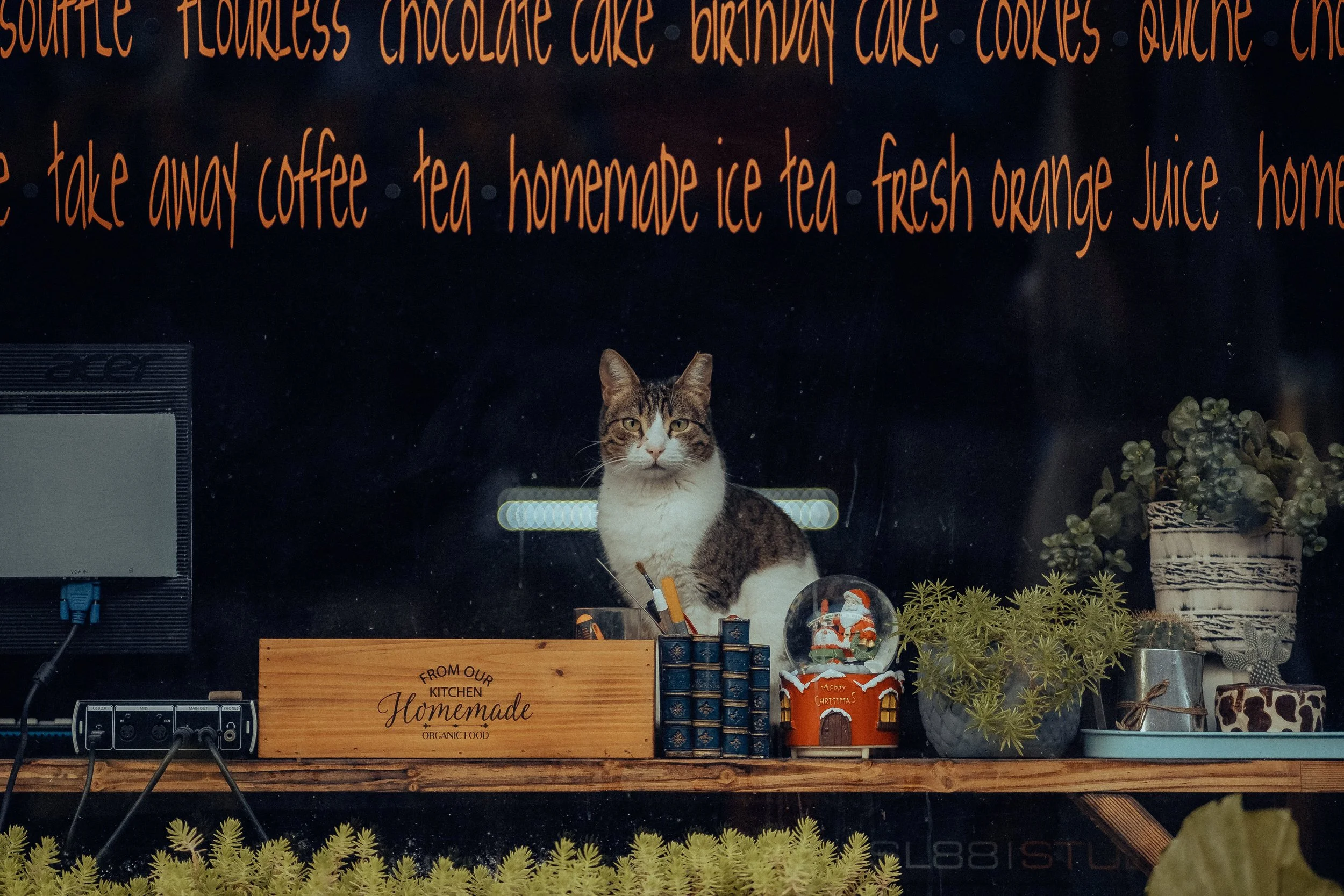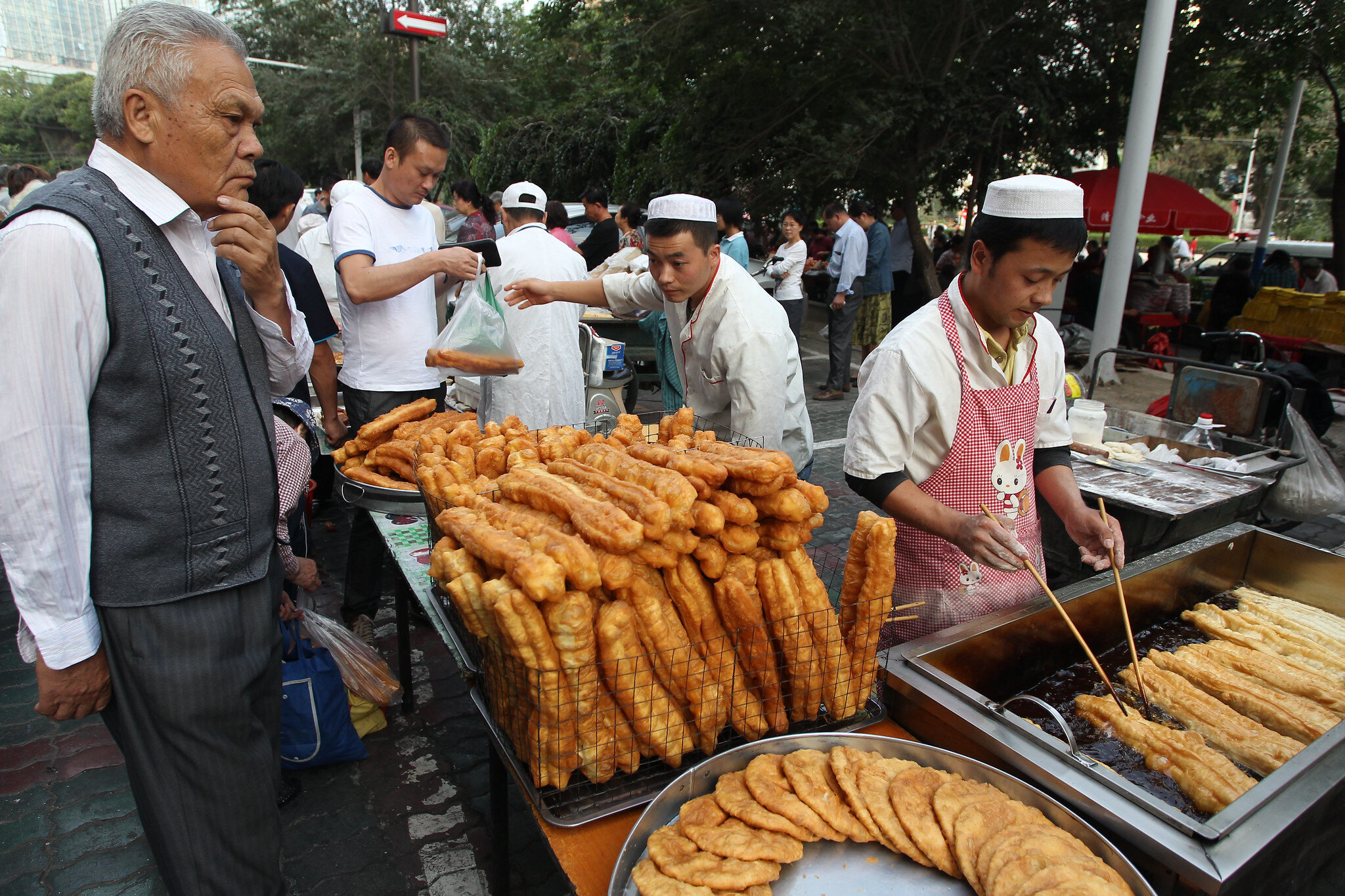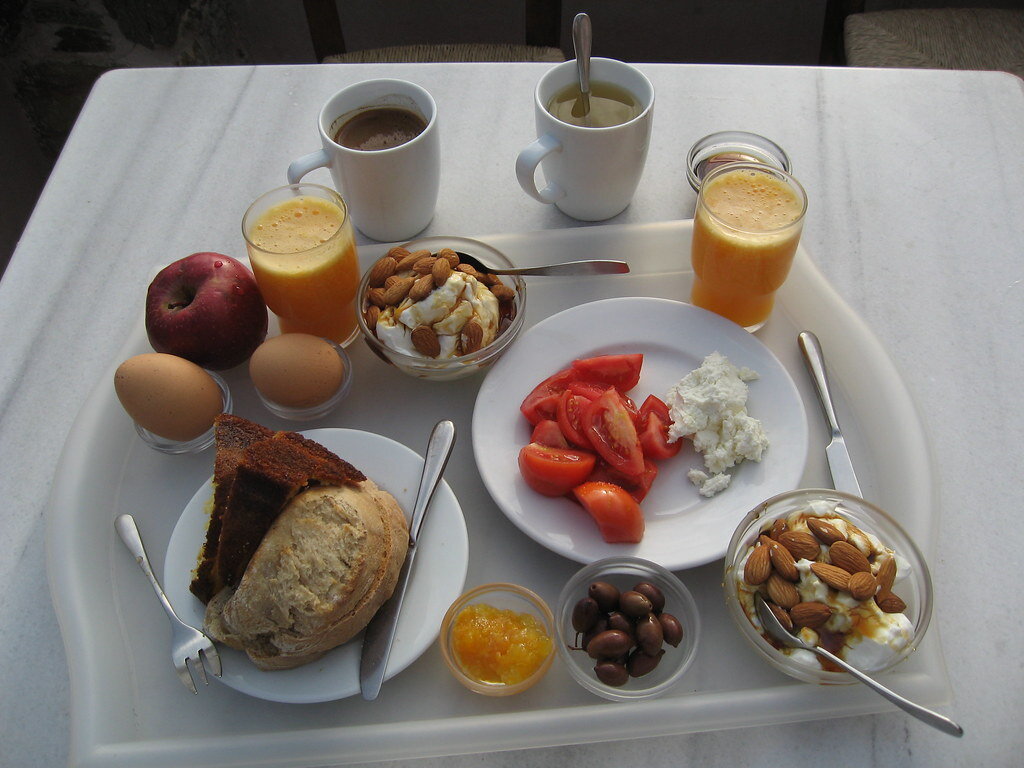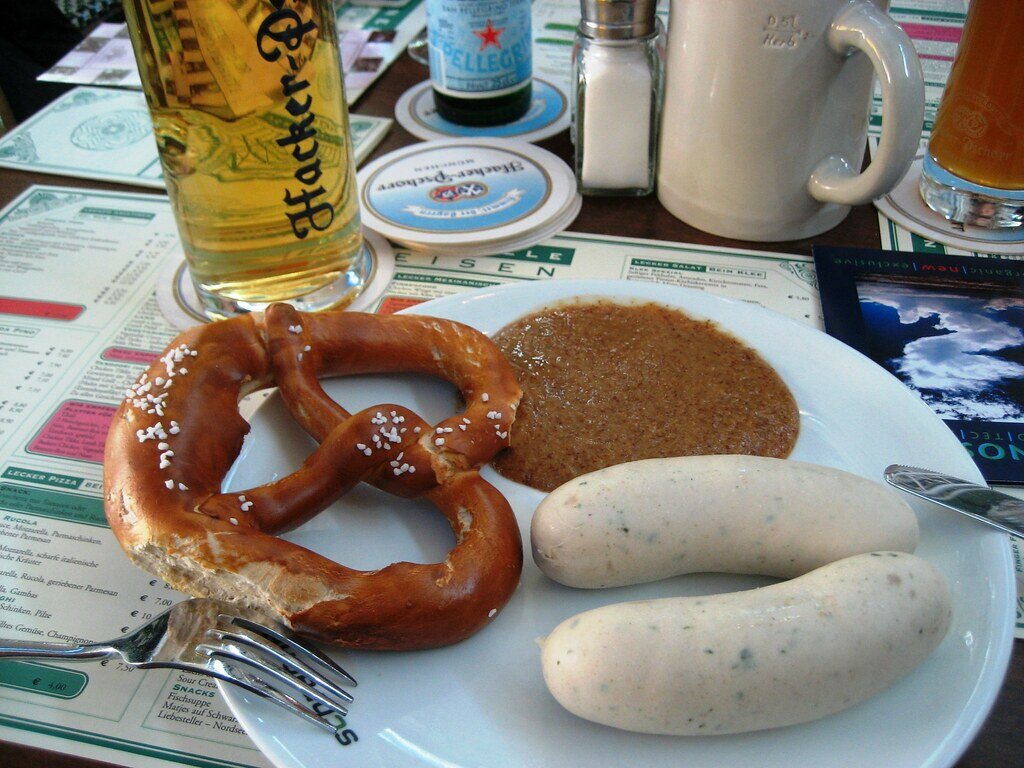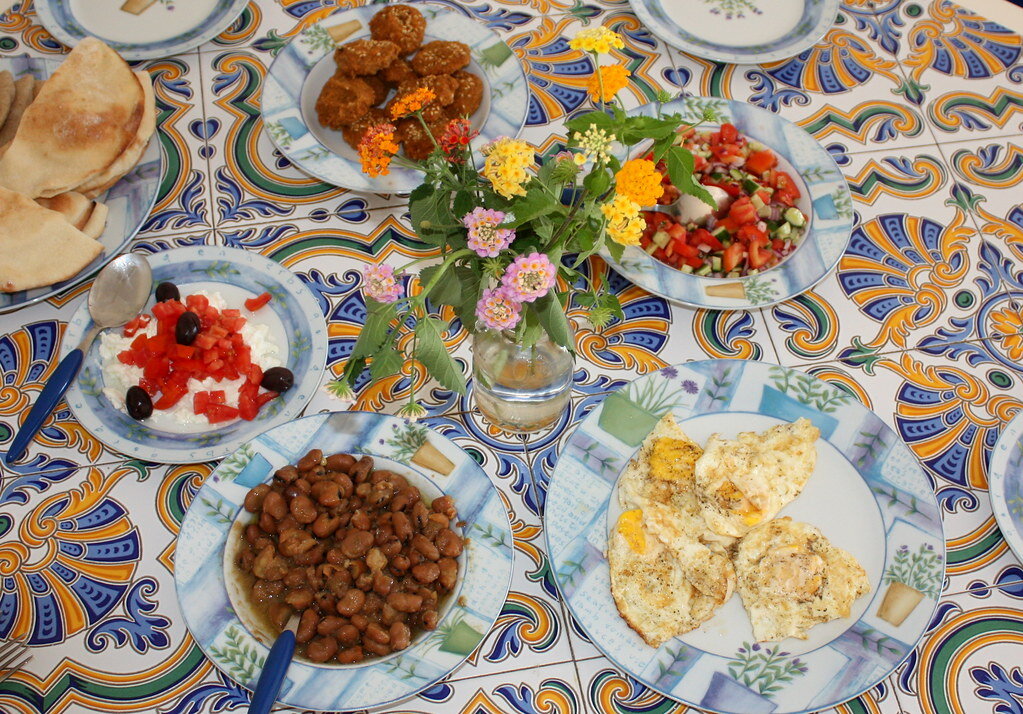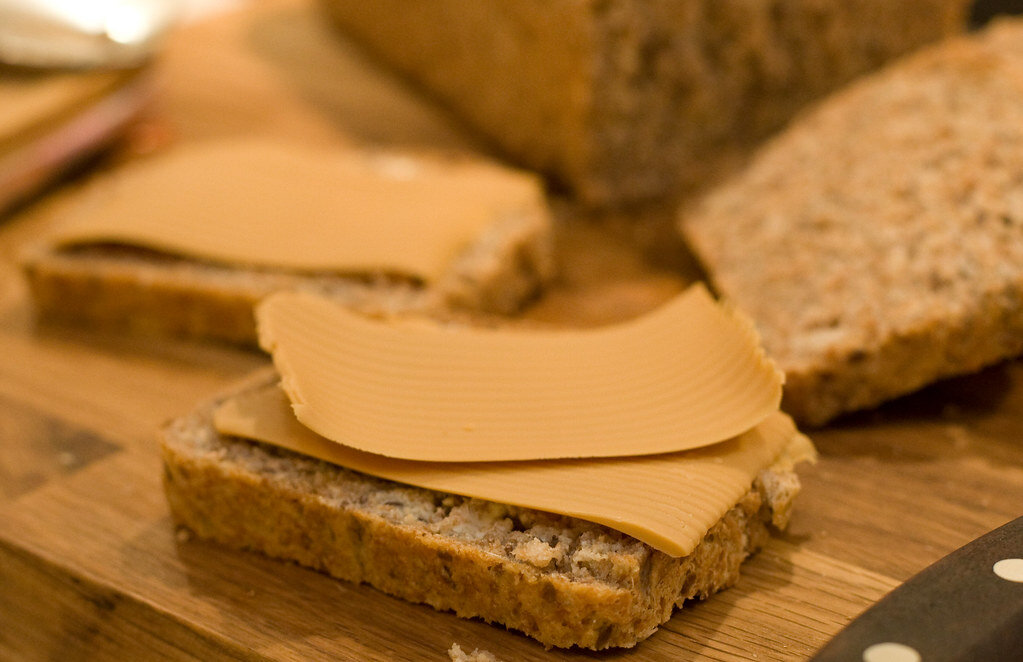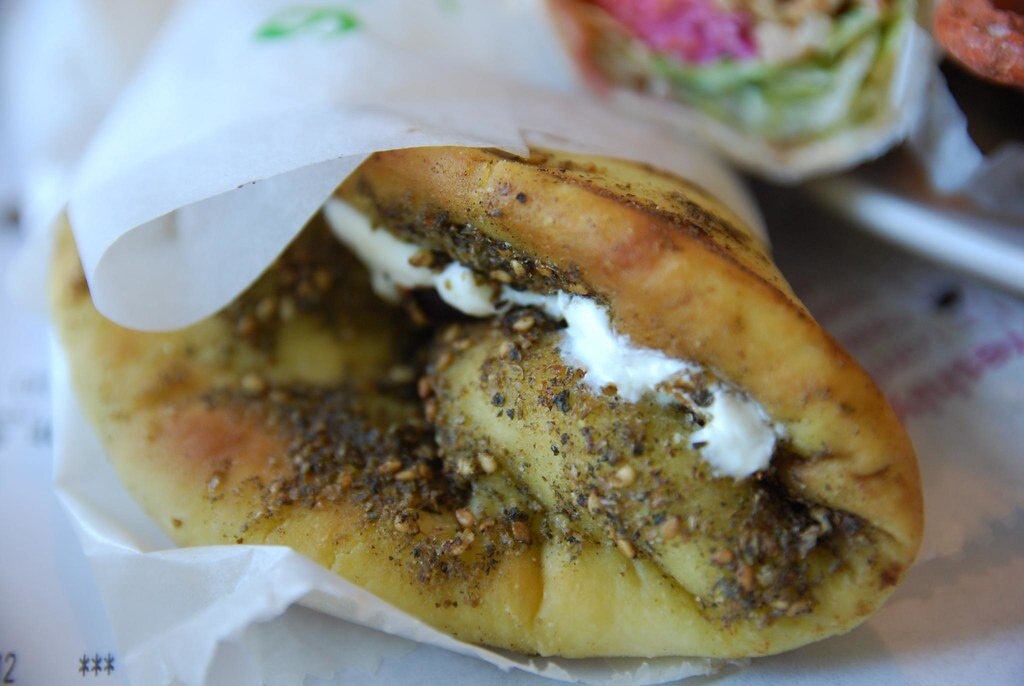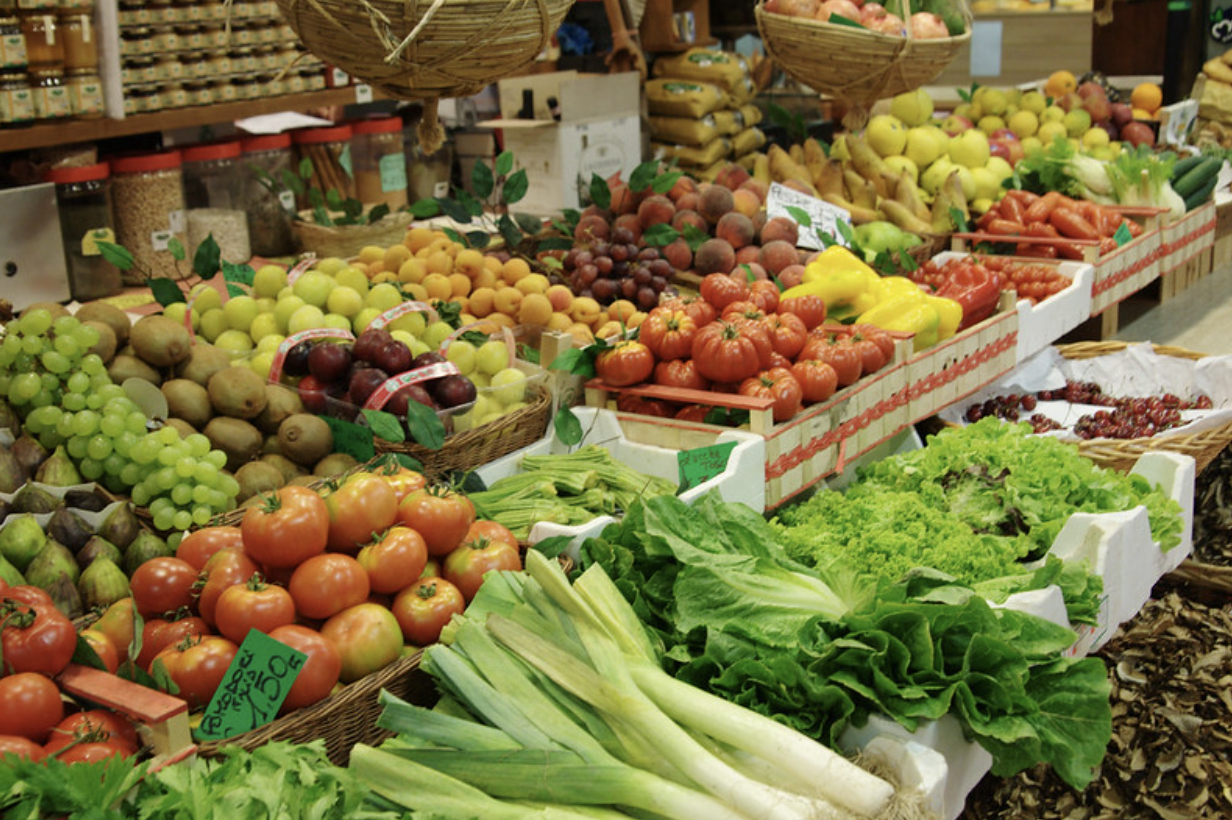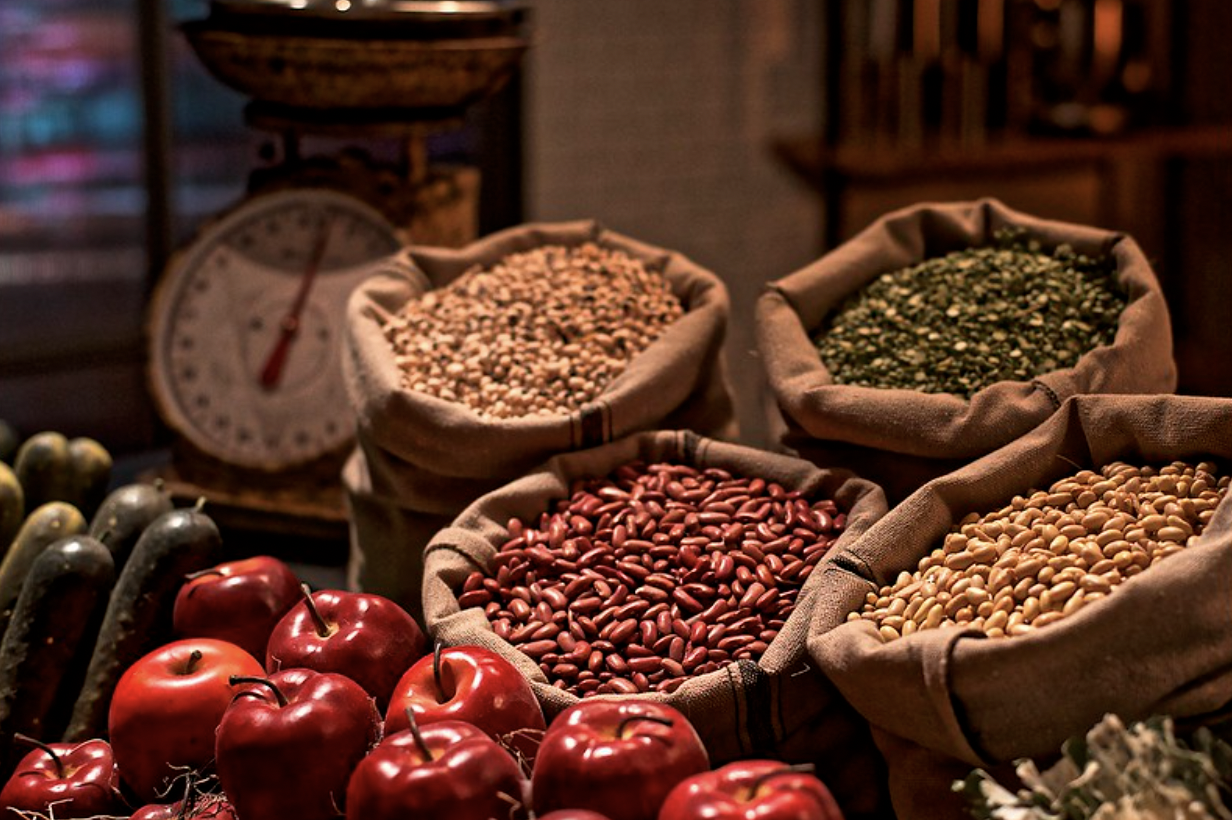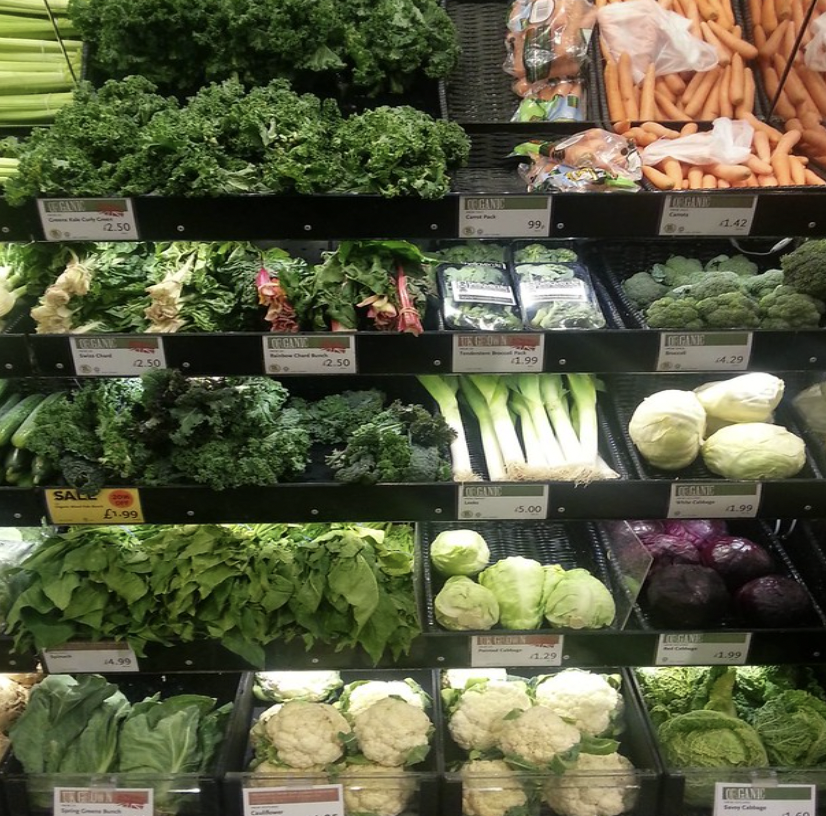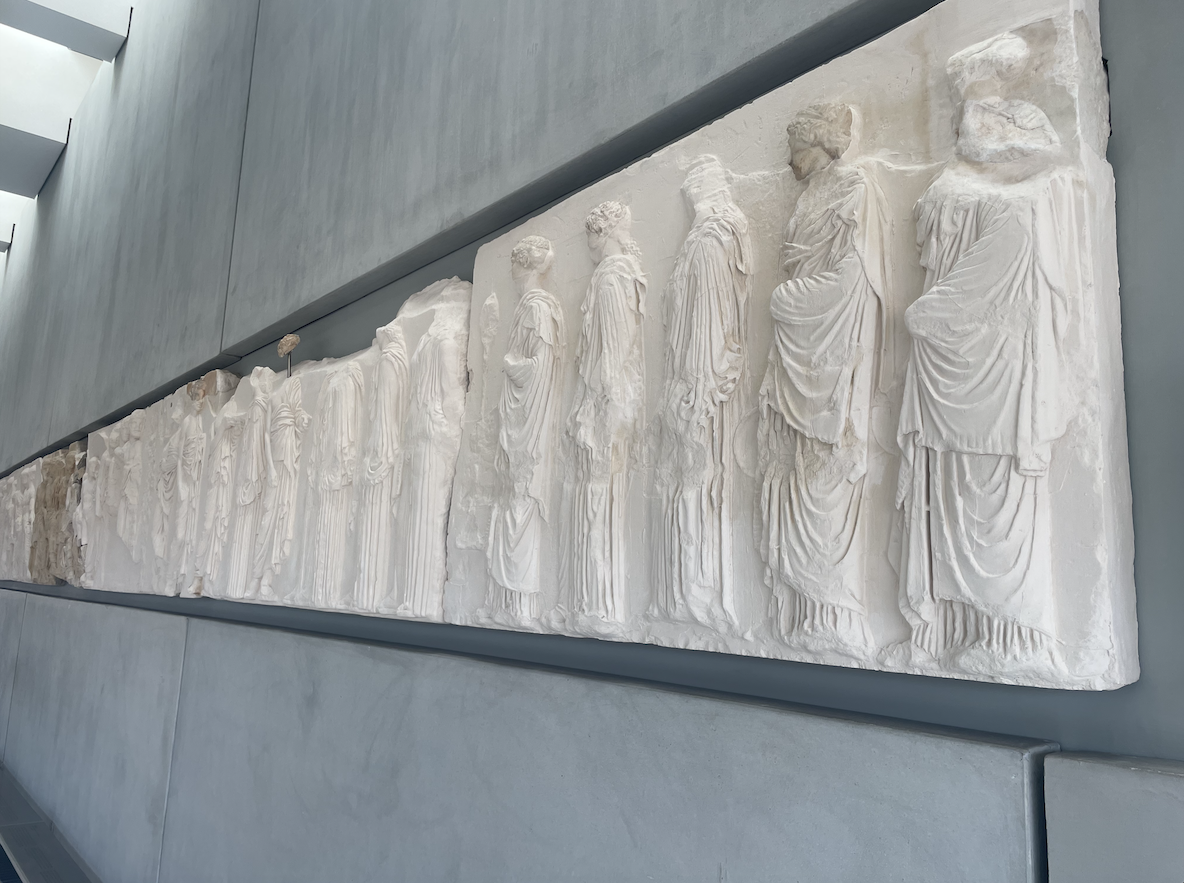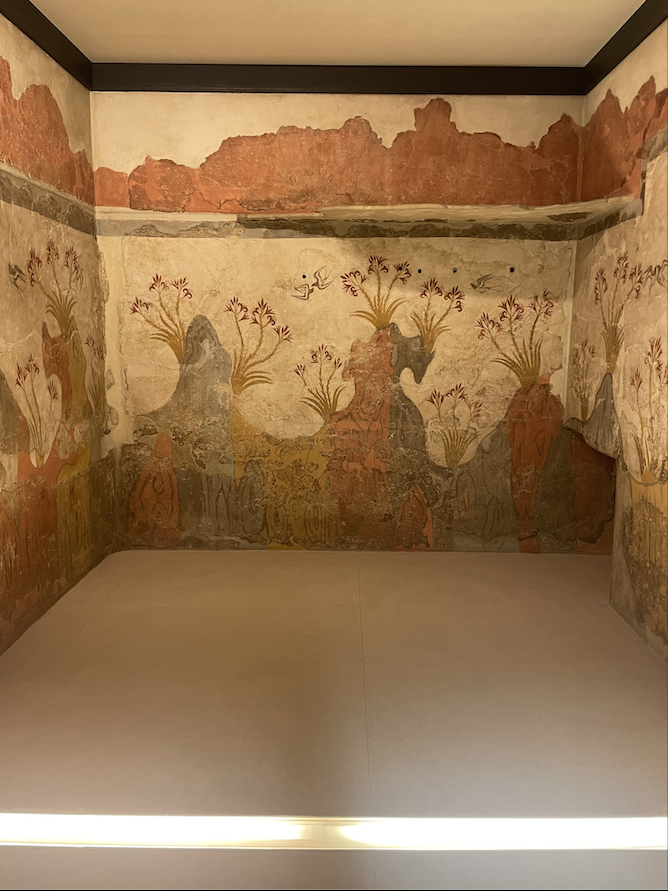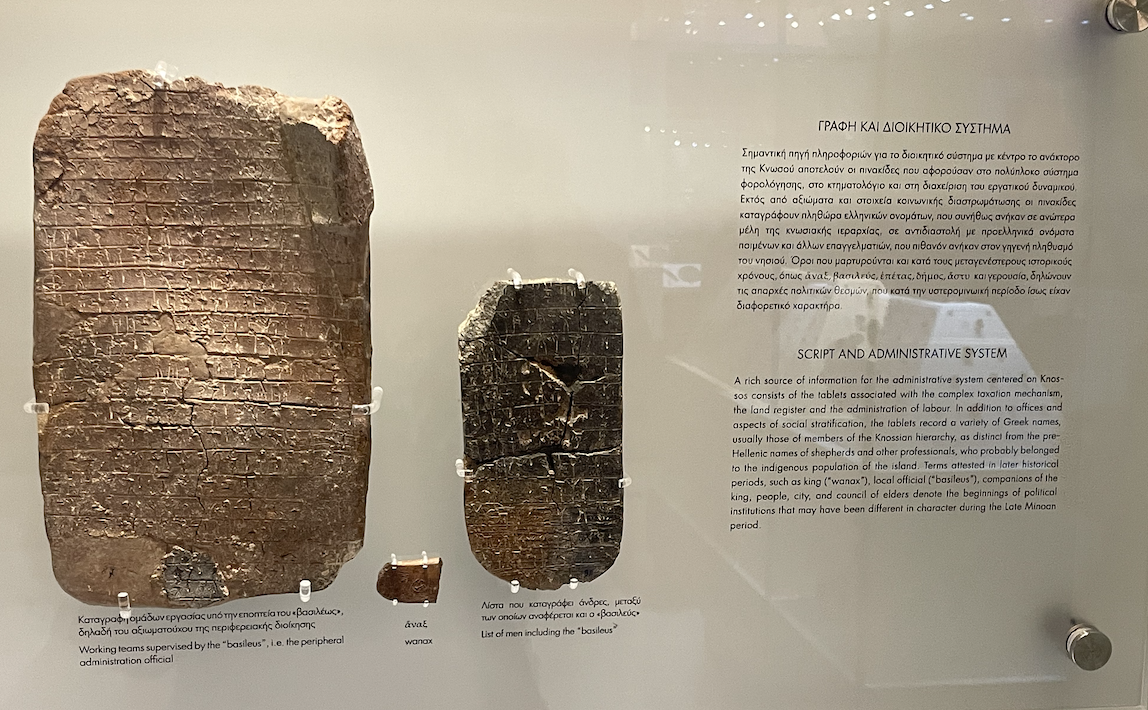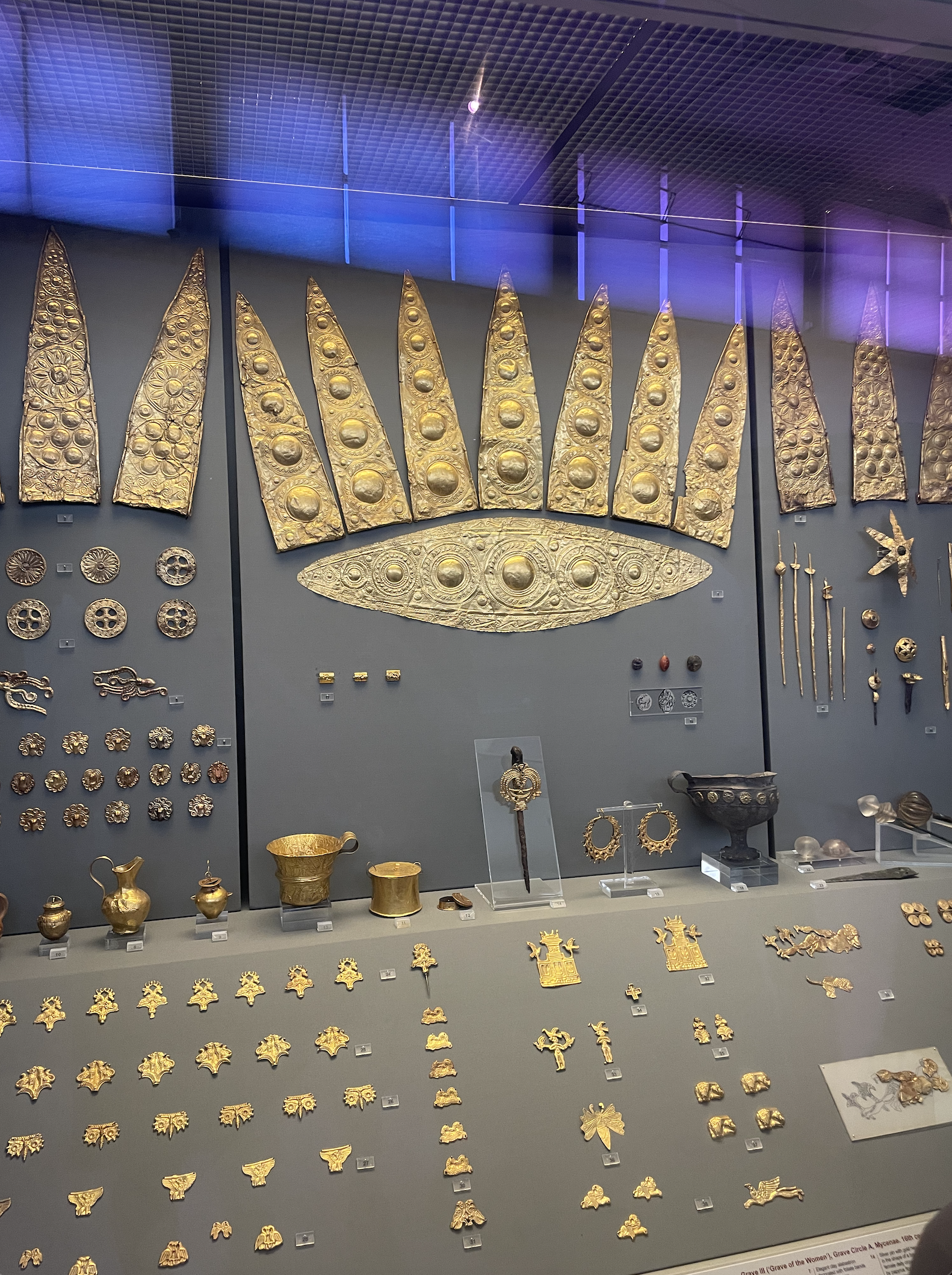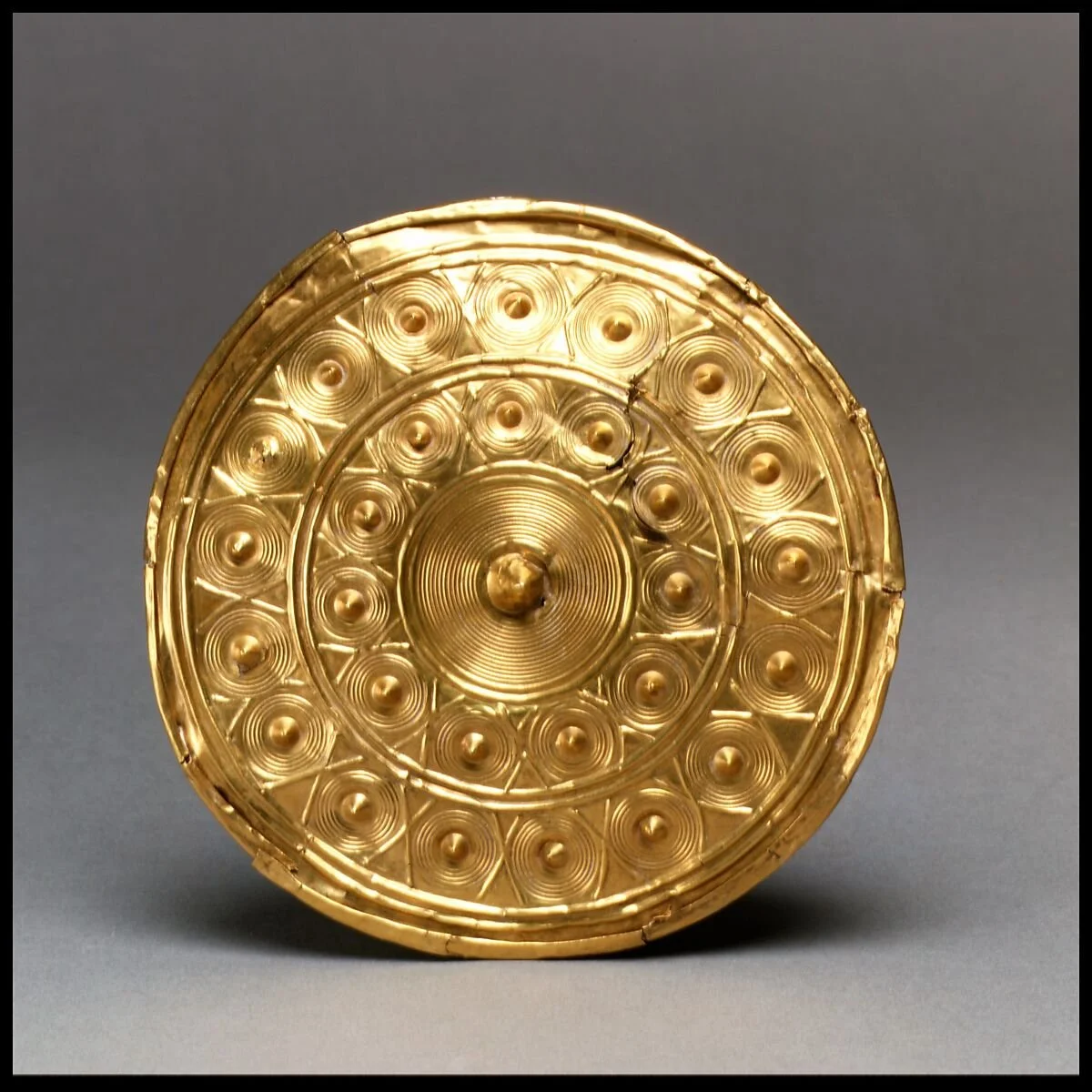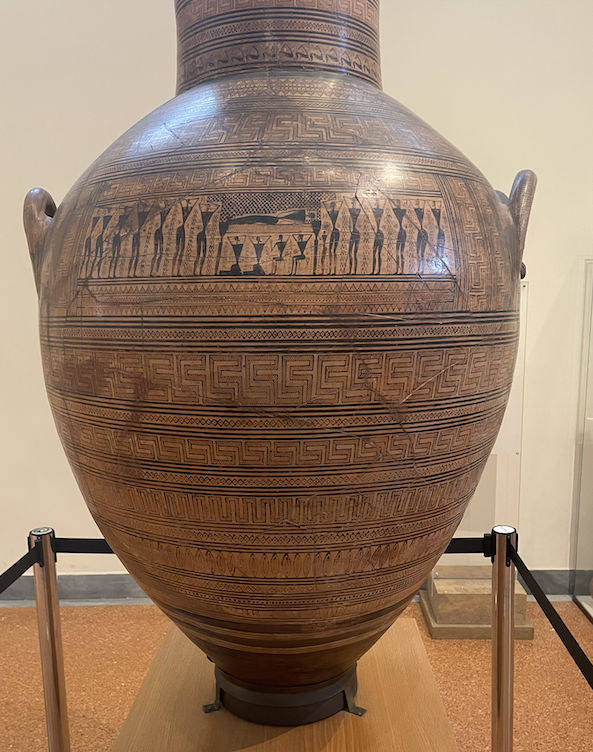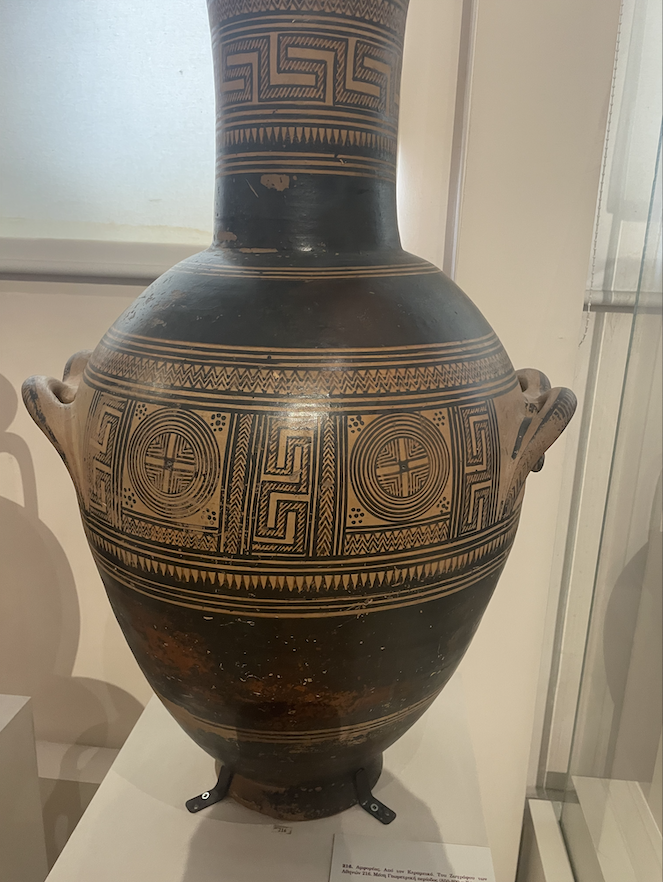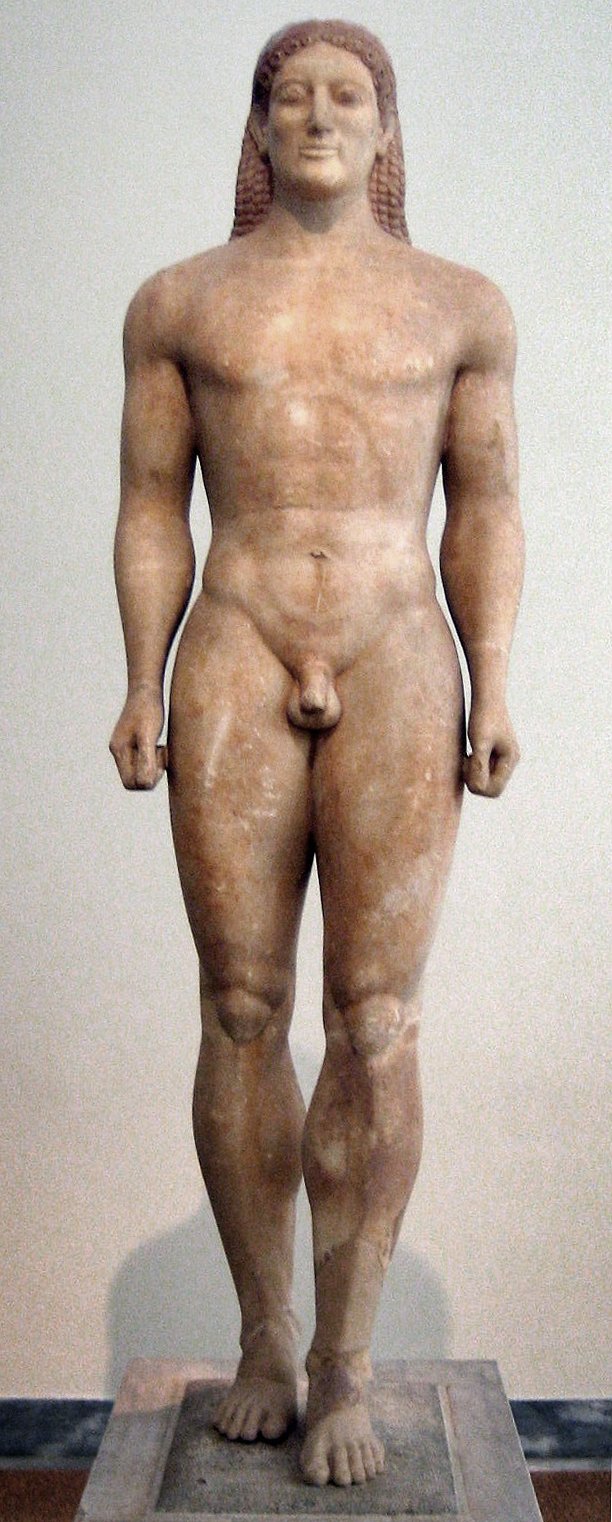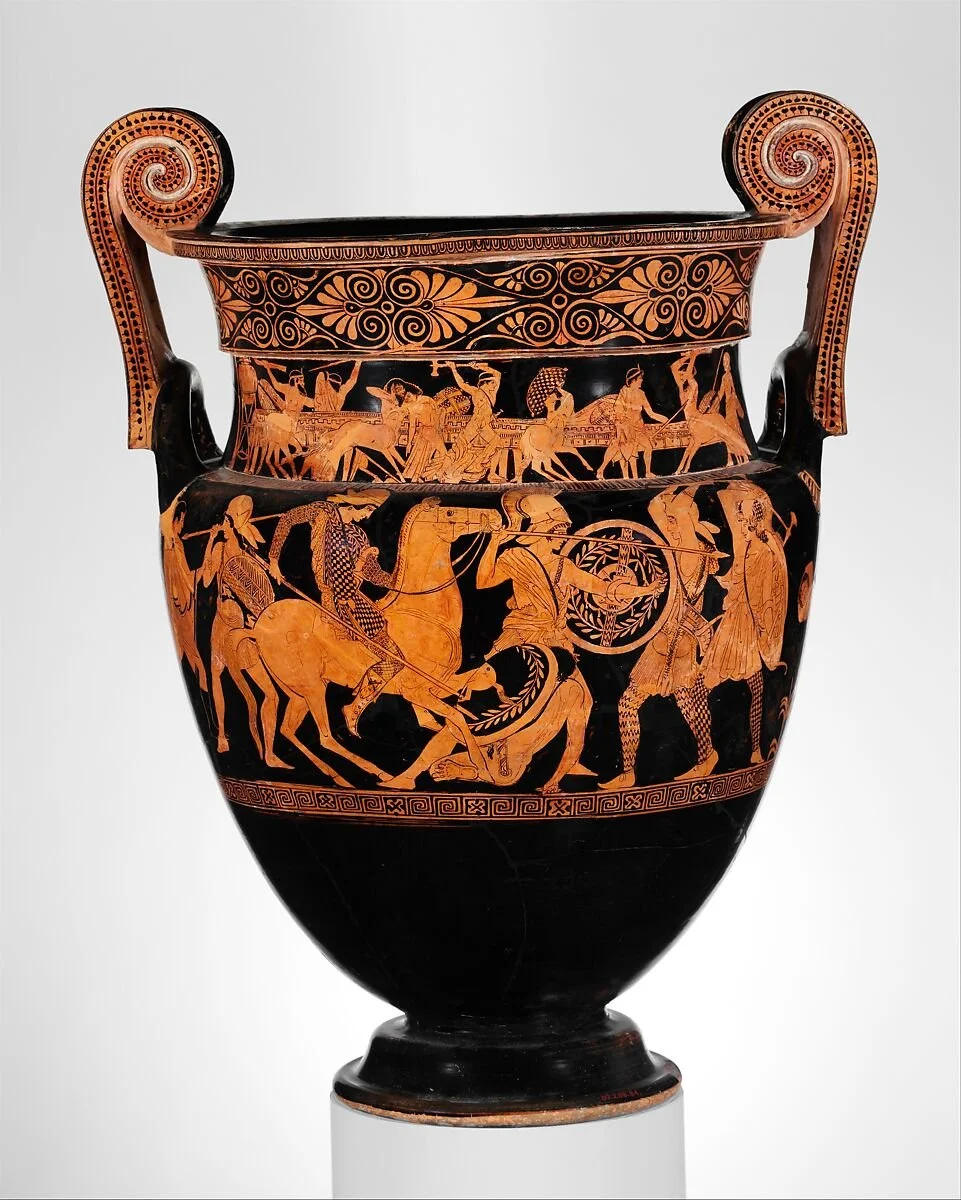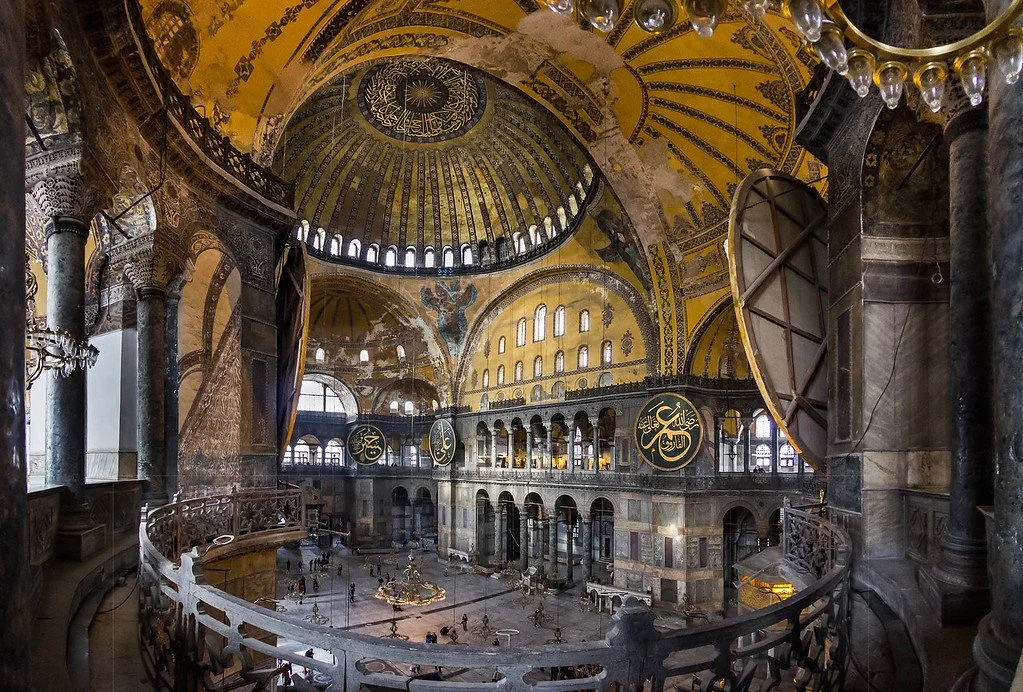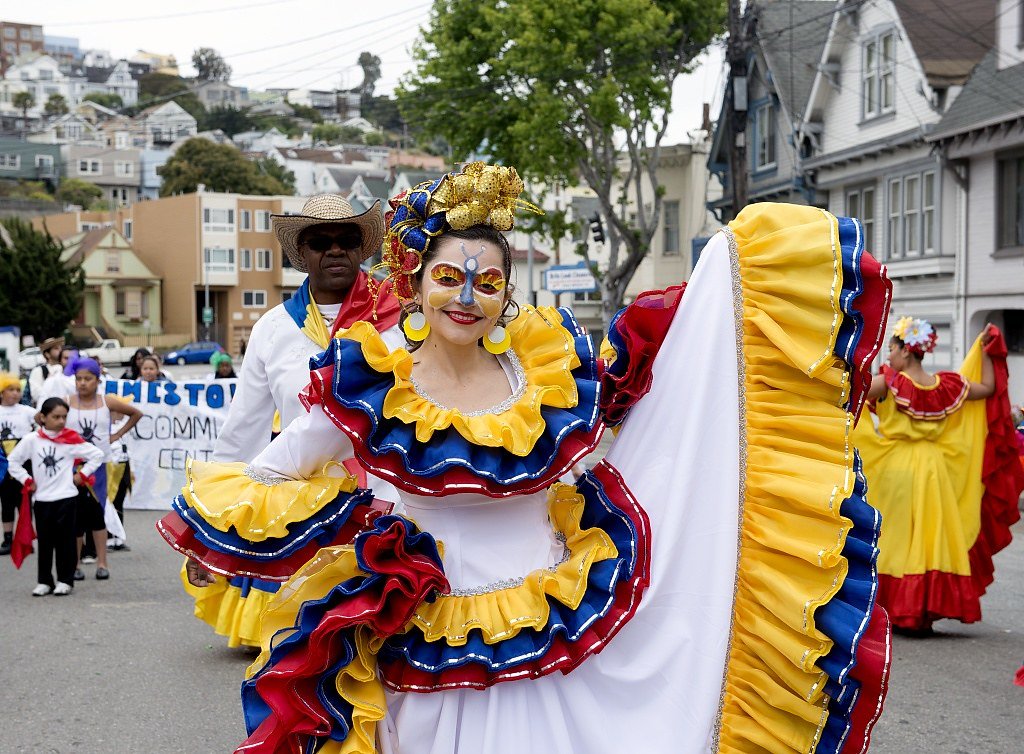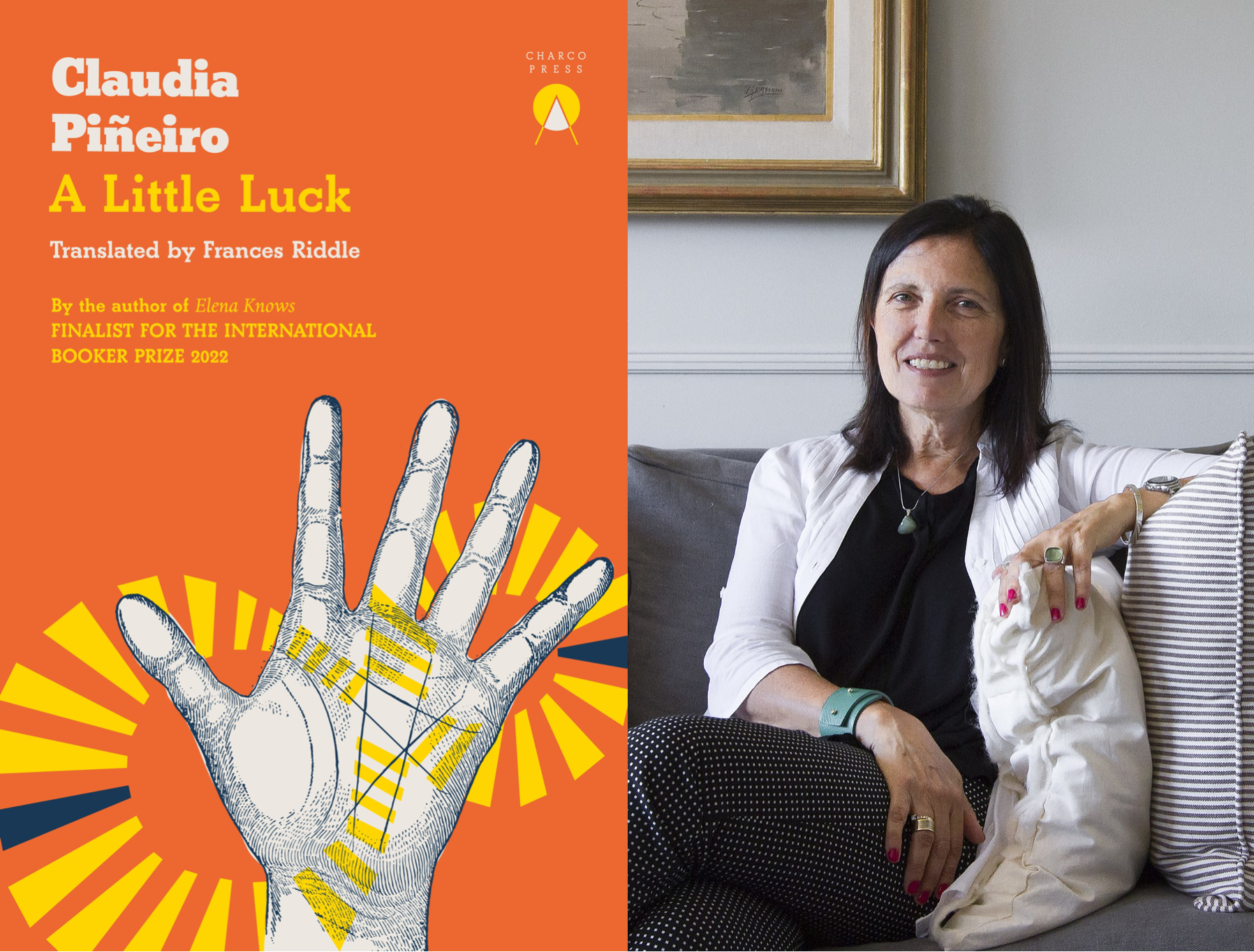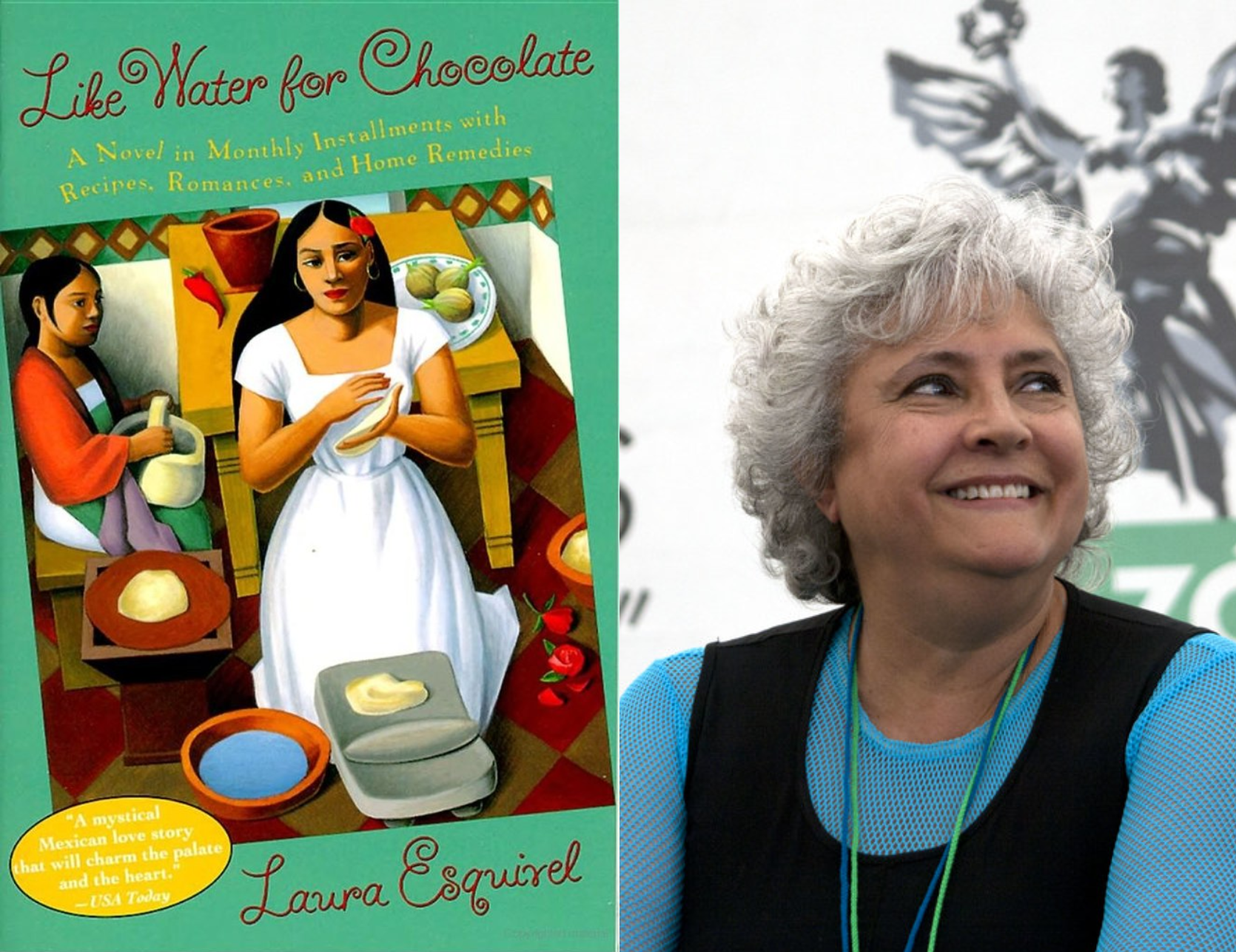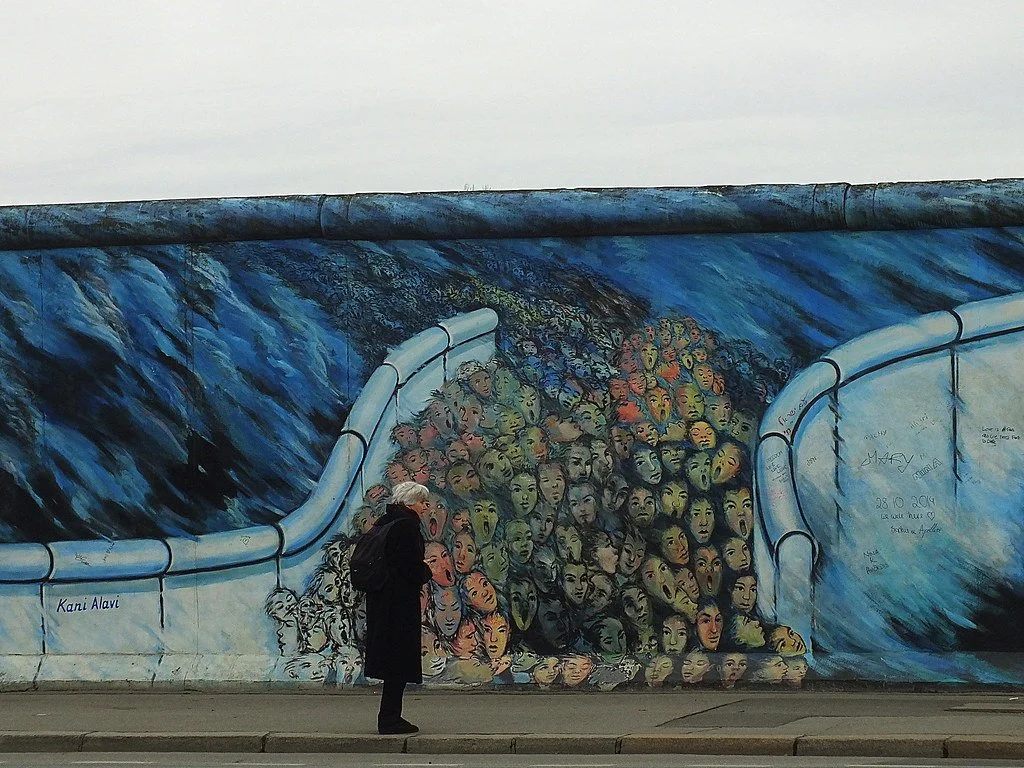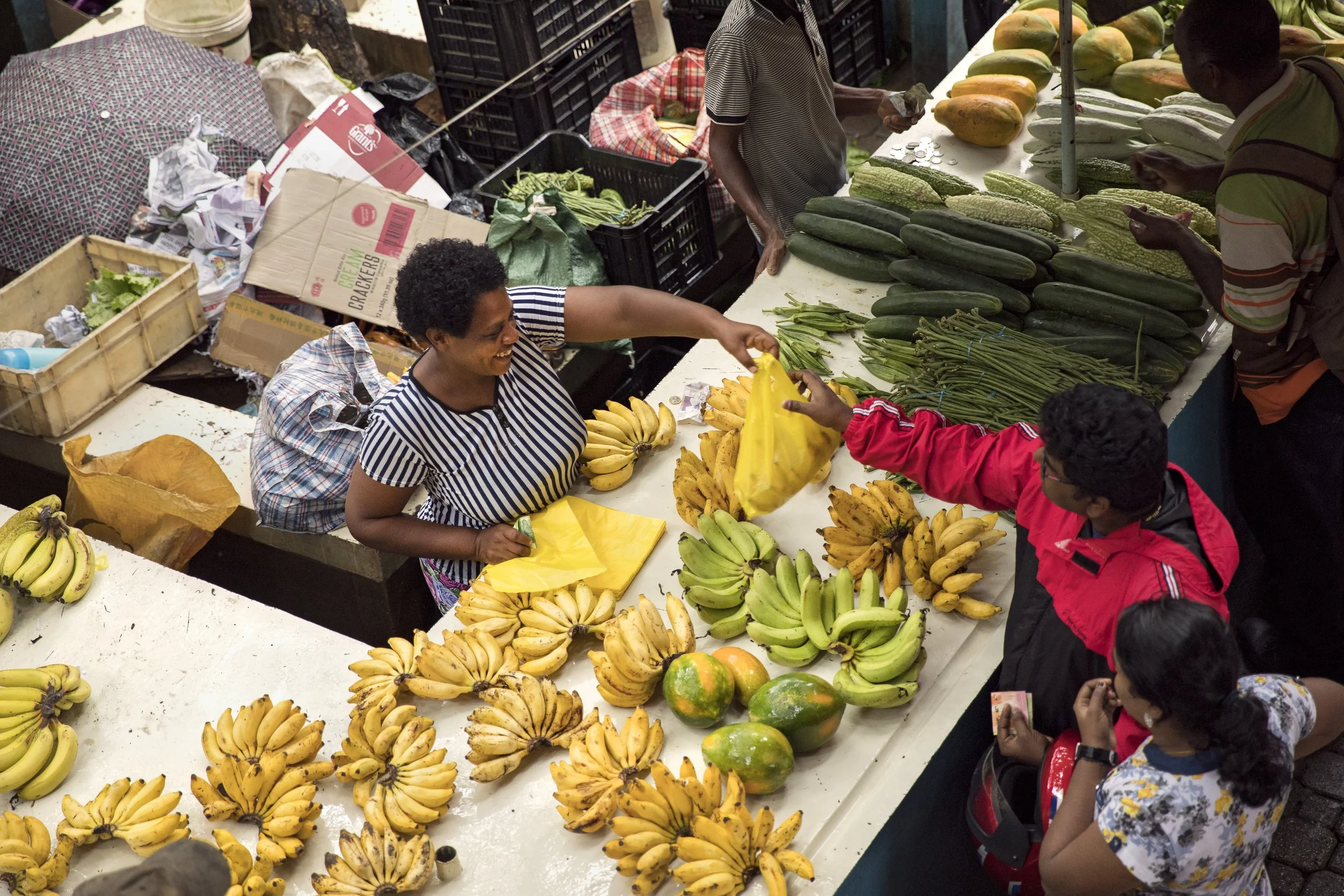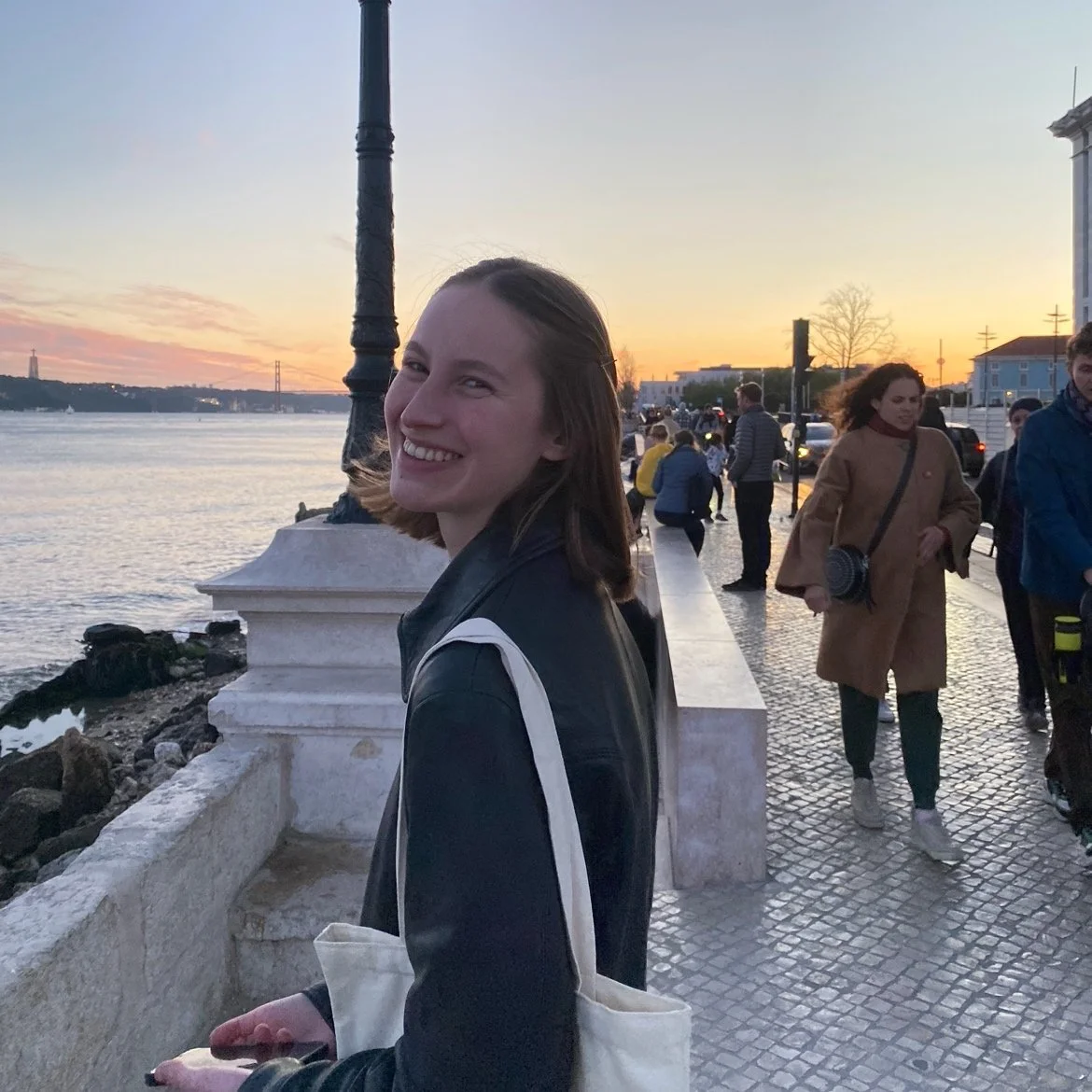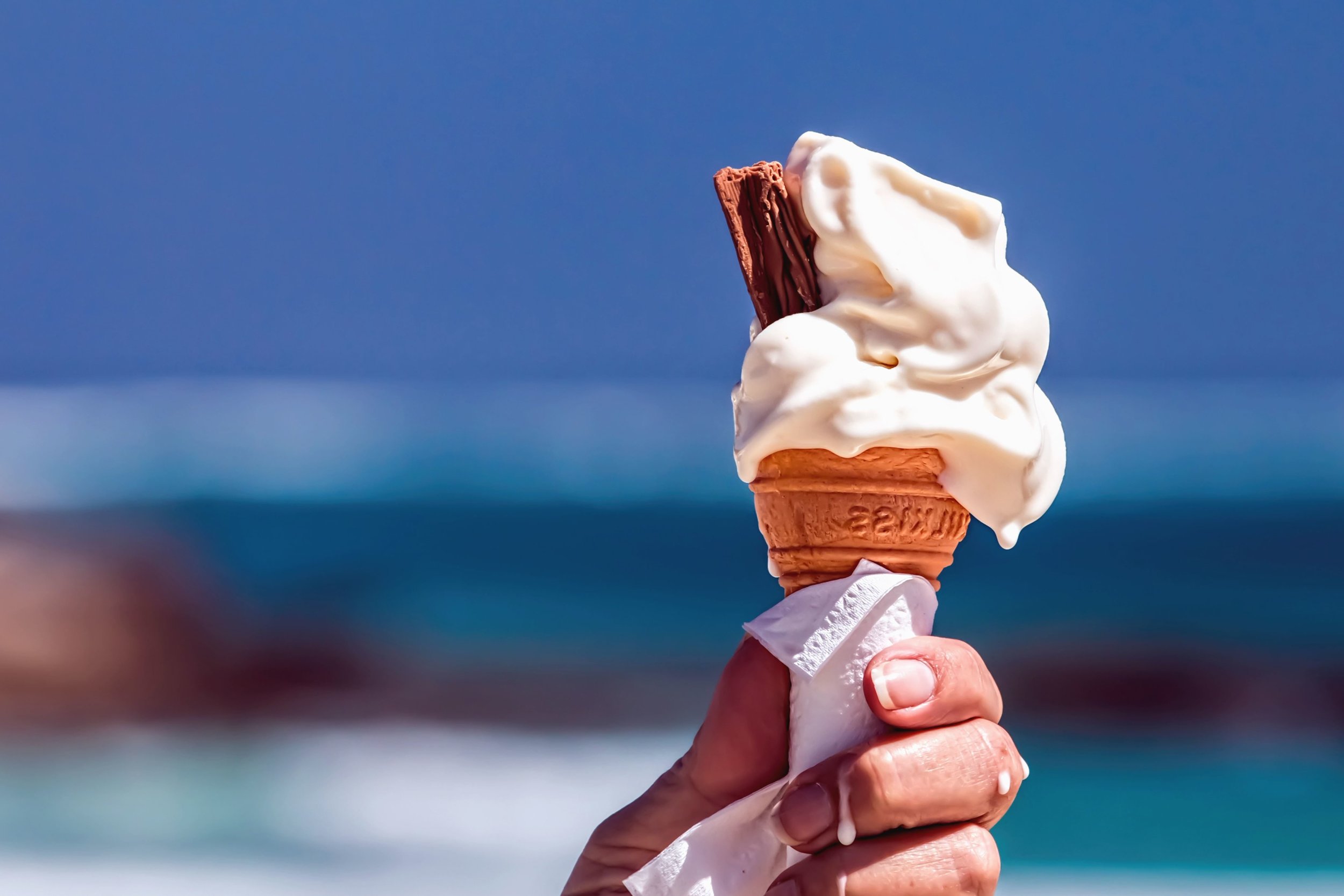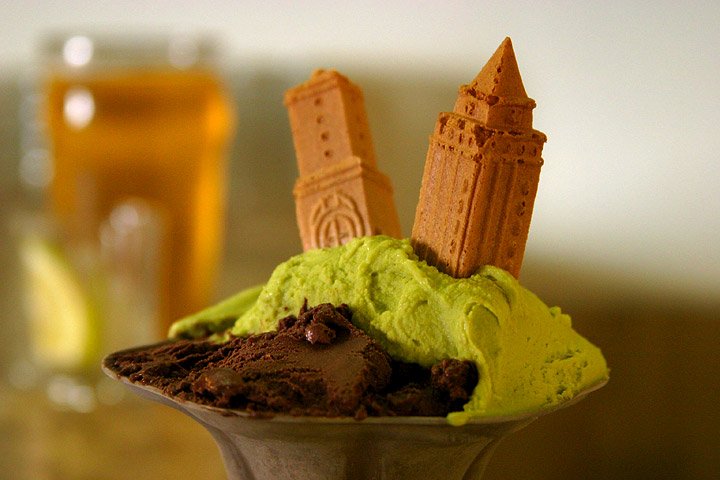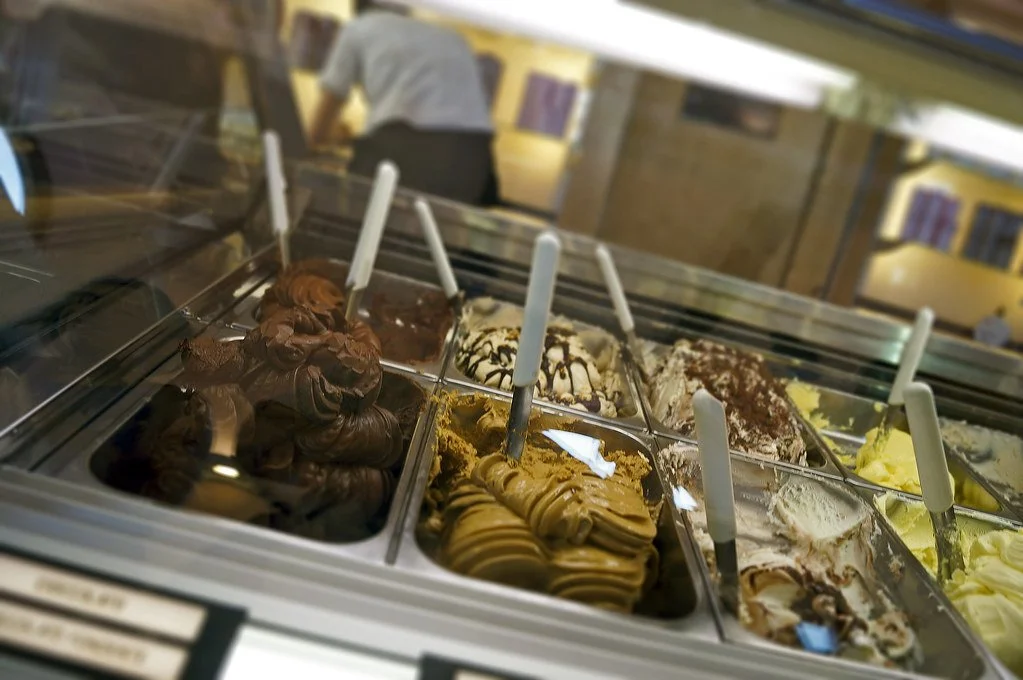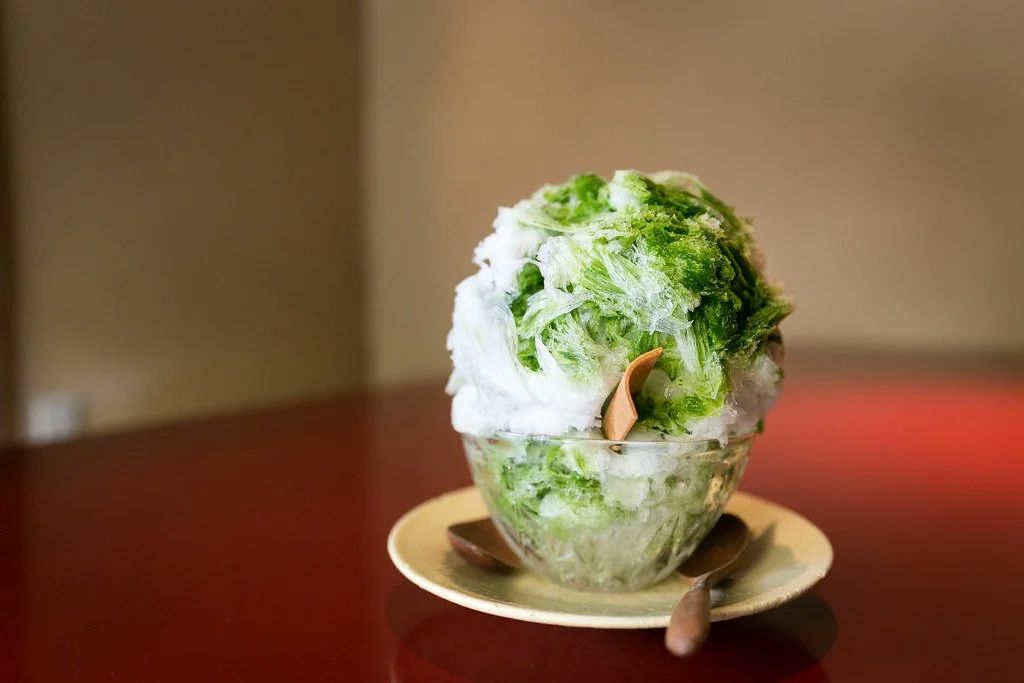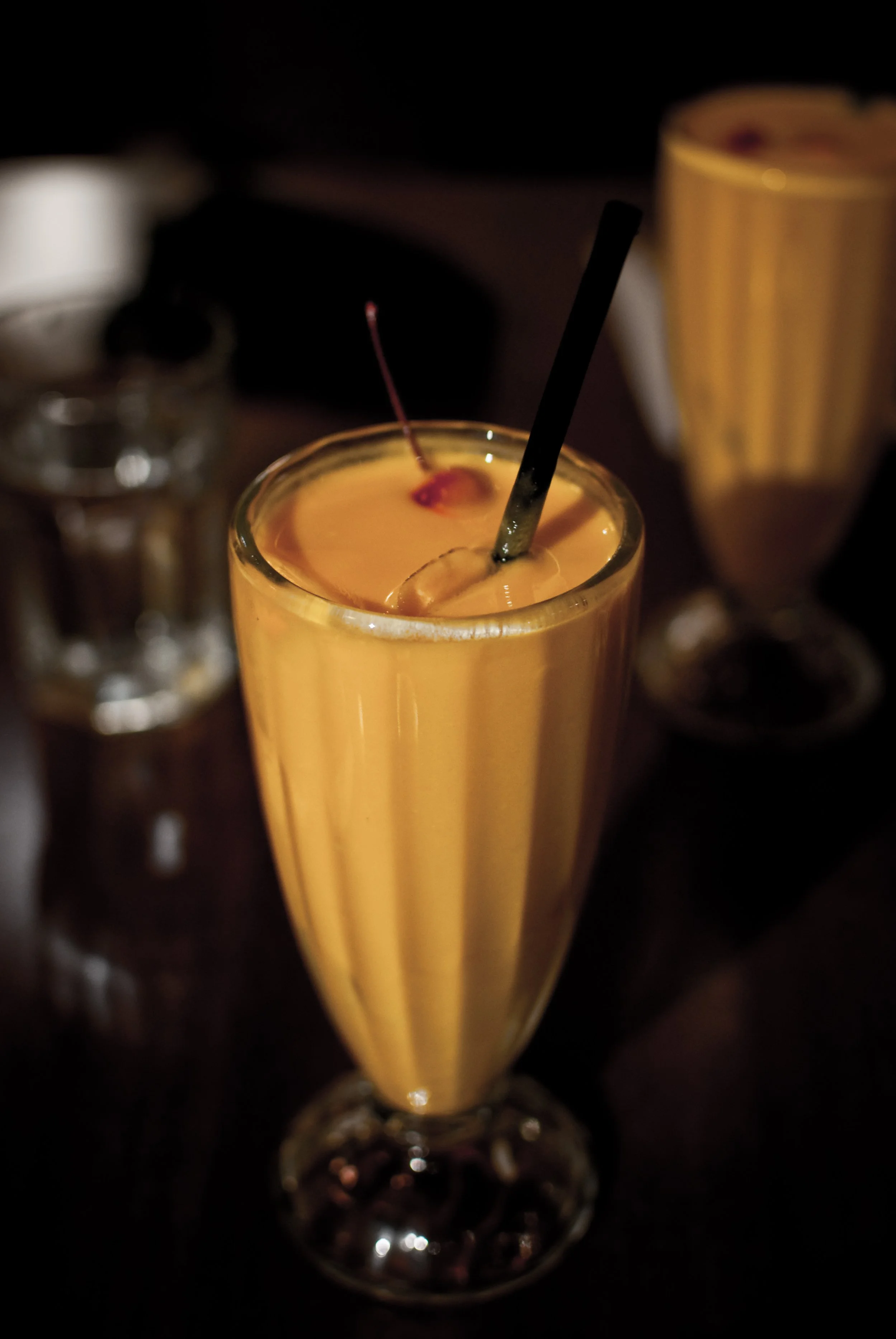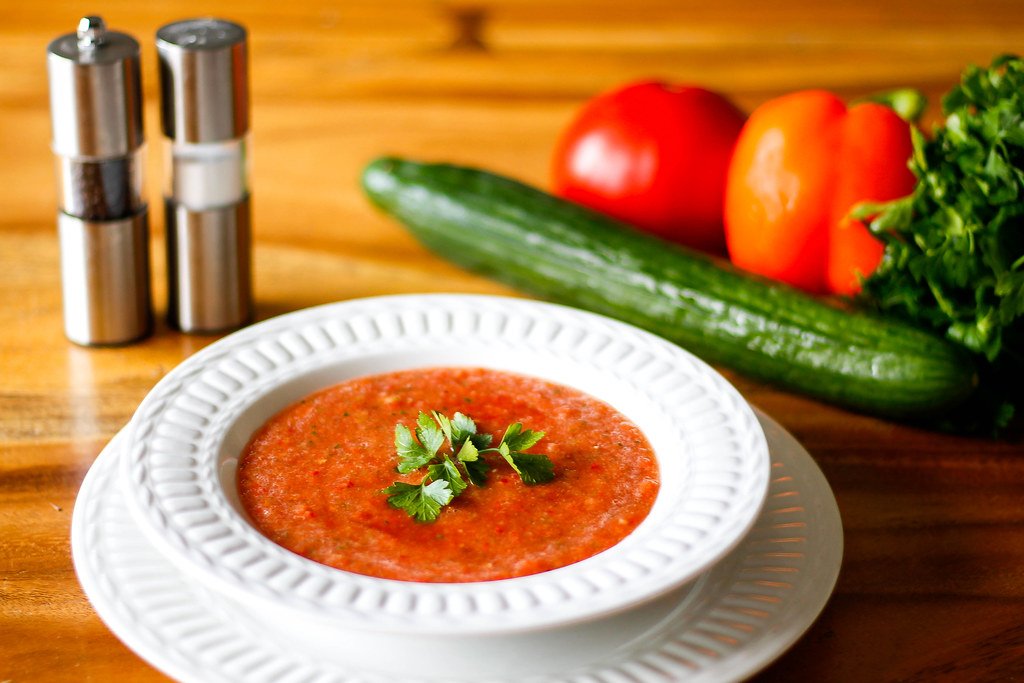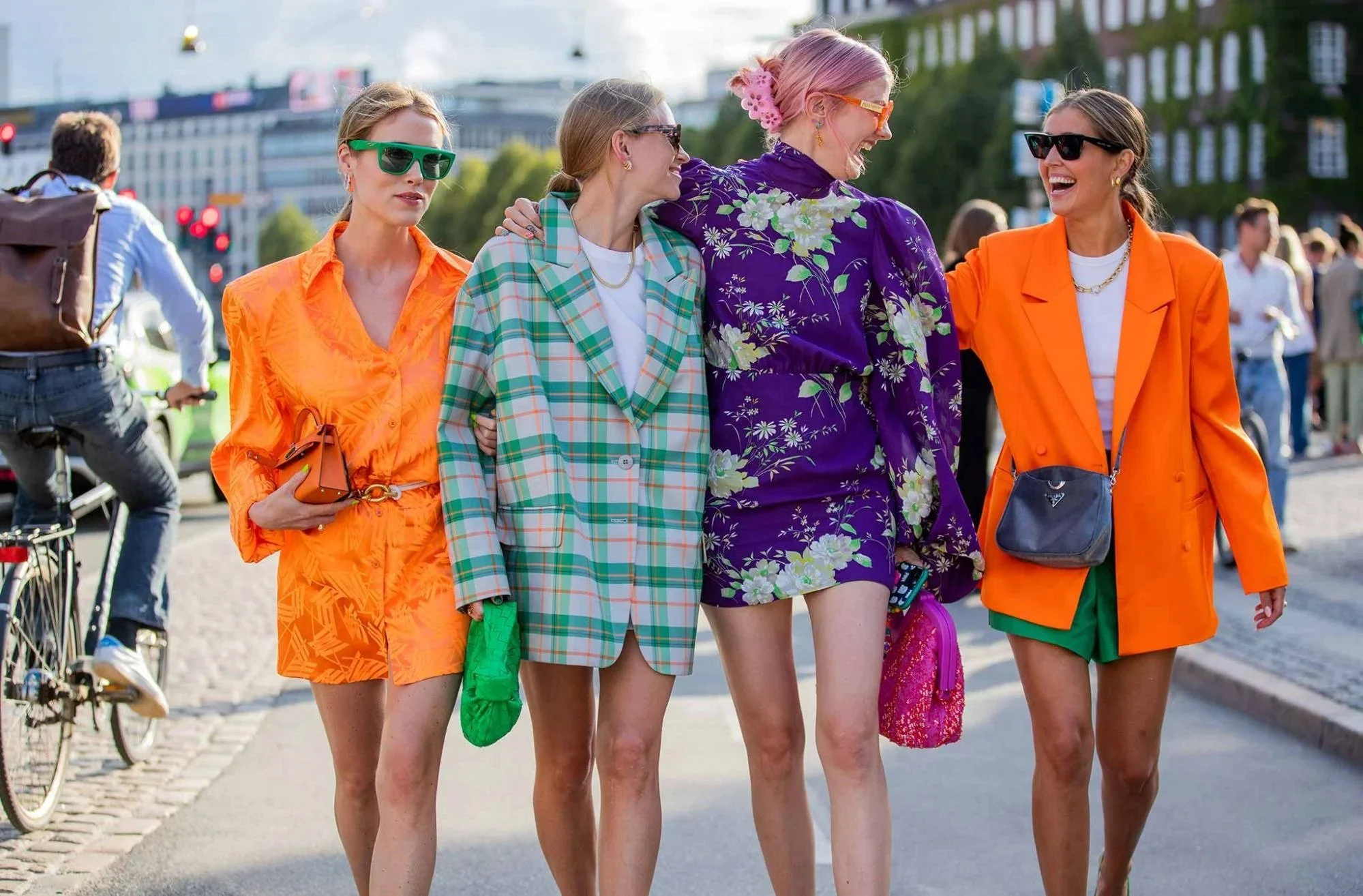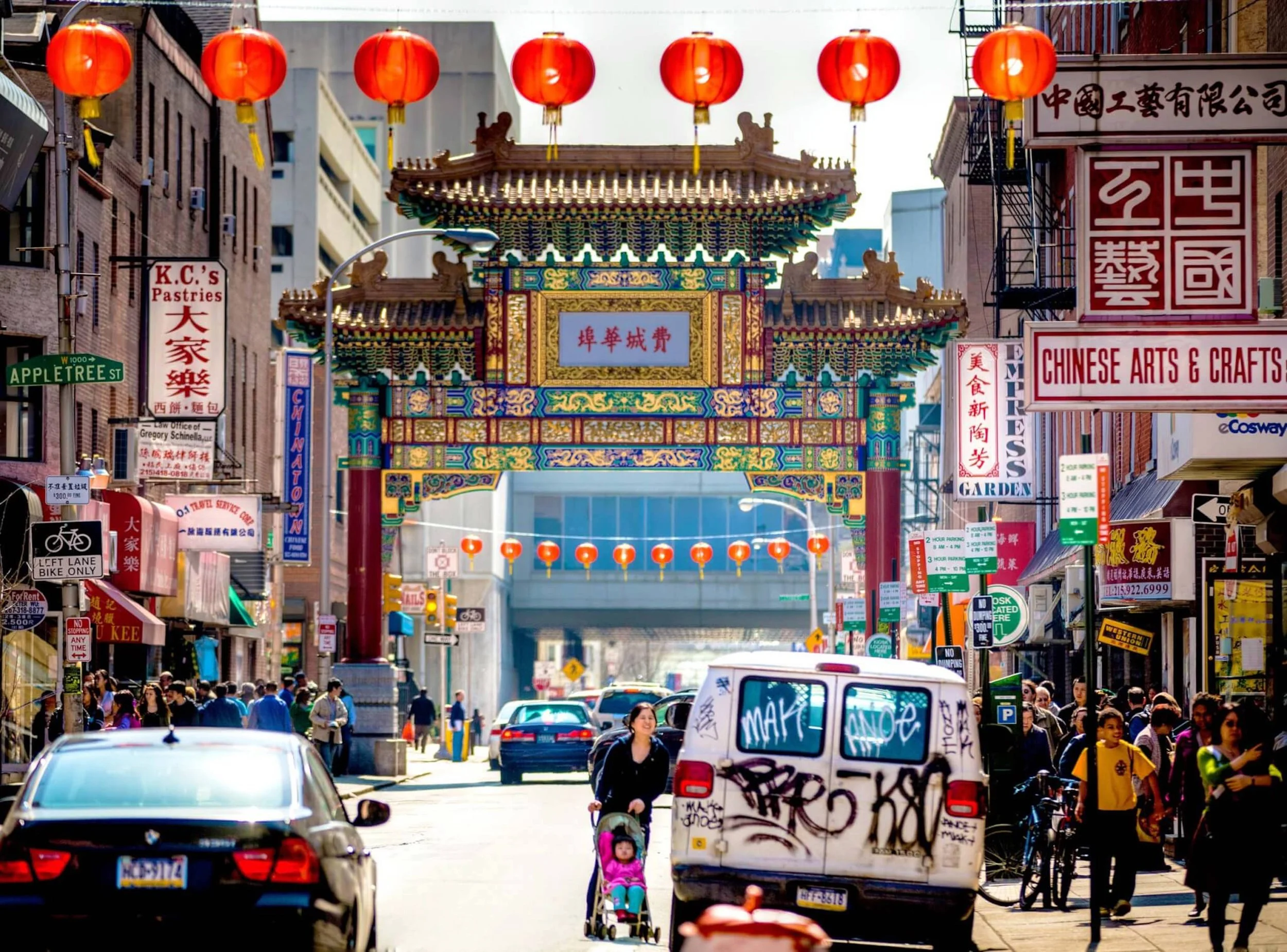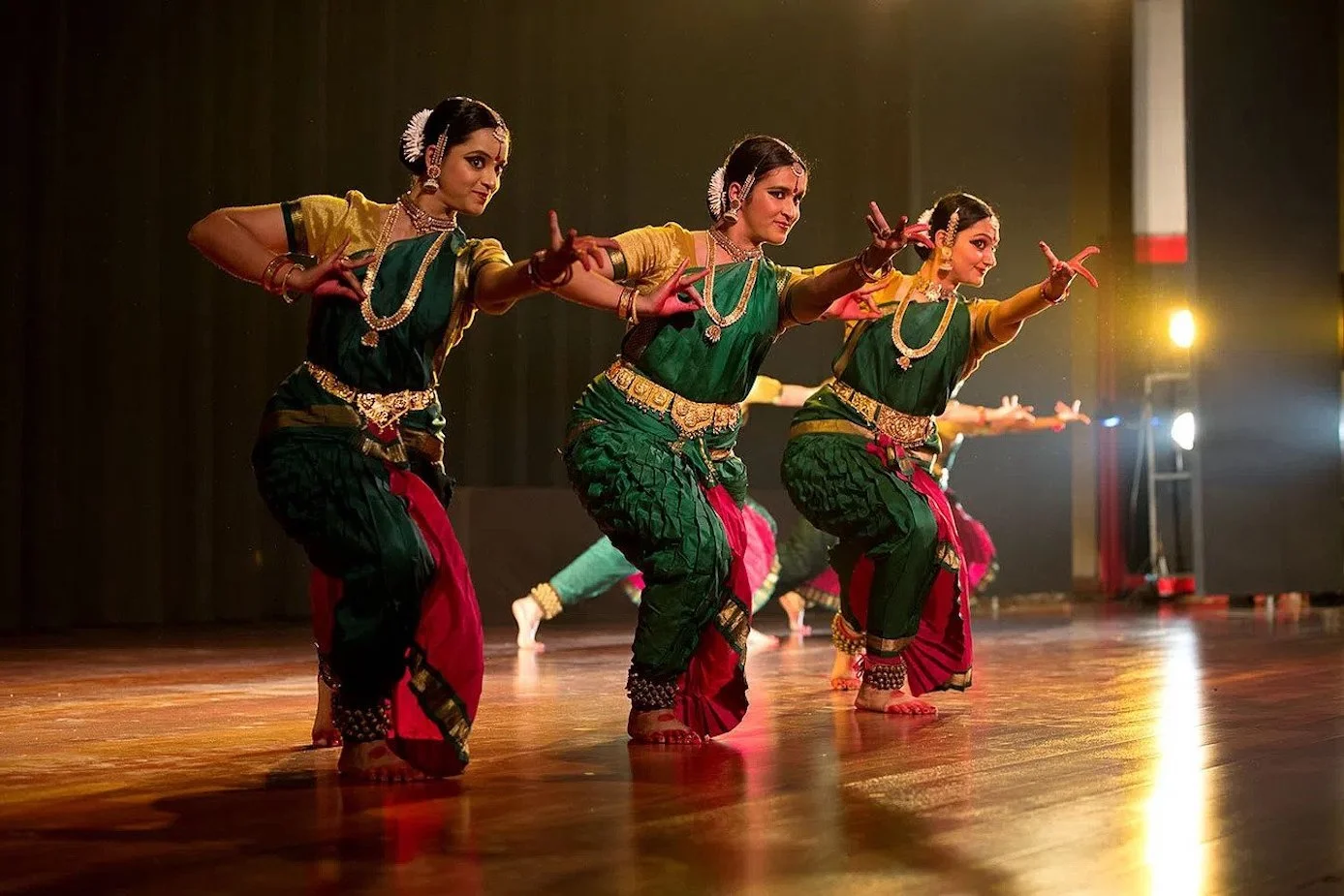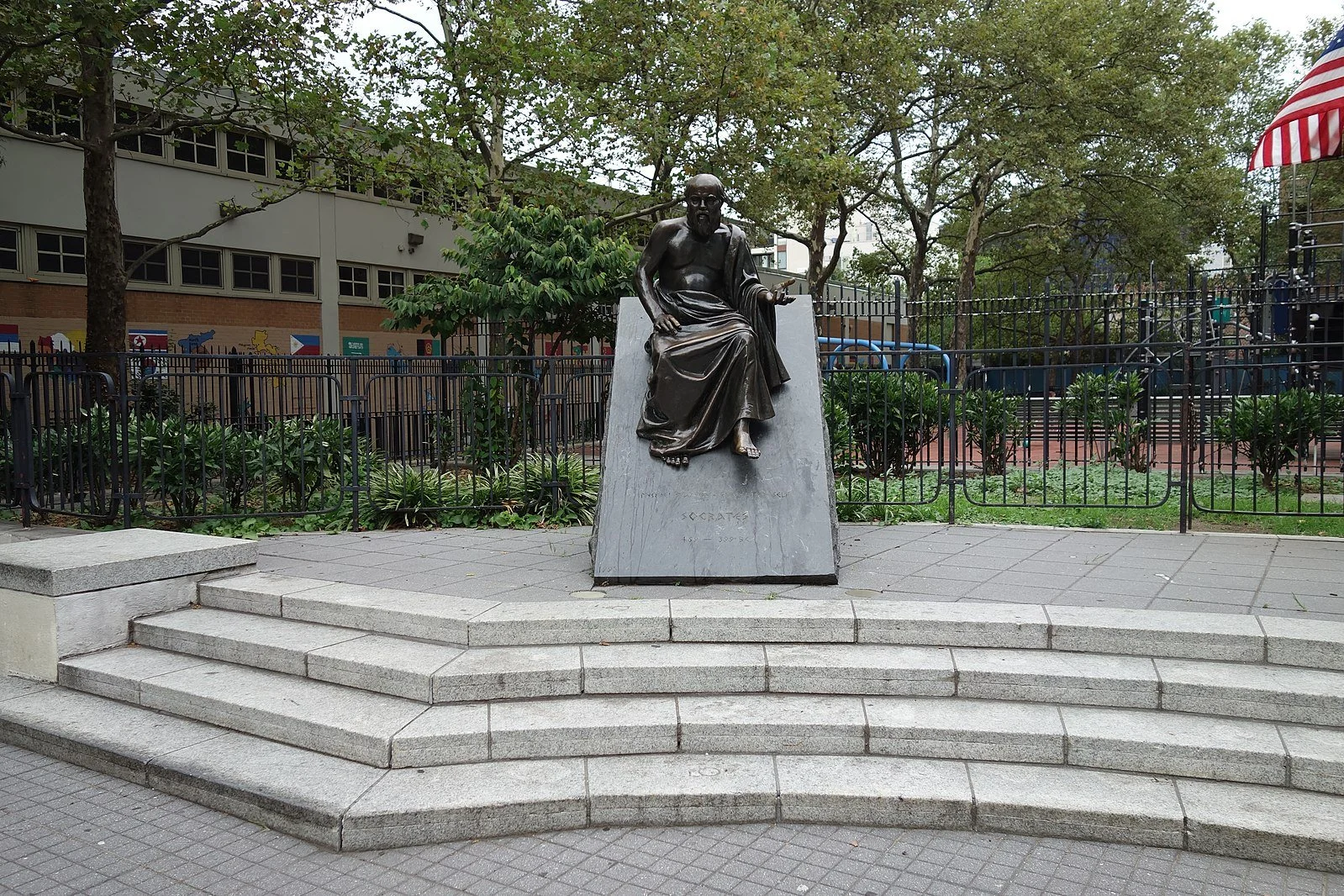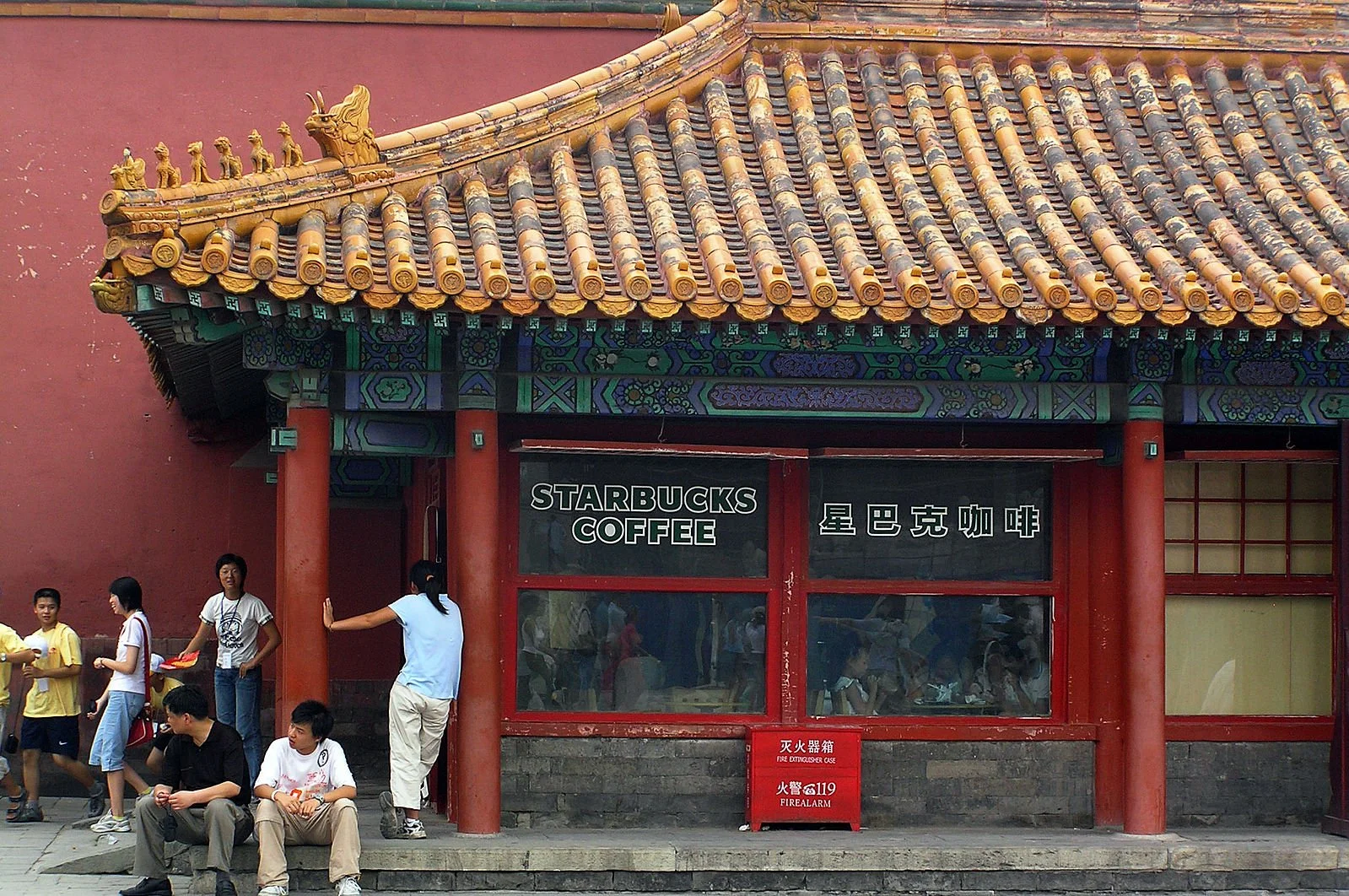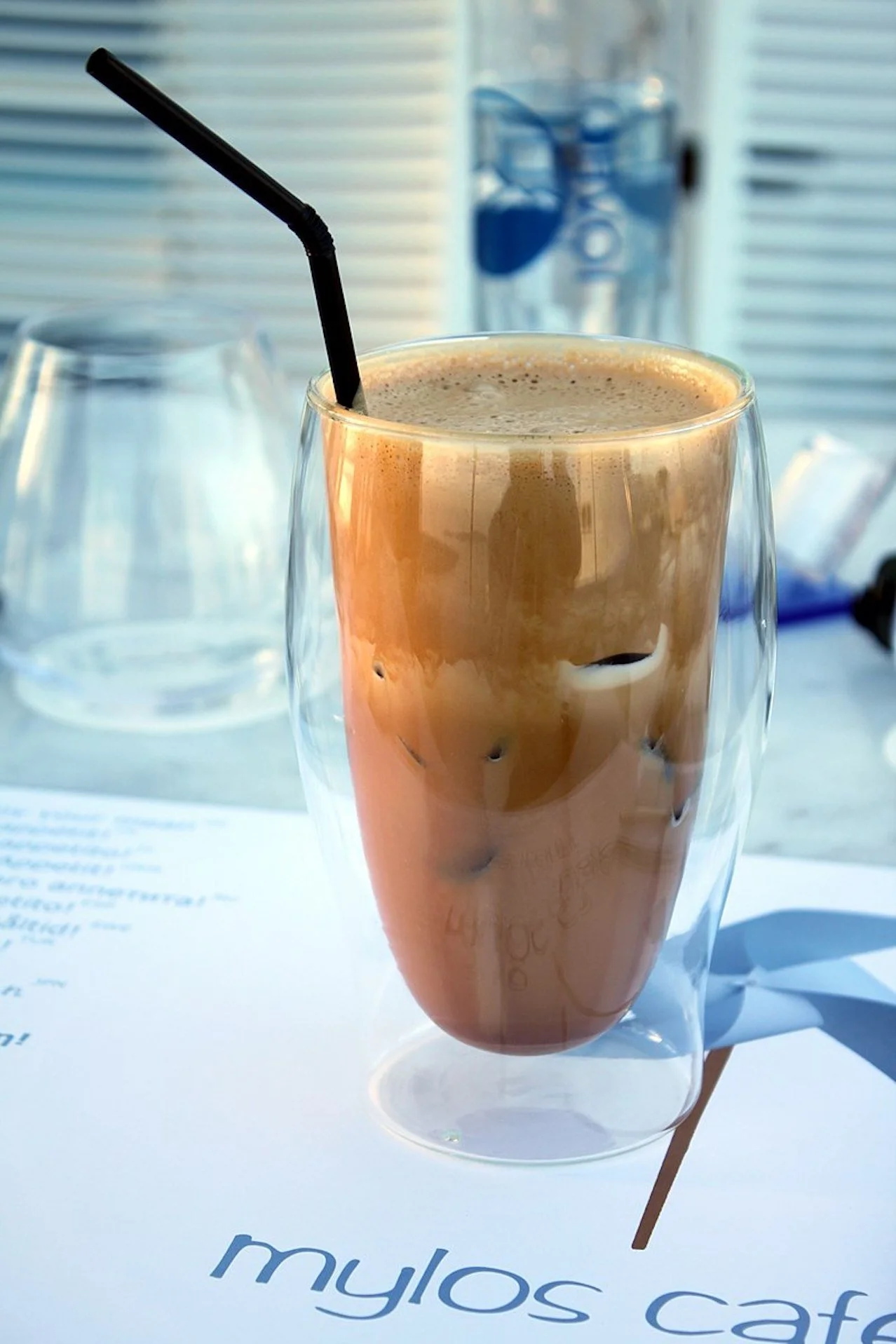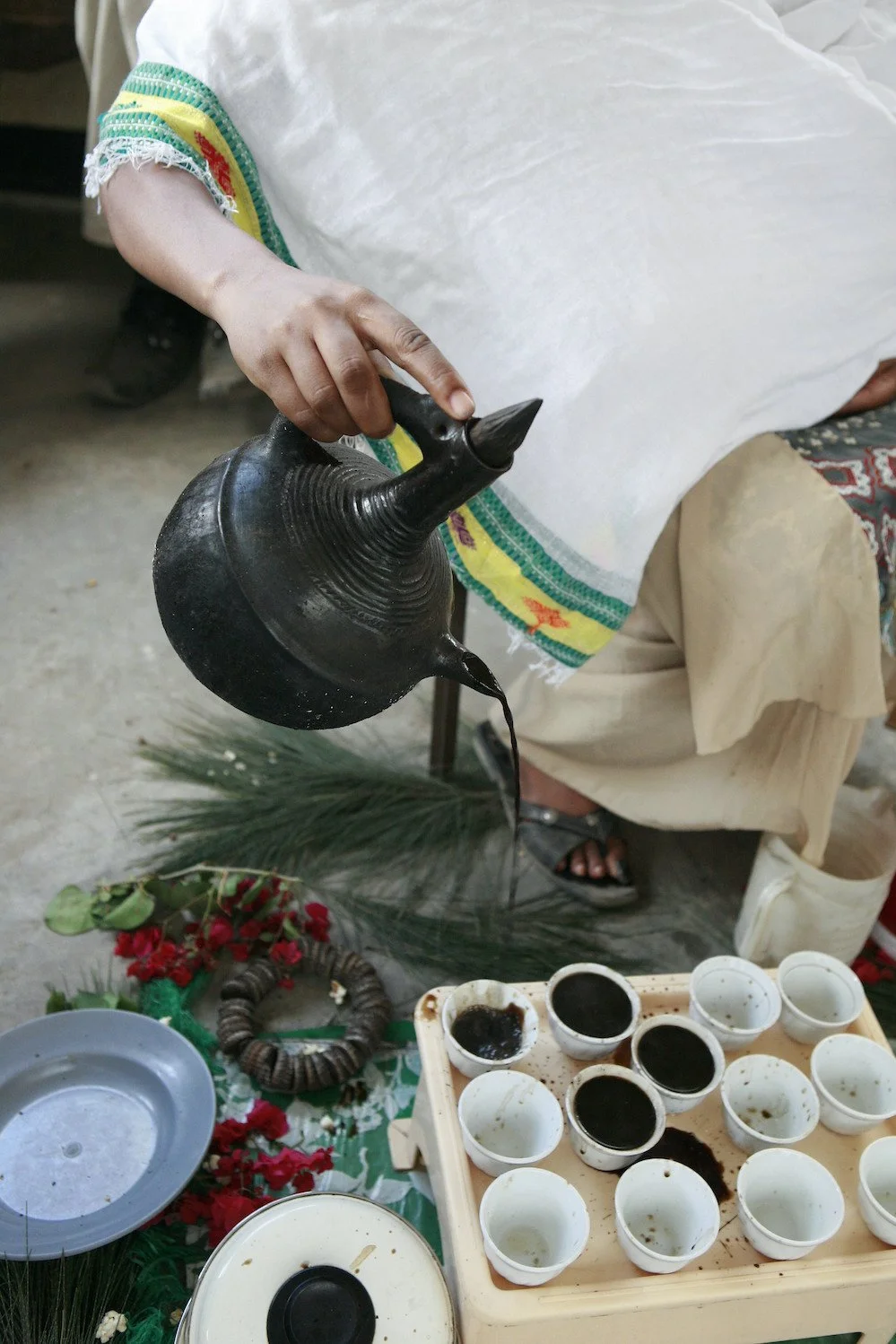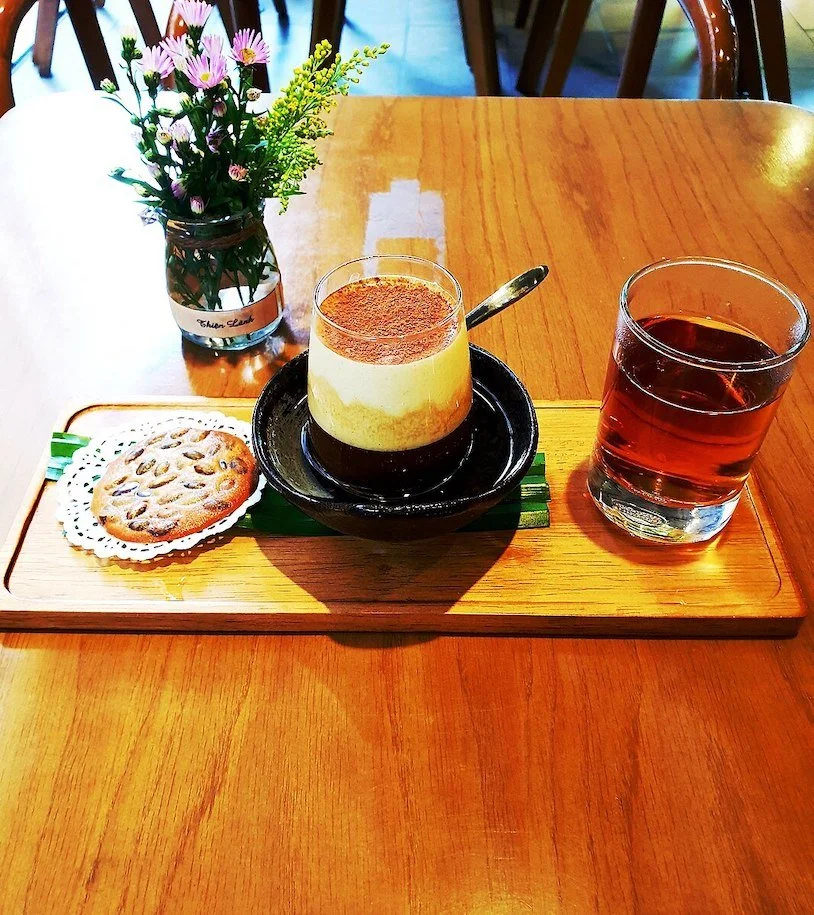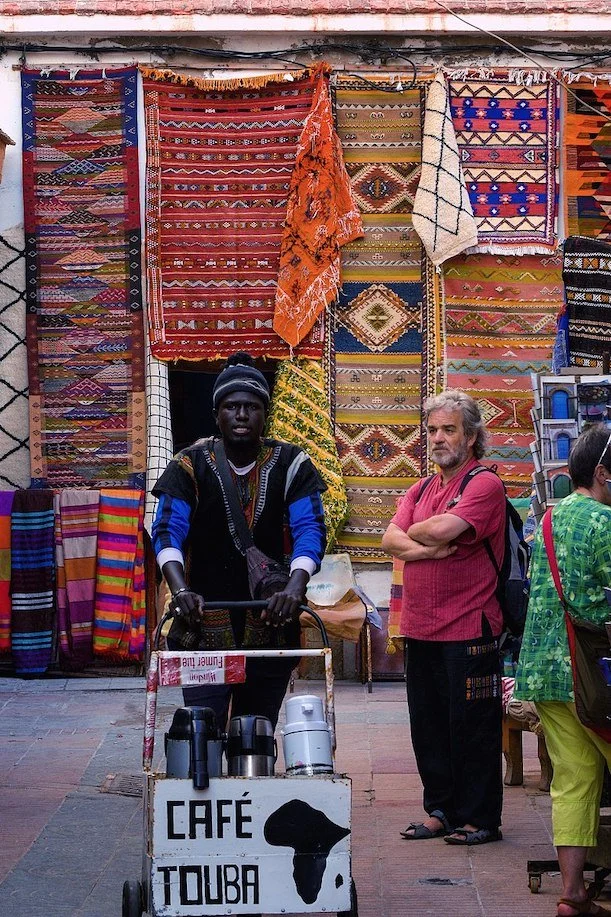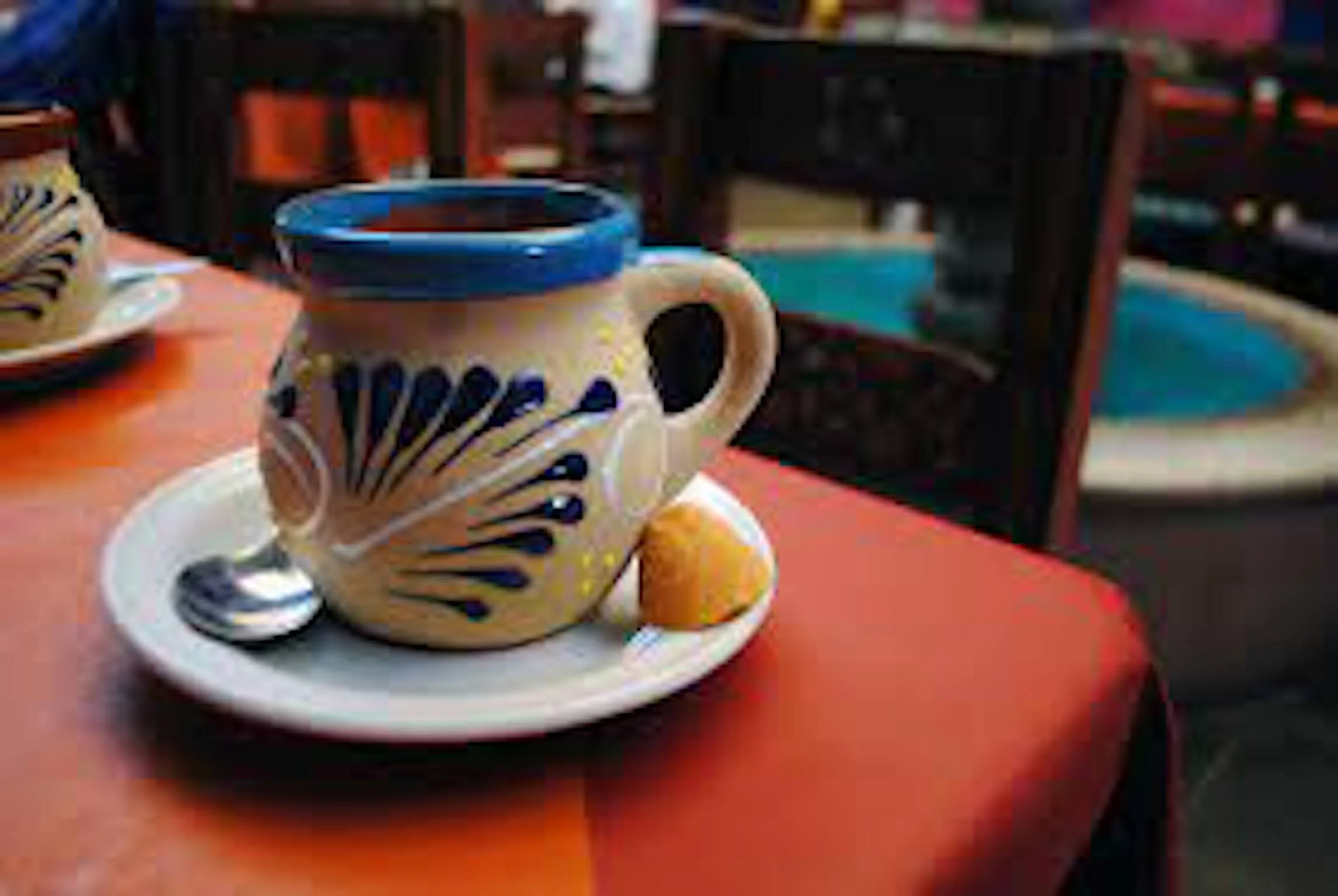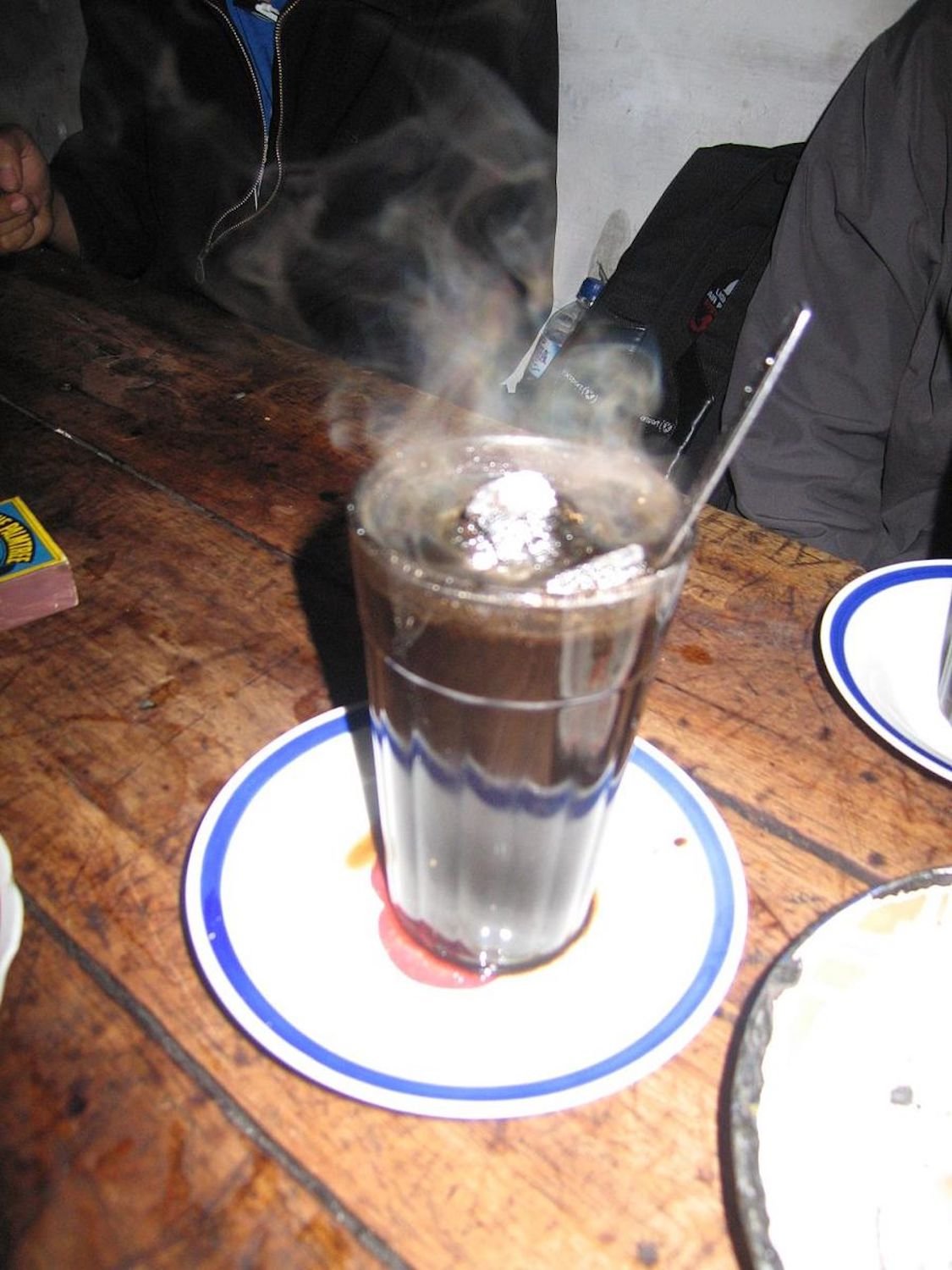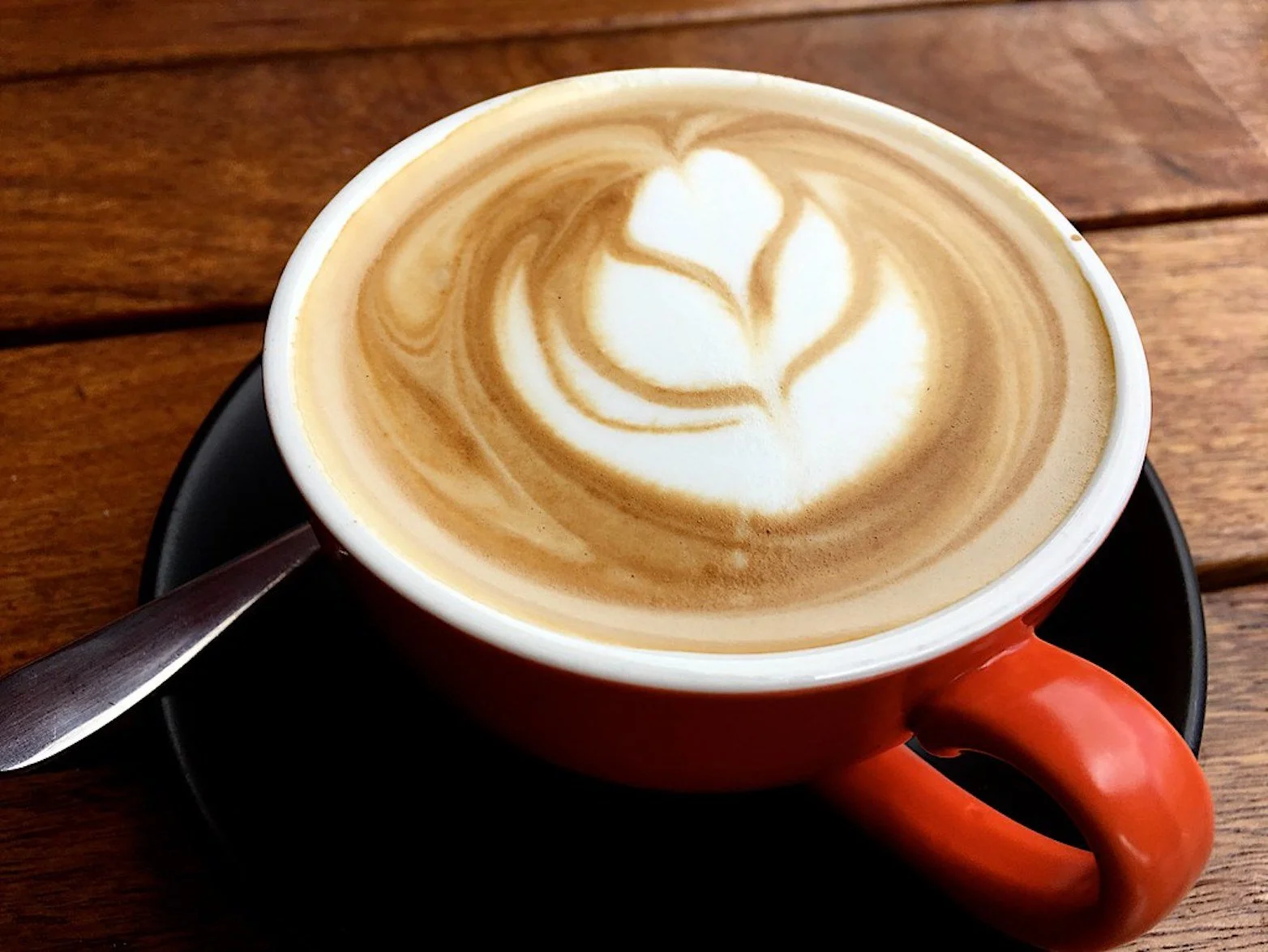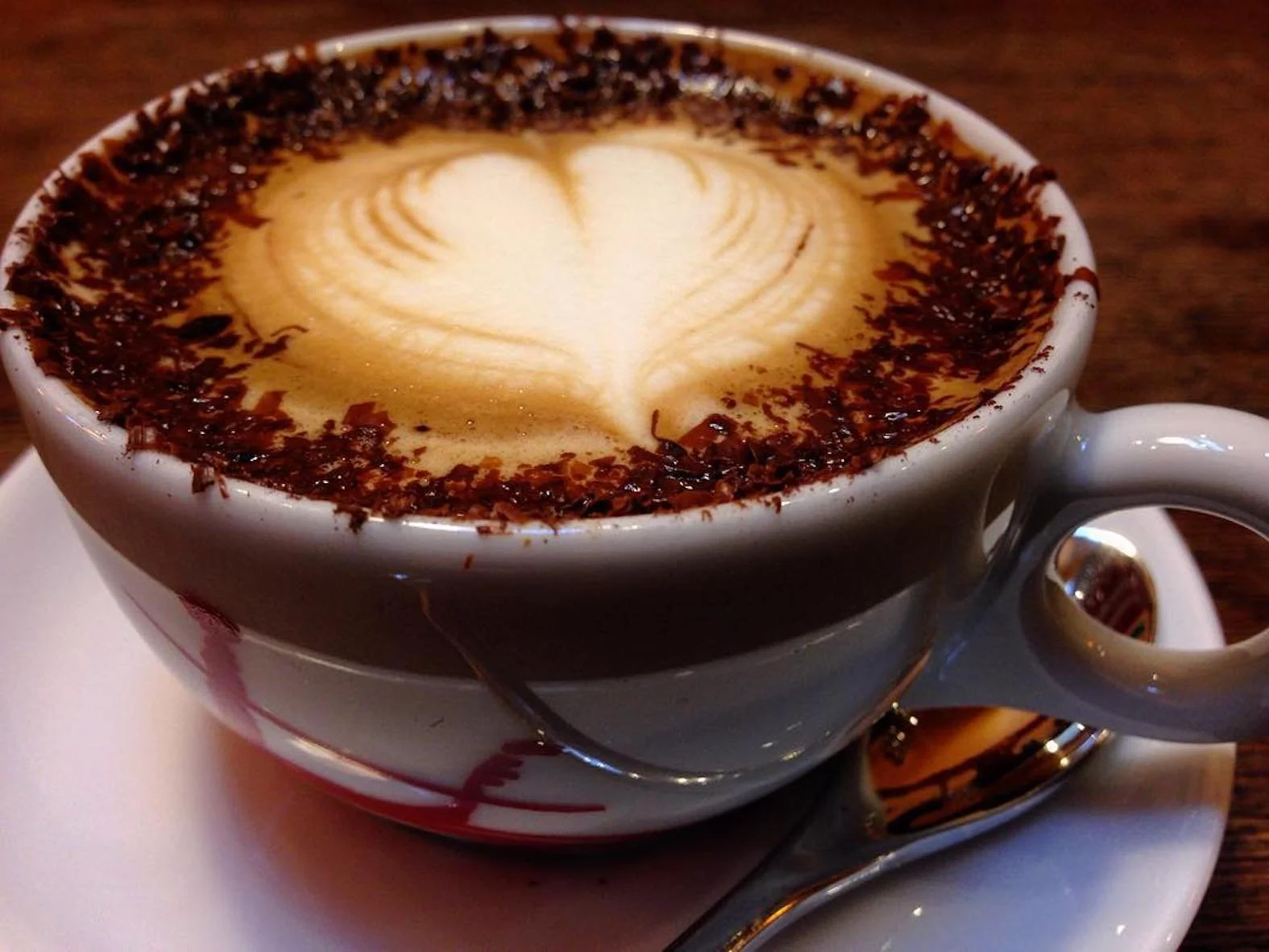Exploring the unique ways different cultures express love.
Read MoreThe Rise of Cat Cafes: Popularity and Pitfalls
While they have a rich history and are fun for humans, cat cafes are a hot topic in animal rights ethics.
Cat in cafe window. Atahan Demir. CC0.
Scooping litter, carpets of cat hair, vet visits and medical bills: taking care of a cat—or any other animal, for that matter—can be both tedious and expensive. But on the other hand, cats are adorable, energetic and entertaining furballs. Previously, there was no in between—if you wanted a cat, it was either all in or nothing. Now there is an in-between solution: cat cafes. Cat cafes serve typical coffee shop beverages and pastries with the added bonus of being able to spend time with a variety of cats and kittens. Often cat cafes charge based on time spent at the cafe, with most cafes having set rates for either 30 minutes or one hour with the cats.
Although cat cafes are currently immensely popular, at one point they weren’t the global phenomenon they are today. The first cat cafe, Cat Flower Garden, was founded in Taipei, Taiwan in 1998. Although there were other cafes to house cats prior to Cat Flower Garden, they were the first cafe to market themselves specifically as being a cat cafe. Now, people from both Taiwan and around the world not only come to play with their fifteen in-house cats, but also to ask for business advice. When Cat Flower Garden first opened its doors, however, business was slow. It took both time and media coverage for people to warm up to the idea of having cats pounce around hot drinks and food.
A cat sitting near a cup of coffee. Bulat Khamitov. CC0.
Tourists brought the idea back to Japan, and in 2004 a cafe in Osaka successfully opened. Multiple cafes opened in Tokyo in 2005 and soon the demand for cat cafes took off. People from around the world traveled to both the original location in Taiwan and the new business ventures in Japan’s metropolises. The cafes opened in Japan were a turning point in this phenomenon’s popularity because cities like Osaka and Tokyo are so densely populated that many people do not have the room or time to be able to take care of cats properly. Thus, people who did not own pets but were still cat lovers could have an opportunity to spend time with their favorite animal.
As business boomed in Asia, many people in the United States also took note of the cafe's popularity. As the first cafe in the United States opened in Oakland, California in 2014, when pet food company Purina ONE sponsored a pop-up cafe in New York City that same year, the public became even more interested in this new, eccentric concept. But, as cat cafes began to pop up throughout the United States and on a global scale—with openings in Melbourne, Australia, Munich, Germany and London, for example—some began to question the ethics of cat cafes.
Lounging Cat. Pixabay. CC0.
One United Kingdom based animal welfare charity, the Royal Society for the Prevention of Cruelty to Animals (RSPCA), made a statement that deemed cat cafes unethical due to the poor, unstable socialization of cats and the occasional unclean cafe. Moreover, many cafes do not properly vaccinate or neuter their cats, leading to diseases running rampant among their tenants. Also, while many cat cafes source their animals from rescues, some rely on breeders, giving no succor to the vast number of shelter cats that are left unadopted and, in turn, are euthanized.
At the same time, many cat cafes source their animals from rescues or shelters, which in turn helps them get adopted by cafe patrons. This is why if you want to reap the benefits of cat cafes—which have reportedly been linked to reducing anxiety in humans—you should know how to identify an ethical versus unethical cafe. An easy call ahead can help determine the status of the cafe. First, you can ask where the cats living in the cafe are sourced from, if they can be adopted, and if they have been both vaccinated and neutered. You can also plan a visit to the cafe before investing money in a session. If the cat cafe is dirty, the cats do not have proper spaces to retreat to if overwhelmed, or if the staff do not have proper knowledge of how to properly care for a cat, then it may be safe to deem the cafe unethical. Whether you intend to enjoy some delicious coffee and quick play time with cats or are considering adoption, here are ten popular cafes:
Carina Cole
Carina Cole is a media studies student with a concentration in creative writing at Vassar College. She is an avid journalist and occasional flash fiction writer. Her passion for writing overlaps with environmentalism, feminism, social justice, and a desire to travel beyond the United States. When she’s not writing, you can find her meticulously curating playlists or picking up a paintbrush.
7 Holiday Foods From Around the World — With Recipes
Spice up this holiday season by preparing one of these mouthwatering global cuisine dishes, recipes included!
Dongzhi (Winter Solstice) Festival Food, Tangyuan. Cats Coming. CC0.
Let’s face it: the holiday season can be stressful. Whether you’re preoccupied with finding the perfect gift for your mother-in-law or figuring out who is hosting your annual family holiday party, sometimes the warmth of this season of festivity gets lost. What won’t be stressful this year, however, is finding a new, unique recipe to try out. These seven holiday foods from around the world will keep everyone’s taste buds happy — even your in-laws! Whether your family prefers the coziness of a sweet treat or a savory dish that packs a punch, there is something on this list for everyone.
France — Buche de Noel
A Buche de Noel Cake with an intricate spiral. Mitantig. CC by 4.0.
Starting off strong with a chocolate lover’s dream, buche de Noel is a sugary confection that hails from France. Also known as a Yule Log, this confection is a rolled chocolate cake filled with rich cream. Both its shape and color are meant to resemble a—you guessed it—log. The dessert’s unconventional shape, however, is completely intentional. The history of the desert can be traced back to feudal taxes in medieval France, whereby peasants would bring logs to the homes of both feudal lords and their own families. Other accounts of the dessert’s history claim that families burned logs in their own home as a pagan rite to ensure a bountiful harvest for the coming year. In any case, Mon Petit Four provides a traditional recipe here.
2. Italy — Feast of the Seven Fishes
A seafood market in Genoa, Italy. Dade Rot. CC0.
A polar opposite of the sugary-sweet Buche de Noel Cake, Italy’s Feast of the Seven Fishes combines salty and savory flavors to create an elaborate selection of seafood dishes. On Christmas Eve, Italians and Italian-Americans gather around their kitchens and partake in this intergenerational tradition. Although the types of seafood dishes vary from family to family, the bonding and warmth that cooking this meal facilitates is universal. Whether plating more simple shellfish or an elaborate seafood pasta, however, the dishes hold a sense of significance. Both Italy’s long coastlines and large Roman Catholic population (many of whom either do not eat meat on Friday or on the eve of some holidays) have contributed to the beginnings of this tradition. A variety of seafood recipes featured in this iconic feast can be found here.
3. India — Gulab Jamun
Gulab Jamun. Cabeza2000. CC by 4.0.
Although this dessert is eaten on a variety of celebratory occasions—including birthdays and marriages—it is also eaten during Hindu holidays such as Diwali. Although this year's Diwali has already passed, gulab jamun is still the perfect treat to make during the winter months. These sphere shaped sweets are made of deep fried flour and khoya (dried, thickened milk), and can be eaten both cold or hot. Often they are served swimming in a sugar mixture and have a semi-sticky consistency. This dessert is popular in India as well as Pakistan, Nepal and the Maldives. Moreover, the gulab jamun is similar to the Arabic dessert Luqmat-al-Qadi. A simple, yet thorough, recipe to make gulab jamun can be found here.
4. West Africa (Senegal) — Jollof Rice
Jollof Rice Served with Plantains. Bukky658. CC by 4.0.
Jollof Rice Served with Plantains. Bukky658. CC by 4.0.
Another versatile dish, jollof rice is eaten during a variety of occasions in many different countries. Although its origin is disputed, the dish is believed to have come from the Wolof people of Senegal in West Africa—the word jollof comes from the Wolof language and can be translated as “one pot.” Indeed, in this meal many vegetables, including bell peppers and tomatoes, are combined with rice and cooking oil in a pot. Jollof's orange tint comes from these vegetables as well as fragrant spices such as turmeric and paprika. During the holiday season, jollof rice is commonly served among families who celebrate Christmas or Kwanzaa. Moreover, the dish is common in many African countries, including (but not limited to) Nigeria and The Gambia. More detailed information about spices and vegetables to include can be found in this recipe here.
5. Mexico — Tamales
Tamales wrapped in corn husks. Richard Elzey. CC by 2.0.
Cooking tamales isn’t simply about creating food; it also involves forging a sense of togetherness. Many Mexican and Mexican-American families come together every December to make this corn-based dish. Tamales can be traced back to Indigenous people in Mesoamerica, who offered bundles of corn as sacrifices to the gods. Today, families make tamales throughout the month of December leading up to Christmas. Tamales can be stuffed with a variety of meats, such as chicken or beef, as well as vegetarian-friendly beans and cheese. Traditionally, tamales are wrapped and cooked in corn husks or banana leaves, but these wrappings are not eaten. An authentic pork tamale recipe can be found here.
6. Australia — Grilled Prawns
Prawns with a lime garnish. Rasheed Rasheed. CC by 4.0.
In some places around the world, the holiday months trade in snowflakes for seasides and warm temperatures. Down under in Australia, seafood fills festive dinner menus because many winter holidays for those living in the Northern Hemisphere fall during the Southern Hemisphere's summer months. To stay cool, Australians will grill prawns outside rather than using their ovens to cook a traditional, elaborate holiday meal. In fact, during the month of December Australians consume 40% of their yearly prawn intake. Most families like to keep it simple and dress their prawns in garlic, lemon juice or olive oil to keep their feast refreshing and light during sweltering heat. A delicious, garlicky prawn recipe can be found here.
7. China — Tangyuan (Glutinous Rice Balls)
Tangyuan served in syrup. Wu Xiao. CC0.
The Dongzhi, or Chinese Winter Solstice Festival, would not be complete with Tangyuan. These glutinous rice balls are often filled with sesame paste, and have a nutty and semi-sweet flavor. This food has been eaten for at least over 1,000 years, although its origin is disputed; one possible account is that Tangyuan was either created or popularized during the Song dynasty. And, to keep warm during the solstice, the rice balls are always served warm. Their texture is similar to and yet less dense than mochi. A simple, quick recipe can be found here.
Carina Cole
Carina is a Media Studies student with a Correlate in Creative Writing at Vassar College. She is an avid journalist and occasional flash fiction writer. Her passion for writing overlaps with environmentalism, feminism, social justice, and a desire to travel beyond the United States. When she’s not writing, you can find her meticulously curating playlists or picking up a paintbrush.
The Extensive Cuisine of Chinese Muslims
From pita bread to lamb, halal Chinese food’s influences stretch from the Mediterranean to Russia and from China to the Middle East.
Street vendors feed crowds with a doughy treat in Urumqi, the capital of China’s Xinjiang Uyghur Autonomous Region. People’s Development Bank. CC BY-NC-ND 2.0.
China has around 23 million Muslims, predominantly made up of the Hui and the Uyghur ethnic groups. Chinese Islam began in 651 A.D., when Islam was first introduced to the country by Arab traders under the Tang dynasty. A diverse array of religions and cultures were brought to Tang China, including Islam, Judaism and Zoroastrianism. However, Islam was the only religion of these to make a lasting impression on the Chinese population. Chinese Islam expanded to different regions and soon developed its own local traditions and foods. The culinary wealth that sprang from Chinese Islamic heritage progressed into popular street foods and dishes still consumed by Chinese people today.
Hui Cuisine
Hui Muslims mostly occupy areas in the Ningxia autonomous region in China’s northwest. Their cuisine is called “qingzhen cai,” loosely meaning “pure truth” in Mandarin. This reflects the widely associated cleanliness of qingzhen restaurants due to their prohibition on smoking and drinking alcohol. Hui cuisine quickly spread across China due to its unique and much-loved flavors.
Close-up shot of aiwowo. Dozen Dessert. CC BY 2.0.
A decadent Hui dessert that remains popular among street vendors is aiwowo, or “love drops.” These small round buns are made of sweet glutinous rice flour and are dusted with a blend of sesame seeds, sugar and walnut kernel chips. Though aiwowo’s inspiration is from Hui cuisine, the snack has become a popular roadside treat in Beijing.
Lanzhou beef noodles in a hot and earthy broth. Language Teaching. CC BY 2.0.
Another seminal dish of the qingzhen cai tradition is Lanzhou beef noodle soup. Many consider this soup to be the most famous noodle dish in all of China. The base of this hearty dish is an aromatic beef broth boiled with cumin seeds, Sichuan peppercorns, onions, ginger, star anise and cinnamon. The fresh, chewy hand-pulled noodles are placed in the broth on a bed of beef slices and chili oil.
Uyghur Food
Uyghurs first came to China around the 3rd century A.D., and ruled over their own kingdom in the 8th century in present-day northern Mongolia. Today, Uyghur populations are concentrated in the Xinjiang Autonomous Region in far northwest China. The Chinese government has recently gained notoriety for setting up large-scale prison camps in Xinjiang, with critics calling it a “genocide” and an attempt to entirely wipe out the Uyghur populace.
Uyghurs tend to draw flavors from Central Asian, Middle Eastern and Chinese cuisines. Both the Hui and the Uyghurs base their dining experience around beef and lamb, avoiding pork due to religious purposes.
However, Uyghur foods draw far more on their Turkish influence: baked goods such as girda naan, similar to bagels, are central to their cuisine.
A vendor prepares lamb kebabs on a coal-fired barbecue for a busy night in Xinjiang. S. Tsui. CC BY-NC-ND 2.0.
In Xinjiang’s capital of Urumqi, visitors can find local vendors selling mutton kebabs, which are pieces of sheep flavored with cumin, paprika, salt and pepper, placed on a skewer and seared over smoky charcoal.
Roasted lamb from a halal restaurant in Beijing. Ulterior Epicure. CC BY-NC-ND 2.0.
Perhaps the most famous Uyghur-inspired dish is roasted whole lamb. Rubbed with a spicy menagerie of cumin, salt, ginger and pepper, the lamb is coated with a flour and yolk batter and baked in a special oven for an hour. This dish is considered a luxury that deserves only the highest-quality meat.
Pile of nang in Xinjiang. Umami. CC BY 2.0.
Another famous Uyghur staple is nang, which is reminiscent of naan bread: a flat pancake-like bread made of corn flour, wheat flour or sorghum flour. This is a building block of Uyghur cuisine, as it comes in a multitude of flavors and seasonings, from a savory sesame coating to a buttery sweet glaze.
Chinese halal food is embraced all over China today, as it continues to combine influences from around the world into culinary treats. With the expansion of Hui and Uyghur influences into Chinese food culture, the intermingling of various flavors will only broaden the appeal of this special cuisine.
Heather Lim
recently earned her B.A. in Literatures in English from University of California, San Diego. She was editor of the Arts and Culture section of The Triton, a student-run newspaper. She plans on working in art criticism, which combines her love of visual art with her passion for journalism.
Participants in Viking garb marching at Up Helly Aa. Mike Pennington. CC BY-SA 2.0.
Up Helly Aa: A Viking Fire Festival in Scotland’s Shetland Islands
Each winter in the Shetland Islands of Scotland, thousands of revelers take to the streets in celebration of Up Helly Aa, a Viking fire festival that occurs annually. This long-running Shetland tradition, which commemorates the area’s rich Viking history, recently celebrated 100 years of formal organization. Up Helly Aa is at the center of Shetland’s cultural history and celebrates Nordic influence on the area.
Map of the Shetland Islands. Finlay McWalter. CC BY 2.0.
Where is Shetland?
Shetland, also called the Shetland Islands, is comprised of around 100 islands off the north coast of Scotland. Only 15 of these islands are inhabited, with the rest home to the abundant wildlife of the region. Shetland is positioned between the Faroe Islands, Norway and mainland Scotland. Only 400 miles south of the Arctic Circle, Shetland is located 93 miles closer to Norway than it is to mainland Scotland.
Sumburgh Head bird sanctuary at the southernmost end of Shetland. Joe deSousa. CC BY-SA 2.0.
Viking Influence in Shetland
Shetland was invaded by the Vikings around 800 A.D. and for the next 600 years remained under Viking control. While the islands were later sold to Scotland, Viking influence is still present today. Most place names are Nordic in root, and Shetland still contains some of the best-preserved Viking archaeological sites in the world. The northern island of Unst alone is home to over 30 Viking houses.
Scandinavian influence saturates this Scottish archipelago. In the Shetland dialect, there still exists a strong Norse influence. Cultural traditions like Up Helly Aa recall the Nordic history of this land, providing a modern connection with ancient rites.
The jarl squad marches through Lerwick. Mal Vara. CC BY 4.0.
What is Up Helly Aa?
Up Helly Aa is Europe’s largest Viking fire festival and includes celebrations throughout Shetland from January through March. The largest event is Up Helly Aa in Lerwick, the capital of the Shetland Islands, which occurs on the last Tuesday of January each year. This event is for the community, and while travelers may observe the celebrations, they are unable to participate.
Each year, there is one jarl leader who serves as the head of the festival. This prestigious position is high ranking in Shetland society, and the jarl’s preparations for the festival are all done in secrecy.
Male participants, called “guizers,” are divided into squads, and only the squad led by the jarl wears Viking dress. The jarl squad, in their distinctive traditional costumes, leads the other groups of guizers, each dressed in distinctive and outlandish garb, through the streets of Lerwick to the center of town. At the forefront of the procession is the jarl, standing atop a replica Viking longship that is dragged before the marchers.
The burning galley at Up Helly Aa in Lerwick. Anne Burgess. CC BY-SA 2.0.
In a bacchanalian ritual, each reveler carries a lit torch. Upon arrival at the center of Lerwick, the jarl dismounts his ship, built for the occasion, before over 1,000 torches are thrown at the wooden replica. This ceremonial burning occurs as the crowd sings Nordic melodies such as “The Norseman’s Home.” After the ship burns, the party begins. Normal buildings are transformed into revelry halls in which the women provide meals and squads perform for the crowds throughout the night.
Up Helly Aa has a sacred place at the heart of Shetland culture. The festivities continue throughout the winter, and by early fall preparations are in progress for festivities in the new year. As the festival continues in the 21st century, the exclusion of women in formal preparations has drawn criticism. Female activists are demanding change, and perhaps Shetland’s celebration of Viking culture will be more inclusive in the years to come.
Sarah Leidich
Sarah is currently an English and Film major at Barnard College of Columbia University. Sarah is inspired by global art in every form, and hopes to explore the intersection of activism, art, and storytelling through her writing.
17 Breakfasts Around the World
American breakfast foods, like pancakes and waffles, are not the norm across the globe. Breakfasts differ widely in size and taste across these 17 countries.
Most Americans grow up hearing that breakfast is the most important meal of the day, and are familiar with U.S. breakfast staples like pancakes, cereal and eggs. However, breakfast around the world doesn’t look the same as it does in the U.S.
Although elements like breads, cheeses and fruits pop up in breakfasts in many countries, the meal itself widely varies. The type of food served differs around the world, including regional variations within countries. Some nations opt for a sweet breakfast, while others prefer a more savory meal. The size of the breakfast also varies, from Spain and Norway, where breakfast is often just a cup of coffee and a small bite; to the English fry-up, which is a plate loaded with different foods. Here’s what breakfast looks like in 17 different countries.
1. India
Breakfast in India varies widely by region. In the north, one traditional breakfast is paratha, a whole wheat flatbread stuffed with potatoes, spices and herbs. It is usually served with veggie or lentil curry or a yogurt sauce. In the south, a breakfast staple is idiyappam—steamed noodles made from rice flour. Idiyappam can be sweet or savory and is typically served with either cardamom-spiced coconut milk, vegetable korma, or a curry. In western India, Khaman Dhokla—savory cakes made from chickpea flour—are a popular way to start the day. Other breakfast items in India include rice dishes like pongal and poha, and breads such as roti and poori.
2. Japan
A typical Japanese breakfast is not just one item but a spread of foods that make up a well-rounded meal, one that could also be eaten as lunch or dinner. Japanese breakfasts usually include steamed rice, miso soup, some sort of protein like eggs or grilled fish and a number of side dishes such as nori (dried seaweed), natto (fermented soybeans) and tsukemono (Japanese pickles), as well as other small vegetable plates.
3. Germany
Like in Japan, breakfast in Germany is usually a spread of items. To American eyes, a German breakfast might look a bit like a charcuterie board—sliced meats and cheeses are breakfast staples, as well as sausages, brots (bread) and rolls served with butter or jam, and fruits and vegetables. Bavaria, a state in the southeast of Germany, has its own unique breakfast offering: a sausage called weisswurst. Weisswurst, or white sausage, is made from a mix of veal and back bacon, seasoned with parsley, onion and a number of other spices. Weisswurst was invented in Bavaria, and a typical “Bavarian Breakfast” is weisswurst served with pretzels and beer.
4. Cambodia
One of Cambodia’s most popular breakfasts is kuy teav, a Chinese-inspired hot noodle soup with rice vermicelli noodles, bean-sprouts, dried onion, carrot, parsnip and fresh vegetables. Lime, chili sauce, fish sauce, or soy sauce are also common add-ins in kuy teav, which can be made with meat options such as fish balls, chicken, or pork. Kuy teav is often enjoyed with a cup of coffee in the morning. Other typical breakfasts in Cambodia include bai sach chrouk (rice with pork) and bobor kreung (rice porridge).
6. Egypt
Fava beans are an essential element of two popular Eyptian breakfasts: ful medames and taameya. Ful medames is a simple dish made of stewed fava beans mashed with lemon, cumin and garlic, often served with toasted pita and a tomato-cucumber salad. Taameya are sometimes called Egyptian falafel; while they are similar to falafel, taameya are made from fava beans rather than chickpeas.
7. Greece
In Greece, as well as other Mediterranean countries, breakfast consists of a series of small dishes: savory pies such as spanakopita (made from spinach, feta and phyllo dough), yogurt with fruit and honey, various cheeses and fresh vegetables. A key element of a Greek breakfast is bread, with one of the most popular being eliopsomo—bread with kalamata olives baked into it. Eliopsomo is often paired with feta cheese and olive oil.
8. Morocco
A typical Moroccan breakfast is bessara, which can take the form of either a soup or a porridge made from split peas or fava beans and seasoned with garlic, lemon juice, olive oil, cumin and paprika. The thicker version of the dish is often used as a dip and accompanied by a loaf of Moroccan bread, or khobz.
9. Bolivia
Marraqueta refers to both a crunchy, oval-shaped bread roll popular in Latin America and a common Bolivian breakfast. The breakfast features a marraqueta roll as the main element. For a quick meal, the roll is served with a slice of cheese or grilled meat and accompanied by a cup of coffee. For a more filling breakfast, usually eaten on the weekend, a marraqueta roll is served with chairo, a thick soup frequently made with lamb and vegetables, or fricasé, a spicy pork stew.
10. Norway
Breakfast in Norway is a much lighter affair compared to some other countries. Lunch and dinner in Norway are both eaten relatively early; lunch is often at 11am and dinner at 4 or 5pm, which is the reason for the small breakfast. A typical Norweigan breakfast is brunost, a brown goat’s-milk cheese that tastes subtly of caramel. At breakfast, brunost is eaten spread on toast. Another popular breakfast is smoked salmon and scrambled eggs, which is also sometimes served on toast.
11. Lebanon
Manakish (or Manakeesh) are sometimes called Lebanese pizza, and are a go-to breakfast in Lebanon. Manakish are crispy flatbreads which can be topped with almost anything. A few common toppings include za’atar, a Middle-Eastern spice blend; cheese; onion and tomato; and kishk, a popular dairy product made from wheat and fermented milk or yogurt. Manakish are usually about the size of a personal pizza and are eaten folded in half, like a sandwich.
12. Philippines
A favored breakfast item in the Philippines is a torta, which is similar to an omelet. Filipino tortas are filled with ground meat and vegetables—frequently potatoes or eggplant—and usually served over rice. The name torta comes from the Spanish word for cake and is evidence of the heavy Spanish influence in the Philippines.
13. Singapore
Singapore’s kaya toast is a sweet breakfast option. The dish consists of thick slices of butter and kaya spread— =a jam made from coconut milk, eggs and sugar—sandwiched between two pieces of toast. Kaya toast is frequently served with two soft-boiled eggs which serve as a savory counterpart to the toast’s sweetness.
14. Spain
Spain has a unique meal schedule, with people often eating five times a day: breakfast, tapas, lunch, an afternoon snack and a late dinner usually after 9pm. Breakfast is the smallest meal of the day and typically includes café con leche and toast with jam or cheese. Sometimes they also eat breakfast pastries like magdalenas, a lemon-flavored cupcake, or torrijas, a Spanish bread pudding similar to french toast.
15. United Kingdom
The traditional English breakfast, known as a fry-up or a Full English, appears all over the United Kingdom, with a few variations. A Full English contains meat—typically sausage and bacon—baked beans, tomatoes, a piece or two of toast and two or three over-easy eggs. The meal is usually accompanied by a cup of hot tea or coffee. There are also regional variations of the dish. For example, Northern Ireland’s Ulster Fry comes with soda bread, and the Welsh Breakfast comes with laverbread, a cake made of seaweed and oatmeal.
16. El Salvador
A classic breakfast in El Salvador includes eggs (often scrambled, though they can be prepared any way), refried beans, cheese and/or sour cream, bread or tortillas and fried plantains, as well as coffee or juice.
17. Ukraine
Ukranian varenyky, also called pierogies, are sometimes compared to dumplings or ravioli. They are made of dough shaped into half-moons and often stuffed with a variety of fillings, from fruits and vegetables to meats and cheeses. However, not all varenyky are filled, and the ones that aren’t are considered a breakfast staple. Known as linyvi varenyky (lazy varenyky), these crescents of unfilled dough are boiled and then topped with sour cream, butter, or fruit.
Rachel is a student at Sarah Lawrence College in Bronxville, NY currently taking a semester off. She plans to study Writing and Child Development. Rachel loves to travel and is inspired by the places she’s been and everywhere she wants to go. She hopes to educate people on social justice issues and the history and culture of travel destinations through her writing.
4 Simple Ways to Go Vegetarian
Adopt an affordable eco-friendly diet by choosing budget-friendly vegetarian options, reducing high-polluting meat and dairy, and supporting sustainable food activism.
Fresh Produce. Paul Collins. CC BY-NC-SA 2.0
Embracing a vegetarian diet is a task many now find themselves considering, not only for its numerous health benefits, but also for the lifestyle’s tangible positive impact on the environment. While vegetarianism sounds fantastic in theory, many are dissuaded by concerns of affordability and the perceived difficulty of finding recipes that are tasty and not overly time consuming. People considering vegetarian diets are also frequently plagued by nagging questions about nutrition: How on Earth to get enough protein and ensure that my diet includes enough vital nutrients?
Fortunately, with proper planning and a few simple strategies, the switch to a plant-based diet can be both nutritious and budget-friendly. Switching from meat to plant-based options requires a holistic approach that prioritizes health, satisfaction and sustainability — both financially and mentally.
1. Embrace Plant-Based Proteins
Protein is a crucial component of any diet and gives us the energy we need to thrive and last throughout the day. Finding delicious alternatives to meat is something that can be rather daunting, but with these tips and suggestions of non-meat alternatives, the essential quest to get enough protein will not be too difficult. Legumes such as lentils, beans and chickpeas, are excellent options as they are not only rich in protein but also cost-effective. Buying these protein-packed staples in bulk can significantly reduce their per-unit price. Tofu and tempeh are other affordable plant-based proteins, often available at reasonable prices in local grocery stores. By incorporating these options into your diet, you can maintain a balanced nutritional profile without spending obscene amounts of money. More and more major grocery chains are beginning to offer vegan meat alternatives such as Beyond Meat, Impossible Food and Tofurky brands. While these choices satiate meat cravings, they tend to be more expensive and less accessible than nonproprietary high-protein plant products.
Legumes and Fresh Produce. Web4camguy. CC BY-NC-ND 2.0
2. Choosing Seasonal and Local Produce
Eating based on seasonal offerings of vegetables and other ingredients is not only better for the environment, it is also less expensive. The exportation of produce from far away places across the globe causes a significant increase in carbon emissions, while in-season crops tend to be cheaper and more abundant. Additionally, buying from local farmers' markets or joining community-supported agriculture programs can provide access to fresh, affordable and often organic produce. Frozen fruits and vegetables are also excellent options, as they retain their nutritional value and are typically less expensive than fresh options. By making use of seasonal and local produce, you can create delicious, cost-effective meals. Discovering farmer’s markets can be a fun weekend activity and help you discover locally sourced foods. Buying produce and food items directly from farmers is not only good for your diet; it supports small businesses that have a lighter impact on the Earth.
Fresh Vegetable Produce Options. Eltpics. CC BY-NC 2.0
3. Meal Planning and Cooking in Batches
One of the keys to affordability is effective meal planning. Try creating a weekly or monthly meal plan and make a shopping list accordingly, focusing on versatile ingredients that can be used in multiple recipes. This approach prevents impulse buying and reduces food waste. Batch cooking is another beneficial strategy. By preparing large quantities of meals and freezing individual portions, you can save both time and money. Utilizing leftovers creatively is key. For example, try adding new seasoning or ingredients to spice up what’s left in the fridge.
Dairy free milk alternatives. CC0
4. Snack Ideas and Non-dairy Replacements
Try making your own plant-based milk, such as almond, cashew, or oat milk, which is significantly cheaper than store-bought varieties. Similarly, you can prepare homemade veggie burgers, falafels, or energy bars using basic ingredients like beans, grains and spices. These items are affordable and will keep you satiated throughout the day. You would be surprised just how many foods are actually vegetarian — as long as you get used to double-checking food labels, you should be good to go.
Transitioning to a vegetarian lifestyle does not have to strain your wallet. By following these tips, you can affordably embrace a plant-based diet while enjoying its numerous benefits. By supporting local farmers, you also invest in sustainability of the food system in your region, strengthening the fabric of your community. It is important to cultivate a heightened awareness of the origins of our food and its effect on the planet, as this leads to progress toward a more mindful and responsible lifestyle. As long as we strive for a better understanding of where our food is sourced and its larger impact, we can work toward preserving.
Avery Patterson
A rising junior at Vassar College in New York State, Avery is a Media Studies and French double major. She is an avid reader, writer, and traveler. She loves to immerse herself in new cultures and is an avid explorer who loves being in nature. She is passionate about climate and social justice and hopes to use her love of writing as a catalyst for positive change.
Peaks, Prayers, and Paragliding in Nepal
Although Nepal is a small, landlocked country in the Himalayan mountain chain, its majesty, stunning landscapes that sprawl on endlessly and spiritually diverse culture outshine most places I have visited.
Laura Grier
Travelers and adventure seekers from around the world risk their lives flocking to Nepal for a chance to summit our planet’s most famous peak, Mount Everest. Everest's vertex, soaring to an impressive 29,029 feet, stands as the highest point on Earth. Located in the realm more commonly traversed by jetliners than humans, it represents an awe-inspiring summit beyond the reach of ordinary explorers. But there is so much more to this tiny, mountainous country wedged between India and China, which has maintained its own unique culture and vibe despite the behemoths on either side.
With its enchanting blend of sacred temples, revered cows, Buddhist monks, endangered animal sanctuaries and extreme sports like paragliding to get your adrenaline pumping, Nepal will captivate you. There is something for everyone, and you may even come across a rare Yeti sighting! In celebration of the country’s unique thrills and delights, I wanted to share some fun facts I learned about Nepal while I was there leading a philanthropic photography workshop.
The current year is 2080…
This year, 2080, is particularly significant in the Nepali calendar because it marks the beginning of a new century (21st century) in the Nepal Sambat system. This unique calendar system is based on lunar cycles and has been used in Nepal for millennia. In fact, April 13th is when they celebrate New Year’s Eve!



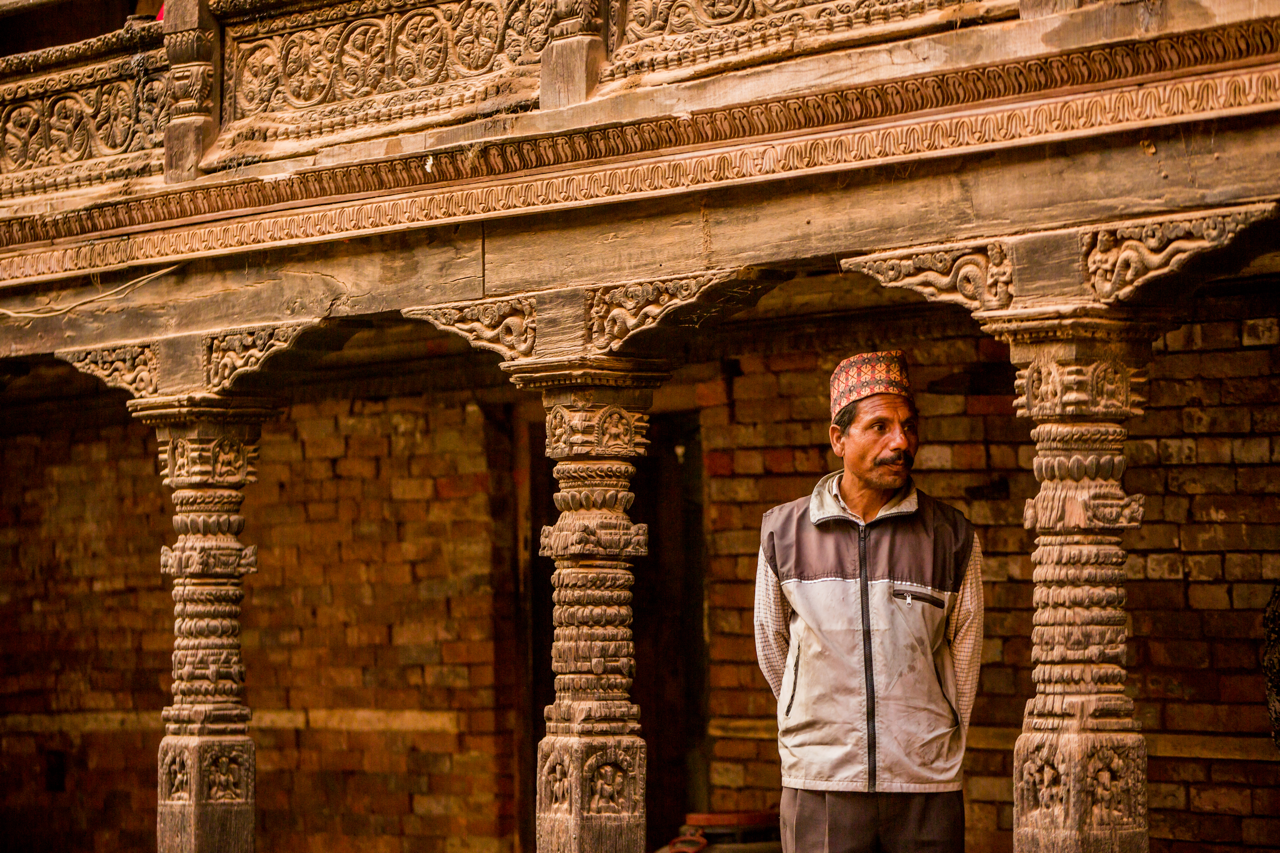

Nepal has maintained ZERO poaching of its endangered animals, including elephants, rhinos and tigers, for the past 12 years.
Nepal has become the world’s gold standard in the fight against poaching and received international accolades for recording zero poaching of rhinos in 2011, 2014, 2016, 2018, 2019, and 2020. The Nepalese government has ensured local communities benefit financially from the country’s parks and ecotourism. The government gives local communities 50 cents of every tourist dollar, making the wildlife more valuable alive than dead.


Mount Everest actually has two other names, Sagarmatha and Chomolungma.
The Royal Geographic Society pronounced the official name "Mount Everest" in 1865, named after Sir George Everest, the Surveyor General, but he did not want the peak named after him, believing it important to use local names. The Nepali word for Everest is Sagarmatha, meaning “forehead of the sky.” Sherpas (which is actually the name of an ethnic group in Eastern Nepal, not just a word for someone who lugs your gear) call it Chomolungma, meaning “Goddess Mother of the World.”




Pokhara is called the “Gateway to the Himalayas” and the starting point of many of the most famous trekking expeditions, but what will grab your attention is the constant swooping of dozens of colorful paragliders filling the skies above you. It is one of the top paragliding locations worldwide, having all the right ingredients: stable thermals, convenient take-off and landing zones, the safety of a large lake for emergency landings and incredible mountain views.
I had a total “James Bond experience when I stayed at the Waterfront Hotel there, jumping off a cliff, gliding around for half an hour doing corkscrew tricks surrounded by hawks, then landing right next to the pool of my hotel, where I took off my parachute and went directly to a lounge chair for a cocktail — no big deal!


Nepal is the birthplace of Lord Gautam Buddha, The founder of Buddhism.
Buddha’s exact birthplace is preserved in Lumbini, Nepal, inside the Maya Devi temple, and because of this, Lumbini in Nepal is the holiest pilgrimage site for Buddhists worldwide.
Boudhanath Stupa is the largest and holiest Tibetan Buddhist temple outside Tibet.
I spent the day with hundreds of monks chanting, playing instruments, wearing ornate headdresses and praying around the stupa’s base. If you are lucky, on certain holy days you can watch the monks elaborately decorate the stupa and participate in the Kora Buddhist prayers by walking clockwise around it, spinning the hundreds of prayer wheels as you go from right to left.





Visit The Hindu City of the Dead.
Death is part of Life at Pashupatinath Temple, The Hindu City of the Dead. This is one of the most sacred Hindu temples dedicated to god Shiva and located on both banks of Bagmati River in Kathmandu. Every year this temple attracts hundreds of elderly followers of Hinduism who seek shelter for the last several weeks of their lives, to meet death, be cremated on the banks of the river, and travel their last journey with the waters of the sacred river Bagmati, which later meets the holy river Ganges. Hinduists from every corner of Nepal and India are arriving here to die or bring their dead.
It is believed that those who die in Pashupatinath Temple are reborn as a human, regardless of their karma. All around the banks of the river you can find brightly painted Sadhus, or holymen who are trying to acquire liberation from the cycle of death and rebirth by meditating and astrologers that can predict the exact day of your death or just read your palm if you prefer not to know. This place is huge, like a city within a city and has been in existence since 400 AD. There is a powerful energy there and at any given time while you are there visiting, you will get the chance to see at least one open air cremation and watch how they prepare the bodies for the cycle of death and rebirth.


Laura Grier
Laura is a dynamic Adventure Photographer, Photo Anthropologist, Travel Writer, and Social Impact Entrepreneur. With a remarkable journey spanning 87 countries and 7 continents, Laura's lens captures both the breathtaking landscapes and the intricate stories of the people she encounters. As a National Geographic artisan catalog photographer, Huffington Post columnist, and founder of Andeana Hats, Laura fuses her love for photography, travel, and social change, leaving an impact on the world.
Experience Black Mexico
Black Mexicans celebrate their African heritage through arts and culture.
Read MoreFrom Abstraction to Realism in Ancient Greek Art
If you ever find yourself struggling with Athens’ summer heat, cool off in its museums and discover a whirlwind of art and civilization.
Small statues typical of the Cycladic Culture, which flourished between the fourth and second millennia BC. Taken by Dermot Curtin.
A human face represented only by an angular nose bridge and a semi-oval silhouette. A procession of curvilinear stick figures, lavished with somewhat less detail than bizarrely eight-legged horses, inanimate chariots and abstract designs. A general preference for the symbolic over the literal and the real. Much of the art you’ll find in Greece’s National Archaeological Museum (NAM)is highly abstract; parts of the collection, particularly those of the Cycladic Period, have a distinctly postmodern feel to them. Such works, however, are not the product of the 19th and 20th century revolt against Greco-Roman and Renaissance verisimilitude, long a dominant force in European art. They instead predate the Classical period and its values by hundreds or thousands of years.
Almost all visitors to Athens who can take the heat make the long, slow trek up the Acropolis to see the Parthenon. Many of those will then visit the Acropolis Museum, a relatively new museum home to much of the pride of Greece’s classical heritage, including the portion of the Parthenon Frieze that Thomas Bruce didn’t get around to looting (plaster casts of the originals fill in gaps, labeled with an ignominious “BM” for British Museum). Still popular, but less of a universal attraction, I found the National Archaeological Museum to be the more interesting of Athens’s two great museums dedicated to antiquity. The NAM’s more varied collection allows visitors to chart the development of Greek style over several millennia, seeing works that are stunning in themselves and better understanding of one of the most radical changes in aesthetic values before the modern age.
The original segments and fragments are noticeably grayer than the majority plaster copies. Taken by Dermot Curtin.
Greece’s island territories were its most precocious in terms of art and civilization. The Minoan and aforementioned Cycladic cultures left a remarkable heritage, which stand in marked contrast to later Hellenic society and each other. Cycladic art is most famous for its austere minimalism, especially as expressed in statues such as the two in this article’s introductory photograph. The Minoans took a different approach, painting vivid frescoes which have, in part thanks to a volcanic eruption sometime between 1650 and 1550 BC, survived thousands of years in good condition. Human figures in Minoan art are stylized, but are far from the degree of abstraction found in their Cycladic semi-contemporaries. Many Minoan paintings not saved by volcanic ash were unearthed at the Palace of Knossos, where King Minos of Greek myth was said to have fed young Athenians to the dreaded Minotaur every year in the Heroic Age.
Two Minoan frescoes, originally from Santorini and preserved by its great eruption. Taken by Dermot Curtin.
Although the Minoan civilization flourished on what is now Greek soil, in one respect it was not yet a Hellenic society: language. The Minoans developed their own system of writing, known to history as Linear A, around the 19th century BC. It has never been deciphered, but linguists have been sound out its symbols since its direct descendant, known as Linear B, was cracked in the early 1950’s. Linear B tablets represent the earliest recorded form of the Greek language called Mycenaean Greek, and are generally administrative documents that the elite used to keep track of their resources and labor. Mycenaean tablets from Crete are indirect evidence for the rise of Hellenic culture in insular Greece, recording a nobility that used Greek names and lower orders with older, native Minoan names. The Mycenaean culture originated in mainland Greece, and expanded south and east into what are now the Greek islands. The Minoan language has no confirmed relatives or descendants.
Linear B tablet from not long after the Mycenaean conquest/cultural shift in the 1400s BC. Taken by Dermot Curtin.
Mycenaean Civilization was famous long before its archaeological rediscovery in the late 19th century as the setting of Homer’s Iliad and Odyssey. Although Homer composed centuries after the Bronze Age Collapse of circa 1200 BC, he knew many details about the earlier period; the blind poet placed Agamemnon, the the most important leader of the Greeks in the Trojan War, on the throne of Mycenae, which modern archaeology has revealed to be the largest city of the age. Many of the most significant finds from the Hellenic Bronze Age are ornately decorated thin gold sheets, which are part of a broader European artistic trend of the same period. I was immediately reminded of similar (albeit less intricate) artifacts from Bronze Age Ireland. Other works, such as the beautiful inlaid dagger below, have no obvious parallel.
Many gold Mycenaean artifacts from the National Archaeological Museum. Taken by Dermot Curtin.
Disk from a Reel, Irish, c. 800 BC. The Metropolitan Museum of Art. CC0.
Gold Dagger from the National Archaeological Museum. Taken by Dermot Curtin.
The Bronze Age Collapse hit many areas hard, and Greece harder than most. Linear B fell out of use around 1200 BC, leaving the Hellenic world without a script until about 200 years later when the Phoenician abjad was modified for the purpose, with vowels added to make it a viable option for the Greek language. Greece had entered its Dark Age, a radical departure from the centralization, trade and literacy of the Mycenaean and Minoan eras. Despite this, literature flourished; Homer and Hesiod composed their epics, laying the foundation for millennia of inspiration and adaptation.
Two Geometric amphorae from the National Archaeological Museum, from an age (900-700 BC) defined by abstract art. Taken by Dermot Curtin.
As civilization began to recover from the Collapse in the tenth century BC, the Geometric style emerged to fill the void left by Mycenaean art. This style was deliberately abstract, characterized by repeating linear patterns on large amphorae. People, when present at all, appear as small stick figures. Mourners dramatically and uniformly put their hands on their heads, their arms bent at sharp angles that would look unnatural on a more realistic human design; such a pose is necessary to convey distress, as the faces are not given enough detail to show any kind of emotion. The meandros, a repeating pattern that would later be a common fringe for other designs, here takes center stage, while the funerary procession is confined to a narrow box in the upper-center of the amphora. There is little to differentiate one person from another, the exceptions being a child, who is clearly smaller than the adults, and the deceased, who lies on his or her back. Geometric style seems to be the product of a culture that did not value the individual human being as a subject for artistic expression.
Marble statue of a youth, from Archaic Greece c. 590-580 BC; you can see the abstract art of the Geometric give way to stylized human forms. Metropolitan Museum of Art. CC0.
The Kroisos Kouros, c. 530 BC. User:Mountain. CC0.
Greece only fully recovered from the Bronze Age Collapse as it transitioned into its Archaic period around the eighth century BC. In this period, as Greek culture built up to its fifth century zenith, the seeds were planted for many of the institutions and conventions that would flourish in the Classical era (beginning 480 BC with the end of the Persian Wars). The Olympic games were founded, dramas began to be staged in Athens and lawgivers like Solon imposed constitutional reforms that would eventually lead to democracy. The visual arts made a dramatic turn, as abstract designs retreated to the background in favor of a strong emphasis on the human form. The most typical art form of the time is the kouros, a strongly stylized nude statue of a male youth. Although sometimes differing in size and detail, all kouroi adhere to the same basic plan, standing up straight with the left foot out front, braided hair and a serene affect. The figure on the right was made about 50 years later than its counterpart to the left, and although clearly the product of more skilled craftsmanship does not deviate from the essence of the older model.
Statue from the Egyptian Old Kingdom that resembles the Greek Kouros; note the forward left foot. The Metropolitan Museum of Art. CC0.
Although impressive in their own right, such statues are not dissimilar to art produced by Middle Eastern cultures in the Bronze and Iron ages. Initial kouroi designs seem to have been borrowed in part from Egypt during the early part of the Archaic period. In the jubilant aftermath of the Greek victory in the Persian Wars, however, Hellenic artists made an unprecedented turn toward realism that would cement Greece’s place in art history for all time.
Roman copy of Polykleitos’s famous Diadumenos, original circa 420 BC. Taken by Dermot Curtin.
A Greek sailor looks out wistfully on the sea battle where he died, funerary stele. Taken by Dermot Curtin. (melancholy)
Ancient art reached its apogee in the Classical period of the fifth and century BC. This is the era which would come to define Greek civilization, and marks one of high water marks of cultural production the world over. In the visual arts this meant a form of idealized realism, meant to portray natural forms in their best possible state. This involved more than technical skill, as sculptors like Polykleitos incorporated specific mathematical proportions into their work in their drive for perfection. The incredible detail allowed for greater subtlety of design; compare the melancholy of the fallen soldier on the left to the sharp and uniform gestures on the Geometric mourners above. The sculptures look like people you could actually know, except fitter and far better looking.
Geometric amphora. Taken by Dermot Curtin.
Terracotta volute-krater with red figure design, circa 450 BC. Metropolitan Museum of Art. CC0.
The period between 750 and 450 BC saw a revolution in aesthetic values, matched only by the modern rise of modern art in the 19th and 20th centuries. In the Ancient Greek world, however, the shift was in the opposite direction, from the abstract to the concrete. The change in taste was coincided with a dramatic rise in skill, leading to works that still keep many of the world’s art historians and critics occupied. If you ever find yourself in Athens, make sure to visit the National Archaeological Museum to experience the whirlwind for yourself.
Dermot Curtin
Dermot is copy editor and a contributing writer at CATALYST PLANET. He is a recent graduate of William & Mary, majoring in History and Government, and enjoys learning about the world and conveying his experiences through writing.
Hagia Sophia: Istanbul’s Oldest Building
Having served as a church, mosque and museum, Hagia Sophia represents both religion and history in Istanbul.
Hagia Sophia. Adli WahidCC BY-SA 3.0.
Built in the 6th Century, Hagia Sophia is the oldest building in Istanbul, Turkey. This ancient structure has been an important spiritual center for both Christians and Muslims, and its history is shown through its architectural features. Here is a deep-dive into the creation of Hagia Sophia, its meaning to different cultures, and how to visit it today.
History
Interior of Hagia Sophia. Wolfgang Guelcker. CC BY 3.0.
Originally named “Megale Ekklesia,” or “Great Church,” Hagia Sophia was built in 360 under Emperor Constantius. After the church was destroyed by riots in 404, it was rebuilt by Emperor Theodosius in 415. During this period, the church received its current name, “Hagia Sophia,” or “Holy Wisdom.” After being burned down during a revolt in 532, the final structure of Hagia Sophia was resurrected under Emperor Justinian I in 537, with some restorations in the 14th century. This version of the church was known as the Cathedral of the Ecumenical Patriarchate of Constantinople, which was a spiritual center of the Eastern Orthodox Church. After the Ottoman Empire took over Constintinople in 1453, Sultan Mehmet II repurposed Hagia Sophia, which served as a mosque until becoming a museum in 1935. In 1985, Hagia Sophia became a UNESCO World Heritage site, giving official recognition its long cherished cultural value.
Controversy
Greek protest against Turkey. Des Byrne. CC BY 2.0.
In 2020, Hagia Sophia was renamed a mosque under the Turkish government. This decision created controversy between Turkey and other nations, as repurposing it as a mosque draws away from the entirety of the structure’s history and the mutual respect between religions. This also strengthened existing tensions between Turkey and Greece, as Hagia Sophia was once part of the Greek Orthodox Church.
Architecture
Dome
Main dome of Hagia Sophia. Osama Shukir Muhammed Amin. CC BY-SA 4.0.
Following St. Peter’s Basilica in Rome, Hagia Sophia is home to the second largest pendentive dome in the world. The main dome of the structure has a diameter of 107 feet and is supported by 4 pendentives, which are large triangular arches that meet in the middle of a structure. These structures are one of the earliestlarge pendentives to ever be made. There are also two semi-domes on each side of the main one, supported by columns.
Columns
Columns in Hagia Sophia. Serafita. CC BY-SA 4.0.
Hagia Sophia has 140 columns, all from different parts of the world. For example, the purple columns supporting the semi-domes of the structure originated in Egypt. There are also green columns from the Artemis Temple in Ephesus, an ancient Greek city. The most prominent columns are made of Verde Antique stone, which was mined from quarries in the city of Larissa, Greece during the Byzantine empire. These columns are 34 feet tall, and its material was used frequently during the 6th century.
Mosaics
Mosaic of the Virgin Mary and Jesus. World History Encyclopaedia. CC BY-NC-SA 4.0.
Originally, Hagia Sophia displayed many Christian mosaics, but these images were covered during the Ottoman Empire. Some of these mosaics depict angels and praise Jesus and the Virgin Mary, while others take the form of emperors such as Justinian and Constantine. One of the most iconic mosaics shows the Virgin Mary holding baby Jesus, and this image remains uncovered today. Created in the 860s, this is the oldest mosaic in Hagia Sophia.
How to Visit
People visiting Hagia Sophia. Magnus Manske. CC BY 2.0.
Though it has reverted to a mosque, Hagia Sophia is still open to the public. Visitors are required to remove their shoes before walking its carpets. Hagia Sophia is open to the public every day of the week, but closes to non-worshipping visitors during prayer hours. Guided tours of Hagia Sophia are also offered through different websites, usually for a fee.
Click here for more Hagia Sophia visitation guidelines.
Alexandra Copeland
Alexandra is a student at The College of New Jersey studying psychology and journalism. She is a lover of coffee, dancing, and visiting new places. Being raised with her Greek culture has inspired her interest in cultural customs around the world. She is a passionate writer and hopes that her work will make an impact in the future.
7 Books by LatinX Authors to Read This Hispanic Heritage Month
From literary classics to modern favorites, here is a list of must-read titles by LatinX authors in celebration of Hispanic Heritage Month.
A traditional dancer performs at a Hispanic Heritage Month festival. GPA Photo Archive. CC0
With an incredibly rich history and huge variety of cultures, it is no surprise that Latin America has consistently produced world famous and award winning authors for decades. From historical fiction about the continent’s troubled colonial past to light-hearted stories about colorful local traditions, the diversity of Latin American literature spans time and space to offer incredible insights into life for bookworms and the average fiction reader alike. In celebration of September as LatinX Heritage Month, here are seven incredible books by LatinX authors to add to your reading list.
“Violeta” - Isabel Allende
Multi-award winner Isabel Allende’s most recent novel follows the titular character from her birth to her death over a tumultuous century. Violeta is born during the Spanish Flu in 1920 and lives through the Great Depression, World War II and all the changes brought by the turn of the twenty-first century, while navigating family, romance and her own desires. Allende, arguably the first internationally successful female Chilean author, is known for writing in the “magic realism” style, weaving history with fiction and myth with reality to create engaging plotlines that find their roots in Hispanic culture, society, and politics. This novel is no different, and Violeta’s story, written in the form of a letter to the one person she loves the most, recounts 100 years of Chilean history through the eyes of a determined, humorous woman who, above all else, carries a deep love life.
“Solito” - Javier Zamora
A poet by trade, Salvadoran writer and activist Javier Zamora has collected his fair share of accolades, and is currently a Radcliffe Fellow at Harvard University. The New York Times bestseller “Solito” is his latest project having been published in 2022 and tells the heart wrenching story of Zamora’s perilous journey from El Salvador to the United States at only nine years of age. Leaving his extended family and childhood home behind, Javier travels almost entirely alone to reunite with his parents who had fled the country years earlier. He has no way of knowing about the seemingly insurmountable obstacles that will stand in his way, or the group of kind-hearted strangers who will come to treat him like one of their own. This biographical memoir is unlike either of Zamora’s earlier published works, and provides an incredible and intimate account of a story shared by millions of Central American migrants who have no choice but to flee their homes due to violence and political unrest.
“A Little Luck” - Claudia Piñero
After the success of her earlier novel “Elena Knows,” Argentine novelist and finalist for the 2022 International Booker Prize Claudia Piñero has astounded her readers once again with this 2015 novel which has only recently been translated to English. Piñero has an incredible talent for exploring the depths of unbelievably tragedy and pain while offering her audiences brief moments of hope, and “A Little Luck” is no different. The novel follows Mary Lohan, a woman who fled the suburbs of Buenos Aires after an accident but has finally returned two decades later. While on the outside she in no way resembles her past self, she is very much still the same Mary, and as the past starts to resurface her present begins to crumble. “A Little Luck” is a beautifully crafted story about love, lies, unforgettable places, uninvited people, and most of all, the inescapable power of fate.
“The Brief Wondrous Life of Oscar Wao” - Junot Díaz
Originally published in 2007, this novel won the Pulitzer Prize for Fiction in 2008, along with a host of other awards. Dominican-American author Junot Díaz penned this novel, during his time at MIT, where he continues to teach in the Creative Writing department. Díaz wrote several works while attending the prestigious university, but “The Brief Wondrous Life of Oscar Wao” remains his most well-known and celebrated title to this day. The novel follows the titular character, a lovable and overweight Dominican teenager living in New Jersey with his mother and sister. He wants nothing more than to become a world famous author, except for maybe finding true love, a dream that feels far out of reach given the curse that has afflicted his family for generations and has resulted in only ill-fated romances. With an incredibly skilled hand, Díaz guides his readers through the life of Oscar and his family, both past and present, while also touching on the brutal reign of Dominican dictator Rafael Trujillo.
“Like Water for Chocolate” - Laura Esquivel
This 1989 novel was translated into English in 1992, and immediately became a modern classic in the pantheon of Latin American literature. The title comes from a common idiom in Spanish-speaking countries, “como agua para chocolate,” which refers to an intense state of emotion, whether it be anger, excitement or even arousal. Mexican author and screenwriter Laura Esquivel chose this for the title of her first novel because of the many references to food and culinary culture throughout the story, which add to her detailed description of family life at the turn of the century in Mexico. The novel makes use of humor and magic to explore a bittersweet love story both relatable and fantastical, as well as its impact on the families at the center of the drama. Each chapter begins with a recipe filled with cleverly chosen words and descriptions which allude to upcoming character and plot developments, an aspect that was unfortunately largely lost when Esquivel wrote the screenplay for the 1992 movie adaptation.
“In the Time of the Butterflies” - Julia Alvarez
Julia Alvarez is a Dominican-American essayist, poet, and novelist who is known for her ability to weave fact with fiction and craft irresistible plotlines that detail political and social events through the eyes of colorful and relatable characters. “In the Time of the Butterflies” is a perfect example of this, as a work of historical fiction with its foundations in the very real story of the Mirabal sisters, four young women who tirelessly fought for their country’s freedom under the dictatorship of Rafael Trujillo in the Dominican Republic during the 1900s. Known by Dominicans as “las mariposas” or “the butterflies,” the sisters were unfortunately assassinated in 1960 for their efforts to overthrow the government. Alvarez gives these characters a new life by imagining their time as teenagers, and how they came to be involved with revolutionary efforts before falling victim to the destructive regime. Through the voice of each sister, the story of their political involvement, victimization and deep love for each other slowly but surely come to light.
“100 Years of Solitude” - Gabriel García Márquez
No list of Latin American literature is complete with this 1982 Nobel Prize-winning classic, and what many consider to be Gabriel García Márquez’s best work. The late Colombian novelist published this novel in 1967, chronicling seven generations of the Buendía family and the rural town of Macondo they built in Colombia between the 1820s and the 1920s. While separated from the rest of Colombian society by an imposing mountain range, Macondo is a microcosm of larger society with its troubles and its magic, although the key to all of the town’s secrets remain hidden in a coded book. Through its delicate blend of magic, reality, history, and tradition, Márquez presents an allegorical insight into the turbulent social and political atmosphere in Colombia during the post-colonial times, and the country’s development over the following century.
Tanaya Vohra
Tanaya is an undergraduate student pursuing a major in Public Health at the University of Chicago. She's lived in Asia, Europe and North America and wants to share her love of travel and exploring new cultures through her writing.
Visual Protest: The History and Legacy of the Berlin Wall Art
The Berlin Wall spent decades as a symbol for ideological division, but has become an outlet for personal expression.
Thierry Noir’s heads at the East Side Gallery. Paul VanDerWerf. CC by 2.0.
Visually, the East Side Gallery in Berlin, Germany is a vast edifice of technicolor concrete. Although only fragments of the original 96 mile (155 kilometer) wall remain, the sections that still stand are striking. From the flashes of aquamarine and mustard yellow featured in Thierry Noir’s iconic cartoon heads to the dark spray paint outlining miscellaneous graffiti, the murals are simultaneously imposing and welcoming. But the gallery's importance runs deeper than its appearance; decades of history and political turbulence echo through its fallen walls.
When fully intact from 1961 until 1989, the Berlin Wall separated East Berlin from West Berlin; both halves were located well within East German territory, making West Berlin a NATO exclave in the Eastern Bloc. Prior to the wall's construction, emigration to West Germany by skilled workers, professionals, and intellectuals threatened East Germany’s economy. A few years after World War II, East Germany was constituted as a communist state controlled by the Soviet Union, while West Germany was formed out of the French, British and American occupation zones. The wall became a physical symbol of the Cold War: a division not only of Europe geographically, but also the global ideological divide between communism and democracy.
In the midst of longstanding Soviet de facto control of East Berlin, in 1985 then-Soviet leader Mikhail Gorbachev introduced the reform policies of glasnost (“openness”) and perestroika (“restructuring”), referring primarily to freedom of expression and economic reform, respectively. This decision, coupled with the growing number of protests sweeping across multiple Soviet republics, created a breaking point that eventually erupted into mass action. On November 9th, 1989, East German spokesman Günter Schabowski announced that East Germans would be free to travel into West Germany, starting immediately. In reality, travel was supposed to commence the following day, with regulations to prevent complete freedom of movement. But it was too late for regulations, and the crowds of people from East Germany immediately began to climb and even physically break down the wall.
The fall of the Berlin Wall, 1989. Gavin Stewart. CC by 2.0.
Because of the long period of repression associated with the barrier, one might assume that civilians who had lived on either side would want nothing to do with it ever again. But in 1990, just months after the Wall fell, some of the most famous murals of the Berlin Wall were painted (some of the preserved graffiti, including Thierry Noir’s brightly-colored heads, was created even before the Wall fell). With a newfound sense of freedom, people found their voice through art and created pointed political, social and cultural commentary.
Arguably the most famous of these works is Dmitri Vrubel’s “My God, Help Me to Survive this Deadly Love.” Commonly referred to as “Fraternal Kiss,” Vrubel’s piece depicts East German leader Erich Honecker and Soviet leader Leonid Brezhnev kissing. The kiss between the two socialist leaders was a rare, but not unknown greeting — often socialist leaders would kiss each other thrice on each cheek after embracing and, at special events, would kiss on the mouth to demonstrate solidarity and brotherhood.
The Brezhnev-Honecker mural was based on a real photograph of the event taken by Regis Bossu eleven years earlier, in 1979. The kiss took place after an economic agreement between the USSR and German Democratic Republic (the formal name of communist East Germany). The image was famous when it was originally taken, but Vrubel’s artistic rendering took its notoriety to new, unforeseen heights.
“My God, Please Help Me Survive this Deadly Love.” Andy Hay. CC by 2.0.
Although Vrubel’s iconic piece is perhaps the most recognizable mural, much of Berlin’s wall art would not have been painted without the help of Kani Alavi. Alavi was an organizer of the East Side Gallery, which invited artists from around the world to paint and express their reflections on the Cold War ideological divide and personal experiences. Alavi’s own visual contribution, “It Happened in November,” is a synthesis of personal experience and political commentary. The Berlin Wall consisted of two distinct walls separated by a gap for maximum security, and Alavi’s mural depicts thousands of faces walking between them on the day it came down. Alavi had viewed this scene personally from his apartment overlooking Checkpoint Charlie, which was the best-known border crossing between East and West Berlin.
“It Happened in November.” Fraser Mummery. CC by 2.0.
Alavi also directly helped inspire another of the most notable murals, the “Berlin Wall Trabant” by artist Birgit Kinder. Supposedly, Alavi told Kinder to paint anything she wanted on the wall, but she hesitated for a moment. It was only when she looked at her East-German manufactured Trabant car that she felt inspired. She began painting her car forcefully bursting through the wall, symbolizing the city’s escape from Soviet rule. Close observers will note that the license plate reads “Nov 9-89,” which is the day the Berlin Wall fell.
“Berlin Wall Trabant.” Judith. CC BY-NC 2.0.
When the wall fell, and the Soviet grip on East Germany loosened, creativity flowed. Artists visually translated their newfound freedom onto a canvas that had once held them captive. Their murals symbolized the reclamation of power by East Berlin’s formerly oppressed inhabitants. And with this somewhat-unlikely canvas they were able to recount their lived experience and depict the conflict and compromise of the world around them, concretely living in vivid color, forever.
Carina Cole
Carina Cole is a Media Studies student with a Correlate in Creative Writing at Vassar College. She is an avid journalist and occasional flash fiction writer. Her passion for writing overlaps with environmentalism, feminism, social justice, and a desire to travel beyond the United States. When she’s not writing, you can find her meticulously curating playlists or picking up a paintbrush.
On the Table: Sharing food Around the World
The tradition of sharing meals is a custom that transcends national borders and bridges generational divides.
Marketplace in Seychelles. UN Women. CC BY-NC-ND 2.0
Breaking bread has long served as a sacred means of creating community and connection. In the 18th century, the term for a “good friend” in Dutch translated to a “table friend.” Today, such an exchange of friendship is still an elemental ingredient to mealtimes. The settings vary across the globe, from pre-set dinner tables to park picnic benches, floor mats to swiveling bar stools. About a quarter of the world’s population does not sit nightly at a table, but rather gathers around a mat or stands balancing on a wooden plank in the midst of the mud in a market. But, no matter the gathering space, one aspect remains core to nearly all eating traditions: the manner in which food is shared is a ritual that celebrates the communal over the individual.
Sharing small bits of food is a human habit that anthropologists believe connects to a primal need to forge alliances through a sense of communal equality. Such a need has led to a kind of communal snacking culture, in which groups share nibbles of food. From spreads of hummus and babaganoush, to tapas of cheese and olives, to steamed buns of dim sum, communal eating habits around the world exemplify how the best meals are always shared.
Ethiopia
An Ethiopian dish. Malingering. CC BY-NC-ND 2.0
Communal eating is a central part of Ethiopian food culture and is aided with the use of Injera, a thin sourdough-risen flatbread with a spongy texture. Most Ethiopian meals are eaten with one’s hands and from a communal plate placed in the middle of the table. The left hand is considered unclean, and so the right hand is used for eating and ripping apart pieces of Injera to scoop up food. Traditionally, meals begin with the oldest at the table taking the first bite, a custom to indicate respect to elders.
The communal significance of food in Ethiopia is represented through a practice called the gursha: a form of hand-feeding, in which one will place a small morsel of food into another’s mouth. The gesture is usually first given to elders or guests at the meal and signifies a sign of respect, hospitality, and friendship.
Foods to try
Kitfo is a native Ethiopian dish made with raw beef. Similar to an American hamburger, kitfo uses Injera rather than a bun. The dish originates from the Gurage region of Ethiopia and is believed to have emerged from the Orthodox Christian tradition as a means of eating meat to break the fast after Lent.
France
French bakery. Hannah Wilson. CC BY-ND 2.0
French food culture is defined by a sense of intention and relaxation, with meals often lasting for hours at a time. The care characteristic of French culinary culture is exemplified in its “gastronomic meal.” The meal, which became a part of UNESCO’s List of the Intangible Cultural Heritage of Humanity, refers to a kind of dining tradition in which a large meal is prepared to bring family together. Elements of the gastronomic meal include its use of fresh local ingredients, its careful selection of dishes that represent a diverse spread of the country’s regional cuisines, an emphasis on food and wine pairings, an aesthetic table setting, and group conversation throughout the dinner. The meal is often a foundational element to birthday and wedding celebrations and follows a set structure. Starting drinks, or apéritif, begin the meal, followed by up to four courses including a starter, a main dish of fish or meat with vegetables, and a sweet dessert paired with cheese. The meal typically ends with a drink referred to as digestif. Digestifs are characterized by a high alcohol content and rich flavor, and include liquors such as Génépi, Cognac, Armagnac, and Calvados.
Foods to try
While French food is popularly characterized by its flaky baguettes, croissants, and delicate pastries, cuisine varies significantly depending on the region. Cheese and ciders are a popular part of dinners in Normandy, while ratatouille is a family staple in the country’s Mediterranean south.
The Loire Valley boasts bountiful grapes, cherries and berries that are used to make rich liquors and sweet fruit tarts, while the Basque Country pairs fish and meats with spicy herbs and sauces.
Mexico
Mexican meal. VisitPlano. CC BY 2.0
In Mexico, community plays a central role in both the production and consumption of food. In an interview, renowned Mexican chef Margarita Carrillo Arronte described Mexican food as “a women's thing.” Arronte’s statement highlights a cultural tradition in which communal cooking and the sharing of recipes serve as a means of bringing women together, and a conduit for intergenerational knowledge. Dating back to pre-colonial times, the majority of cooks in Mexico have been women. After the arrival of the Spanish in the 16th century, a mix of indigenous, African, and Spanish cooks worked in conquistadors’ kitchens, where they developed a unique culinary blend. Today, some of the top Mexican restaurants have been opened and run by women chefs, the likes of which include Alicia Gironella de Angeli, Patricia Quintana, Monica Patiño, Martha Ortiz Chapa and Carmen 'Titita' Degollado. The State of Michoacán is especially known for its rich culinary life that centers the talents of indigenous female cooks, a status that got the state selected as the host for the upcoming VII Gastronomy Forum, in October 2023.
In 2010, Mexican food was inscribed on UNESCO’s Representative List of the Intangible Cultural Heritage of Humanity, and recognized for its sense of community and collective participation. Local’s use of the milpa system allows for more sustainable farming practices. The system uses intercropping to allow for multiple species to grow in the same place. When it comes to eating practices, singular utensils such as grinding stones and mortars are used rather than forks and knives.
Foods to try
Corn is a prime ingredient of Mexican food, and serves as a base for a diverse range of dishes. Elote, or corn on the cob, is a typical Mexican street food drizzled in mayonnaise and lime juice, while atole uses corn as its base for a hot beverage that can be sweetened with vanilla, cinnamon, and guava. Mexican tamales which date back to the Aztecs, use corn masa as a dough that can be filled with beans, meats, chillies, or vegetables. The most popular use of corn comes in the form of tortillas, a thin pancake shaped flatbread that serves as a base for beans, meats, and fresh vegetables.
Korea
Kimchi. Hyunwoo Sun. CC BY-NC-ND 2.0
The philosophy of yak sik dong won, or “food is medicine,” lies at the heart of Korean cooking. Korean food culture revolves around a key sense of community and an appreciation of food as nourishment for the soul as well as the body. The sharing of banchan, or side dishes, serves as a key example of a communal eating culture. Banchan side dishes include vegetables, seafood, eggs, meats, and kimchi. Rich in fiber and probiotics, kimchi captures Korean culture’s understanding of food as medicine. The dish consists of fermented vegetables including cabbage and radish, mixed with seasonings such as ginger, garlic and spring onions.
Korean meals draw upon the concept of bapsang: the idea that a table is set up for shared enjoyment. Balance plays a key role in Korean meals, and spicy foods are often paired with more delicate and nuanced flavors, such as broths and rice.
Foods to try
Mandu is a popular Korean snack with traditional roots. Now a common example of Korean street food, the dumpling’s origins date back to the 14th century. It is believed that the Korean royal court frequently ate mandu that mimicked the shape of sea cucumbers as a way to represent the bounty of nature. The philosophy at the core of Mandu’s origins extends to its modern use as a staple of the Lunar New Year to represent future prosperity. The preparation of Mandu also incorporates the communal elements of Korean cooking, as families join together to fold the dough into craftful pouches for meats and vegetables.
Jessica Blatt
Jessica graduated from Barnard College with a degree in English. Along with journalism, she is passionate about creative writing and storytelling that inspires readers to engage with the world around them. She hopes to share her love for travel and learning about new cultures through her work.
Escape the Heat with Cold Foods from Around the World
See how diverse culinary traditions have responded to scorching weather.
Ice Cream. Stevepb. CC0.
As summer enters its dog days, it is not uncommon for people to seek sanctuary within the cool confines of air conditioned rooms. Another strategy trades atmospheric meddling for culinary delights — beating the heat through the sheer pleasure of cool, refreshing dishes. While the temptation of piping hot meals, freshly baked and steaming, is undeniable, the relentless heat can dampen our enthusiasm to partake in such feasts. This is precisely where the enchanting world of chilled cuisine steps in, ready to satiate our taste buds when summer overwhelms the northern hemisphere. Join us as we delve into this captivating culinary realm of cold delights.
1. Gelato—Italy
Roman Gelato. Aaron Logan. CC BY 2.0.
When it comes to chilly delights, there's a particular taste that's impossible to miss — sweetness. Picture yourself relishing an assortment of ice cream flavors, skillfully combined with frozen fruits, cream, and sugar, once you've completed an exciting adventure at a theme park that leaves your T-shirt saturated with sweat. Scientifically, it has been established that the consumption of sweetness amplifies dopamine levels, thus it's only logical for people around the world to use frozen confections to conquer the scorching heat.
The origins of relishing icy delights on sweltering summer days can be attributed to ancient times, when Arabians devised a method of combining snow with syrups to combat the scalding temperatures. It was through the travels of an Arab trader that this innovative recipe found its way to Italy, where it underwent further refinement with the addition of dairy, fruit juice, and sugar. This culinary transformation ultimately led to the creation of Gelato, a frozen delight that has become a firm favorite among Italians, its name simply meaning “frozen” in Italian.
Gelato with multiple flavors. Bruce Stokes. CC BY-NC-SA 2.0.
While Gelato has a long history, dating back to the 16th century when an Italian inventor first served it at the table of the Spanish King, its global recognition came about during the industrialization of food production, including ice cream, during World War II. It was during this time that Gelato gained widespread popularity. In 1940, a breakthrough occurred with the invention of a new gelato machine by technician and designer Bruto Carpigiani. This innovation transformed gelato from a homemade, artisanal treat to one of the most beloved deserts worldwide.
To truly experience the authentic taste of Gelato, it is important to appreciate the differences between it and similar frozen delicacies you may be more familiar with. In contrast to American ice cream, good Gelato contains less milk fat and incorporates less air, resulting in a denser and creamier texture. Additionally, although the desert is known for its vibrant colors, it is worth mentioning that Gelato made with fresh fruit tends to have a more natural hue. For instance, a pistachio Gelato should have a delicate brown shade instead of a bright green color.
2. Kakigori—Japan
Matcha Awayuki Kakigori. City Foodsters. CC BY 2.0.
In Japan, frozen sweet desserts take on a unique form in the dish known as Kakigori. These towering mounds of shaved ice, generously adorned with a variety of fruit syrups like strawberry, melon and lemon, and garnishes that can be whole deserts in themselves such as mochi and sweetened red beans, offer a delightful crunchiness that sets them apart from Western ice cream. Resembling freshly fallen snow in texture, Kakigori has become an essential part of the Japanese summer dinner table.
The history of Kakigori can be traced back a thousand years, as it finds mention in classic Japanese literature. According to the renowned author Sei Shonagon, in a time before refrigeration, people would diligently gather fresh snow and ice during the winter season, carefully preserving it in specially designed storehouses. They would then transform this frozen treasure into delightful icy treats during the scorching summer months. What was once a highly valued luxury has in modern times become a spoonful of joy accessible to the masses. Today, Kakigori is commonly served in bowls, allowing for a generous amount of toppings and syrups to be piled high, eagerly savored with a spoon.
3. Air Mata Kucing—Malaysia
Longan Drink. Insatiablemunch. CC BY 2.0.
Alongside enjoying delectable, frozen treats, why not uplift your spirits on a summer day with a refreshing cup of frozen drink? Drinks like Tinto de Verano and Aguas Frescas offer a delightful twist to beat the heat. Take, for example, Air Mata Kucing in Malaysia, a beverage that has gained acclaim as the planet’s sixth most delicious drink according to CNN.
This drink becomes an absolute must-try when the scorching weather increases the risk of infectious diseases. What makes it even more appealing is its combination of fantastic taste and nutritional value. Air Mata Kucing is prepared using dried monk fruit as a natural sweetener, fresh winter melon that is peeled and grated, rinsed dried longan pulp, dried snow fungus/white fungus, sugar, and water.
The ingredients used in Air Mata Kucing, namely monk fruit and longan, offer a multitude of health benefits due to their anti-inflammatory and antibiotic properties. When the winter melon is grated, it lends a smooth and refreshing sensation as the ice melts tantalizingly on your tongue. This unique combination of flavors, coupled with the drink's mild sweetness and cooling effect, has propelled Air Mata Kucing to become one of the top-selling drinks in Malaysia.
Stall selling Air Mata Kucing situated in Petaling Street. Neoluap. CC BY-NC-ND 2.0
In particular, a bustling stall situated in Petaling Street, Kuala Lumpur, has gained a reputation for serving this beloved drink, attracting eager patrons who happily queue up for a chance to savor its refreshing taste.
4. Lassi—India
Mango Lassi. Joey. CC BY 2.0.
For those who hold a deep appreciation for dairy-based delicacies, Lassi from India presents itself as an unmissable experience — an age-old smoothie that has stood the test of time. Among its various renditions, Mango Lassi takes center stage as a traditional Indian drink hailing from the regions of Punjab and Multan.
The roots of Lassi stretch back to ancient Indian texts dating as far as 1000 BC, where its blended yogurt concoction was celebrated for its gentle effect on the stomach and its digestive benefits. The recipe for lassi remains elegantly simple: a silky, chilled fusion of yogurt, combined with water, fruit, sugar, and a blend of spices tailored to your taste. While lassi has found its way into the menus of Indian and Pakistani restaurants worldwide, it remains an invigorating remedy for those toiling under the sweltering North Indian sun, where the mercury can surge above 100 degrees.
5. Gazpacho—Spain
Gazpacho in summer. Marco Verch Professional photographer. CC BY 2.0.
Not in the mood for something sweet? Don't worry, the world also offers a variety of delectable savory options to keep you cool and satisfied! During hot summer days when appetite may be diminished, traditional hot meals can be replaced with an array of dishes that are best enjoyed cold. Imagine indulging in a refreshing cold soup packed with juicy vegetables and crisp flavors — an appetizing treat for your taste buds.
Gazpacho, widely known as the “Spanish chilling soup,” stands as an iconic cold dish that perfectly embodies the essence of summer. Originating from the Andalusian region, an autonomous community in Spain, Gazpacho is traditionally enjoyed chilled, featuring a blend of olive oil, peppers, vinegar, onions, garlic, bread, and water. This refreshing soup, often adorned with diced vegetables or croutons, and occasionally accompanied by hard-boiled eggs or delectable morsels of Spanish serrano ham, provides a satisfyingly cool respite during the scorching summer months. With its diverse range of regional flavors, Gazpacho's true essence lies in its key ingredient—ripe, juicy tomatoes that are readily available to the public. Serving as a culinary symbol of Spanish gastronomy, this beloved dish not only tantalizes the taste buds but also offers a much-needed source of hydration under the blazing Mediterranean sun.
6. Naengmyeon—Korea
Mul-naengmyeon, Chilled Buckwheat Noodle Soup. KOREA.NET. CC BY-SA 2.0.
On hot days, it is worth noting that many hot dishes also have a refreshing cold variant. One such example is Naengmyeon, a chilled noodle dish that is served with actual ice to make sure it stays cool. Tangy, spicy and delightfully chewy, this noodle dish originated as a delicacy in northern Korea, before the country’s twentieth century division. Naengmyeon comes in different forms, including a version served in a watery radish kimchi broth with ice, another featuring savory buckwheat noodles submerged in a cold and clean-tasting broth and a third made with chewy noodles overlaid with a spicy sauce. The noodles are typically garnished with sliced cucumbers, Korean pears, pickled radishes, boiled beef and boiled eggs, adding a burst of flavors and textures. Interestingly, while one may crave cold dishes during the summer, the ancient belief in “Food being medicine and medicine being food” led to the creation of cold noodles, originally consumed during winter. These noodles had a cooling effect, which in turn was thought to stimulate the body's own heat generation.
7. Poke Bowl—Hawaii
Poke Bowl at The Baron, Castle Hill. Surtr. CC BY-SA 2.0.
Finally, for city dwellers and those seeking to maintain a healthy lifestyle, the Poke bowl needs no introduction — a beloved and straightforward dish featuring diced seafood, typically tuna, marinated in a delightful mixture of soy sauce and sesame oil, then tossed with onions. With roots in Hawaii, the term “poke” is simply the Hawaiian verb for cutting something into cubes,” reflecting the traditional technique used to prepare this culinary delight. Freshly chopped tuna and various other fish have long been cherished by Hawaiian fishermen, providing nourishment for themselves and their community. Given the islands’ location in the middle of the Pacific Ocean and the vast distances separating them from other substantial land masses, seafood represents an indispensable source of protein for the Hawaiian community. As Poke has gained immense popularity beyond its native islands, the number of Hawaiian restaurants listed on Foursquare, including those offering poke, doubled between 2014 and mid-2016. The subject of rapid evolution, the Poke bowl has seen delightful variations emerge. Creamy avocado, tangy ponzu sauce, savory teriyaki sauce, earthy mushrooms with a kick, zesty sriracha sauce, aromatic cilantro, and refreshing pineapple or cucumber — all these additions contribute to the savory diversity of this increasingly popular dish.
Whether it is the refreshing feel of ice or the savory delights of gazpacho soup, the invention of cold food remains a testament to human creativity. Using these culinary marvels to conquer the heat demonstrates our ability to transform even the most scorching weather, which lies beyond our control, into occasions of pure delight in which people can gather and revel in the pleasure of shared food experiences. Moreover, the preservation and spread of cold food exemplifies how technological progress has allowed us to pursue food not only as a means of nourishment, but also as a source of pleasure and culinary artistry.
Hope Zhu
Hope is a Chinese international student at Wake Forest University in North Carolina studying sociology, statistics, and journalism. She dreams of traveling around the globe as a freelance reporter while touching on a wide range of social issues from education inequality to cultural diversity. Passionate about environmental issues and learning about other cultures, she is eager to explore the globe. In her free time, she enjoys cooking Asian cuisine, reading, and theater.
Uncharted Catwalks: Exploring Up and Coming Fashion Weeks
From Dubai to Shanghai, here are a handful of lesser known fashion events making waves in the industry.
Prabal Gurung shows his Fall/Winter collection at New York Fashion Week 2022. IMAXtree. CC BY-NC-ND 2.0
When the first official fashion week took place in 1943 in New York, the event captured countless imaginations and drew the most luxurious crowds. The circumstances of World War II had made it impossible for the American fashion media to travel to Paris and cover the shows happening there, but it just so happened that American fashion was beginning to make a name for itself on the global stage; this was its chance to make a splash. The top American designers were invited to put on shows during “Press Week” in Bryant Park, and thus began the tradition of seven small days jam packed with art, celebrity, models, and of course, fashion. Every year, prestigious brands showcase their upcoming collections for either the spring and summer, or fall and winter seasons in September and February respectively (collections are always shown a season ahead of time). During the month, fashion week events take place consecutively in the “Big Four” capitals of fashion — Milan, Paris, New York, and London — resulting in what industry insiders refer to as fashion month. As the international fashion industry continues to take the world by storm, however, fashion weeks are now taking shape all over the world, no longer limited to the traditional four cities. From Tokyo to Vancouver, Dakar to Bogota, over 100 such events occur every single year, showcasing design and fashion talent unique to each region and culture.
Berlin
Kristina Bobkova, a Ukrainian designer, shows her collection titled “Freedom on a Grand Scale” at Berlin Fashion Week. Anna Wender. CC BY-SA 2.0
Berlin Fashion Week has recently gained a reputation for hosting some of the most underrated fashion shows in the world, given the fame and repute of many of the designers who show during the event. Marc Cain and Laurèl aside, even musical celebrities like Lady Gaga have performed sets on Berlin’s runways. Originating in July 2007, the event takes place annually in front of the city’s iconic Brandenburg Gate and has become critically acclaimed for its ability to showcase up and coming designers. Additionally, Berlin’s fashion weeks tend to have themes such as “Fashion and Technology” or “Fashion and Sustainability” which promote social responsibility and introduce a sense of connectivity between fashion and other industries. This year, Berlin Fashion Week will take place from July 10 to 15, with certain shows and events available to the general public without invitation.
Shanghai
Models stand in couples during a presentation at Shanghai fashion Week. Shutterstock. CC BY-NC 2.0
Having emerged as a rising fashion capital in the east, China’s best and brightest designers are all on show at Shanghai Fashion Week. Seeing clothing and outfits that combine haute couture with grunge is common here, as styles from different eras, genres, and genders are mixed seamlessly to produce an almost ethereal collage of textures and materials. While world famous designers like Alexander Wang and Kenzo are mainstays at the event, a barrage of new names like SHUSHU/TONG and Di Du have been carving out a space for themselves as well. In addition to runway shows, this fashion week also hosts a trade fair, in which audiences can get a closer look at some of the designs, amongst other events to round out its offerings. The Fall/Winter shows at Shanghai Fashion Week are scheduled for late September and, as of now, are taking place in person despite the strict COVID-19 measures still in place.
São Paulo
Brazilian designer Ronaldo Fraga presents at São Paulo Fashion Week in 2017. Rolado Fraga. CC BY-NC-ND 2.0
Fashion week events have started popping up all over South America, but São Paulo Fashion Week is by far the most popular. First taking place in 1995, the event has grown to become a focal point of prestige and style outside of the Big Four. Although not global names just yet, many local Brazilian designers, of which Vitorino Campos and Patricia Bonaldi are just two examples, have taken the event by storm and received considerable positive attention from the fashion community. Notably, all of the runway shows that take place during the week are mandated to have at least 10% of their models come from Black or Indigenous backgrounds, thanks to a quota introduced in 2009. While definitely a step in the right direction, many have been calling for an increase in the quota to better reflect the 50% of Brazil’s population with African heritage. Although São Paulo Fashion Week has already come and gone this year, the 2024 offerings promise to be some of the most exciting yet.
Dubai
Models walk the runway at a show during Dubai Fashion Week. Emirates Woman. CC BY-SA 2.0
Given that Dubai is the birthplace of many of the Middle East’s biggest brands and labels, it should come as no surprise that newcomer Dubai Fashion Week is gaining impressive traction. First launched just earlier this year with its first iteration taking place in February, Dubai Fashion Week evolved out of the preexisting Arab Fashion Week, which has been around since 2015. Local designers like Hussein Bazaza and Dima Ayad impress celebrity audiences and critics alike, while internationally renowned brands like Jean Paul Gaultier and Moschino put on shows as guest designers. Because of its recent inception, Dubai Fashion Week is actively accepting applications from brands who would like to show their work, and is uniquely open to hosting designers from all over the world. This year, designers will show their Spring/Summer collections for 2024 between October 10 and 15 (the events are always a season ahead) in the city’s Design District, an area known for its eccentric zeitgeist and unique architecture.
Copenhagen
Models out and about at Copenhagen Fashion Week. Christian Vierig. CC BY-NC 2.0
An undeniable cult favorite, Copenhagen Fashion Week is the biggest such event in Northern Europe and is widely dubbed “the fifth global fashion week.” The very first fashion week in Copenhagen took place in 2006 when two pre-existing Danish clothing fairs, Dansk Modeuge and Dansk Herremodeuge, merged to create this edgy and colorful celebration of style. Uniquely, this event has always held sustainability in the fashion industry as its main focus, as its organizers look for ways to encourage fashion houses and manufacturers to keep the environment in mind during the design and creation processes. In fact, January of 2020 saw the event introduce a three-year Sustainability Action Plan which listed a number of sustainability benchmarks which brands had to achieve. This means brands as established as Ganni and as fresh as Latimmier will have to update their practices in line with the plan to host their shows during the week. The Spring/Summer 2024 iteration of Copenhagen Fashion Week is scheduled to take place from August 7 to 11 this year, with a total of 31 runway shows in addition to other events and presentations.
Tokyo
Street style is just as much of an attraction as the runway shows at Tokyo Fashion Week. Vogue. CC BY-SA 2.0
Tokyo Fashion Week has become synonymous with the epitome of street style, given the eclectic and oftentimes outrageous outfits featured both on and off the runways. While high fashion is certainly on the schedule during the Week, this fashion event is equally famous for the incredible streetwear fashion worn by audience members. With catwalks taking place in a number of equally picturesque and grungy locations around the city, acclaimed designers like Issey Miyake and Junya Watanabe showcase their designs alongside emerging local talent like Chika Kisada and Jotaro Saito. In fact, the Japan Fashion Week Organization launched a Brand Support Program just this past year to encourage and provide economic support for new talent in line with its goal of “being the gateway to global success for new designers.” Tokyo Fashion Week is returning for its Spring/Summer 2024 showings between August 28 and September 2 this year with a variety of shows and art installations for both invited audiences and the public.
Tanaya Vohra
Tanaya is an undergraduate student pursuing a major in Public Health at the University of Chicago. She's lived in Asia, Europe and North America and wants to share her love of travel and exploring new cultures through her writing.
Cultural Fusion Around the World
From food to music, the mixing of different cultures has influenced some of the world’s most widely enjoyed products and experiences.
Chinatown in Philadelphia. Terry Robinson. CC BY-SA 3.0.
Culture mixing occurs when two or more cultures are represented in a single entity at the same time. Whether a fusion dish from your favorite restaurant, or a Starbucks store at the Great Wall of China, culture mixing is present in many forms around the world. Here are examples of culture mixing today, with some that you may even recognize from your own life experiences.
Food
Bánh Mì. Nsaum75. CC BY-SA 3.0.
The popular Vietnamese sandwich Bánh Mì is an example of cultural fusion, as it combines aspects of both Vietnamese and French cuisine. Most ingredients within the sandwich are traditionally Vietnamese, such as pickled vegetables and mayonnaise. However, this sandwich is also served on a baguette with pâté, which are both French exports. This combination of ingredients from different continents not only creates a delicious meal, but it also brings attention to a historical milestone. The Bánh Mì sandwich was created in the aftermath of the French withdrawal from Vietnam, when liberated Vietnamese people added their own ingredients to the baguettes introduced by the French occupiers. In a way the sandwich has come to represent liberation, making it an important part of Vietnamese culture.
Music
Afro Celt Sound System. Ardfern. CC BY-SA 4.0.
Musical fusion not only captures different cultural rhythms, but it may also inspire the creation of whole new genres. For example, the well-known Western genre of rock-and-roll is a combination of jazz, blues, gospel, and country music. Some musical groups have created their own cultural-fusion projects, such as “Afro Celt Sound System,” a group that combines traditional West African, Celtic, and Western pop music to create a radically original sound. Click below to listen to Fissiri Wali Polka by Afro Celt Sound System.
Dance
Bollywood dance. Pete Souza. CC0 1.0.
Along with music, the fusion of different cultural dance styles have created new genres, some that are well known today. Originating in India, the style of dance used in Bollywood combines traditional Indian, salsa, folk, and belly-dancing, as well as western styles like hip-hop and jazz. The word “Bollywood” is even a fusion itself, a portmanteau of the words “Bombay,” an Indian city now known as Mumbai, and “Hollywood.” This form of dance is popular in Indian films, and is used as a form of fitness worldwide.
Neighborhoods
Socrates statue in Athens Square Park, Astoria, NY. Tdorante10. CC BY-SA 4.0.
From Chinatown to Little Italy, New York City is the home to many cultural neighborhoods that capture elements of both American and international cultures. Astoria is a great example of this, as it is home to many Greek restaurants and shops, and yet never forsakes the Big Apple’s traditional architecture. There is even an “Athens Square Park” in the neighborhood, with columns that resemble ones from ancient Greece, along with monuments of significant Greek figures of history and myth, such as the philosopher Aristotle and the goddess Athena.
Fast Food Restaurants
Former Forbidden City Starbucks. Hintha. CC BY-SA 3.0.
Whether it be McDonalds or Starbucks, American fast food chains have made their mark internationally, often appearing in places with historical and cultural significance. There is a Starbucks store located at the Great Wall of China, and there was once one in the Forbidden City at the Imperial Palace. However, the Forbidden City store was removed in 2007 due to controversy surrounding the appropriateness of having it in a place so central to Chinese history and culture.
Being exposed to different cultures can inspire people to learn about customs other than their own, creating a more culturally-aware society. Also, the fusion of cultures has spawned new traditions that are enjoyed both locally and globally. However, as shown through the removal of the Imperial Palace Starbucks, amalgamation is not without its challenges. Research has revealed that feelings of intrusiveness may arise in people who feel that their culture is being threatened by outside forces. Culture influences the way people view and interact with the world, which is why it is important to be conscientious about respecting individual cultures when engaging in any form of culture mixing.
Alexandra Copeland
Alexandra Copeland is a student at The College of New Jersey studying psychology and journalism. She is a lover of coffee, dancing, and visiting new places. Being raised with her Greek culture has inspired her interest in cultural customs around the world. She is a passionate writer and hopes that her work will make an impact in the future.
10 Coffee Recipes From Different Cultures
From Vietnamese egg yolk coffee to Italian chocolate espresso, discover how people around the world like their cup o’ Joe.
Different types of coffee. Rawpixel. CC0 1.0.
From lattés to cappuccinos to the standard grocery store roast, there is great variation in how individuals enjoy their coffee. To really see what’s out there, however, you will need to look beyond sovereign borders to the great international coffee traditions, some of which combine unlikely flavors. For example, Vietnamese “Cà Phê Trứng” combines eggs and coffee, while Scandinavian “kaffeost” is a mix of coffee and cheese. Here is a list of 10 different ways of making coffee from different cultures, along with recipes so you can enjoy them yourself, without hopping on a plane.
Frappé—Greece
Greek frappé. Paweł Marynowski. CC BY 2.0.
Originating in Thessaloniki, the Greek “frappé” is an iced coffee that is shaken to produce a foamy texture. The drink was created when Nestlé employee Dimitris Vakondios was unable to find hot water to make instant coffee during his break, so he decided to make it with cold water and shake it. Frappés are often consumed without extra flavorings, or “Skétos,” but can incorporate milk and sugar according to individual preferences.
How to make a frappé:
Add 2 teaspoons of instant coffee and 2-3 cups of cold water to a shaker, blender or frother. If you are looking for a sweeter flavor, also add 2 teaspoons of sugar. If using a shaker, shake for 30 seconds. If using a blender or frother, mix for 15 seconds.
Add the blend to a glass with ice. You can stir in milk at this point if you would like to do so.
Yuanyang—China
Yuanyang coffee. Mx.Granger. CC BY-SA 2.0.
Translating to “Lovebirds Tea,” this Chinese beverage is a mix of two common drinks: Coffee and milk tea. The exact origin of Yuanyang is unknown, but the beverage is believed to have been created by a street vendor in Hong Kong, and it continues to be a popular drink in that city today.
How to make Yuanyang:
Brew black tea in 4.5 cups of water. While your tea is steeping, brew 4.5 cups of coffee. There should be a one-to-one ratio between the coffee and tea.
When the tea and coffee are finished brewing, pour them in a large bowl or carafe.
Add ¾ cups of half and half milk to the mix, and add sugar if desired. Stir everything together.
Serve.
Buna Tetu—Ethiopia
Buna Tetu ceremony. BryanBot. CC BY 2.0.
Coffee is believed to have originated in Ethiopia, and it continues to play a large role in the country’s culture. Buna Tetu is a coffee ceremony to celebrate important events and milestones. To ensure the coffee is available to guests at all times, it is typically served in three rounds, Abol, Tona and Buna. The coffee is served the strongest in Abol, and it loses strength every serving after.
How to make Ethiopian coffee:
Wash ⅛ cups of unroasted green Ethiopian coffee beans. Put the beans in a pan and roast them over a source of fire, moving the pan left and right by the handle to avoid burning the beans. Let cool once roasted.
Use a grinder to grind the beans to a powder.
Pour 2 cups of water into an Ethiopian coffee pot, or “Jebena.” Add coffee to Jebena.
Let coffee cool, then enjoy with sugar, honey, salt or even butter.
Cà Phê Trứng—Vietnam
Cà Phê Trứng. Phương Huy. CC BY-SA 4.0.
Cà Phê Trứng, or Egg Coffee, was created by bartender Nguyen Giang in 1947 during a milk shortage in Vietnam. In place of milk, Giang used whipped egg yolks to create an airy consistency to the coffee. The beverage continues to be a popular drink in Hanoi, the city of its creation.
How to make Cà Phê Trứng:
Put 2 egg yolks, ½ cup of sweetened condensed milk, and 1 teaspoon of vanilla extract into a mixing bowl. Whisk for 10 minutes to create a cake batter like consistency.
Brew 2 ounces of ground French roast coffee in your desired method.
Put half a cup of the coffee aside, and distribute the rest of the coffee into however many cups are served.
Put 1 to 2 tablespoons of the whipped egg into each cup.
Pour the remaining half cup of coffee into each of the cups. You can also add cocoa powder to the top of the beverage for extra flavor.
Café Touba—Senegal
Café Touba cart. George D. Manta. CC BY-SA 4.0.
Originating in the holy city of Touba, this way of making coffee was created as a peaceful protest against French rule, as the Senegalese declared that they would make more use of the drink that was claimed to energize the colonizer. This coffee combines spices such as ginger and nutmeg to create a unique flavor.
How to make Café Touba:
Gather a mix of spices, such as selim pepper, nutmeg, ginger, coriander seeds, cardamom, and black pepper.
Coat the bottom of your pan with avocado oil and heat on medium. Lightly roast the selim pepper.
Add the roasted selim pepper to a bowl or food processor with the cardamom (removed from its pods). Add the coriander seeds, ginger, and nutmeg to mix and grind.
Add more oil to your pan and toast ground spices.
Brew your coffee in your desired method and add ½ teaspoon of the ground spices. Stir and brew for 30 seconds.
Kaffeost—Scandinavia
Leipäjuusto cheese. Veikk0.ma. CC BY 2.5.
Everyone knows about wine and cheese pairing, but have you ever thought about combining coffee with cheese? This recipe originated in northern Scandinavia, and is widely enjoyed in the Nordic countries today. This simple mix of ingredients creates a unique beverage that combines the bitterness of coffee and the saltiness of cheese.
How to make Kaffeost:
Cut pieces of Leipäjuusto cheese into cubes and place at the bottom of a cup.
Pour freshly brewed coffee into the cup immediately after.
Café de Olla—Mexico
Café de Olla. Protoplasmakid. CC BY-SA 4.0.
This Mexican coffee recipe translates to “Coffee in a pot,” as it traditionally would be made in a clay or enamel pot. This beverage is often consumed in the winter, and combines coffee, cinnamon and raw, dark sugar.
How to make Café de Olla:
Place 4 cups of water, ⅓ cup of dark brown sugar (Piloncillo), and ½ a stick of cinnamon into a pot. Simmer until the sugar dissolves.
Add brewed coffee and stir.
Cover the pot and let steep for 5 minutes.
Kopi Joss—Indonesia
Kopi Joss. Midori. CC BY-SA 2.0.
Originating in Yogyakarta, this Indonesian beverage is made with charcoal to help balance the natural acidity of coffee. Some describe the charcoal’s effect as giving a burnt-sugar caramel flavor to the coffee.
How to make Kopi Joss:
Burn a piece of charcoal until it is red in color.
Put 2 tablespoons of ground coffee and 2 tablespoons of sugar into a glass.
Add hot water to the glass.
Add the piece of charcoal to the beverage.
Flat White—Australia and New Zealand
Flat White. Alan Levine. CC0 1.0.
Now a popular drink in North America, the flat white was originally served in either Australia or New Zealand; some think it may have evolved in both. The beverage resembles a latté, however it lacks a foam layer on top to embolden the flavor.
How to make a flat white:
Brew 2 shots of espresso into a cup.
Steam milk in a pitcher at 131-154° F.
Swirl milk in pitcher to create smoother consistency.
Pour steamed milk into a cup of espresso in a circular motion.
Marocchino—Italy
Marocchino. Dhinal Chheda. CC BY 2.0.
Invented in Alessandria, Italy, Marocchino coffee combines the flavors of espresso and cocoa. It was influenced by a similar variety called “bicerin coffee,” which was common in Turin. “Marocchino” means “Moroccan” in Italian, and this word is typically used to describe leather used to make fedoras, which are popular in Alessandria. The layer of cocoa in the coffee resembles this leather, giving the drink its name.
How to make marocchino coffee:
Brew a shot of espresso into a cup.
Froth 3-4 oz. of milk to create a light consistency.
Sprinkle a layer of cocoa over the espresso.
Spoon a layer of the frothed milk on top of the cocoa layer.
Sprinkle cocoa powder on top of the milk.
This beverage is meant to be layered, but you can stir at the end to combine flavors.
Alexandra Copeland
Alexandra Copeland is a student at The College of New Jersey studying psychology and journalism. She is a lover of coffee, dancing, and visiting new places. Being raised with her Greek culture has inspired her interest in cultural customs around the world. She is a passionate writer and hopes that her work will make an impact in the future.
From Ocean Voyage to Space Travel
Reid Stowe has done a 1000+ day sea voyage, and now he’s focused on opening new possibilities for humans in space.
Reid Stowe. Desmond K. Shaw. CC BY-SA 4.0
A lover of the ocean and all types of art, Reid Stowe is an American craftsman, sailor and adventurer, who completed a more than three year ocean voyage without stopping on land aboard the Anne, a gaff-rigged schooner Stowe built himself.
The iconic journey began on April 21, 2007 from the 12th St. Pier, Hoboken, New Jersey. One thousand one hundred and fifty-two days later, on June 17, 2010,Reid sailed his schooner up the Hudson River and docked at Pier 81 in Manhattan, New York — a potential record for the longest continuous sea voyage without resupply or stepping on land.
With all the experience Reid has built up on the ocean, the renowned sailor has started a new program, meant to help astronauts who are looking to go on a mission to Mars in the 2030s. As Reid has put it, “the deep models of today could provide a role model for space bearers tomorrow,” and plans to use his journey at sea as a blueprint of sorts to help guide these future astronauts.
Reid Stowe working on Anne. @reid_stowe_art. Instagram.
Because those going on the Mars mission will be finding themselves on the ship for almost three years, it brings the concept of “isolation” into perspective. What will they do to cope, being in an enclosed area for such a long period of time? Reid knows what that’s like. He never needed coping mechanisms to prepare himself for his sea journey. There was nothing to “cope” with, and he was always able to love what he was doing. Reid’s new program will tackle these issues and answer the question: “What kind of person will it take to survive a trip to Mars?”
But this training initiative represents more than just valuable lessons for Reid. It didn’t matter that he was on his boat and “being turned upside down by storms,” because knowing that this journey would be worth it for everyone was more than enough.
One of Reid’s recent artworks. @reidstowepaintings.com
“How did I keep myself happy and healthy?” Reid said. “Believing that what I was doing was good for all of creation. Because I was showing that humans could live in a place where I never imagined before and by opening new doors of perception for what we’re capable of.”
But sailing isn’t the only thing Reid finds passion and purpose in. His Instagram features many of his artworks in great detail. Ever since he was young, he would paint or draw boats or mariners, even before he knew he wanted to be a sailor. And as he grew up, his art became more and more integrated into his sailing — to the point where his artistic drive encouraged him to embark on the longest sea voyage in history.
Schooner Starship Anne. @reid_stowe_art. Instagram.
Each of Stowe’s paintings has layers of meaning and connection. Many of the artworks he made while at sea empowered his voyage, the same way the voyage empowered the artwork. Much more can be found on his own website.
A more than 3 year adventure at sea is an effectively unique accomplishment. But Reid Stowe was able to use his incredible feat to offer guidance, spread awareness and most importantly — tell his own unique stories to the rest of the world.
Michelle Tian
Michelle is a senior at Boston University, majoring in journalism and minoring in philosophy. Her parents are first-generation immigrants from China, so her love for different cultures and traveling came naturally at a young age. After graduation, she hopes to continue sharing important messages through her work.
The Afrobeats Revolution: From Lagos to London and Beyond
Afrobeats fuses traditional African sounds with contemporary elements to create a sonic landscape that is surging in global popularity.
Read More
